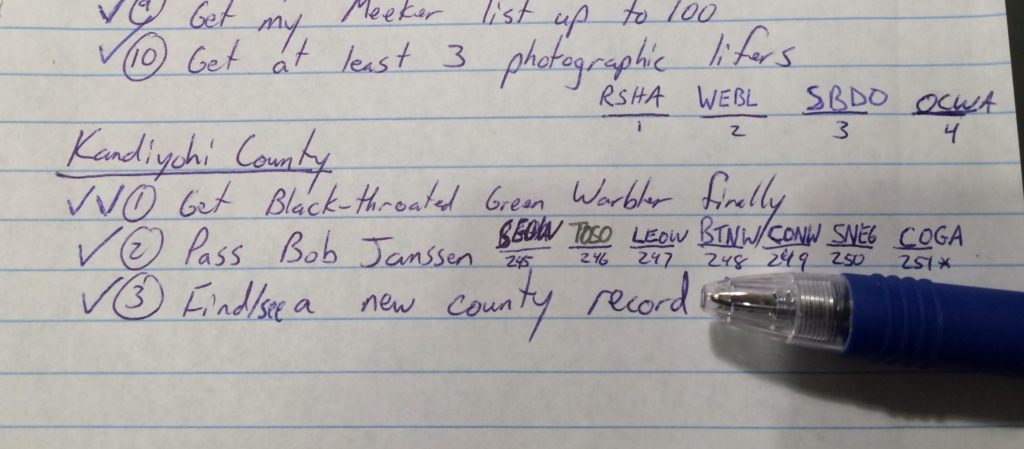Save time. Save money. Save headaches. Save the fun for another day. The longer I bird, the more rewarding I find local birding. Most anyone can see what birds they want if they have the means and time to hop in a car and drive across the state or get on a plane and go someplace new. But not everyone can see what they want in a limited geographical area even if they have all the time and money in the world. Racking up the numbers in the near-perfect 24×36 mile rectangle that is Kandiyohi County is tough. While I haven’t jumped on the popular 5-Mile Radius bandwagon, I do take my birding pretty seriously in these 864 square miles. Birding a relatively small area makes the victories all the sweeter and the misses even more anguishing. Case in point was an Eastern Whip-poor-will found by Dan Orr on April 30 in the far NW corner of the county. Dan found the bird during the day surprisingly, and not surprisingly, I was tied up with shuttling kids around to their activities. I couldn’t make the 40-minute drive until dark, which is okay considering hearing a nightjar is much more probable than seeing one. Joel Schmidt was on the scene before me having no luck finding it. Then, two minutes before I arrived, he heard it. I stayed on over an hour without hearing a whip or a will. Ugh.
Yet another stinging miss was a Summer Tanager in Randy Frederickson’s yard in May of 2017 while I was across the country. I literally got the news just after landing in Arizona. Talk about bad timing. All I had to cling to was a thin hope of another one based on Randy having seen this species in his yard a few times over the last couple decades. It turns out that my hope was not that thin. History repeated itself almost exactly a year later, except I was in the right place at the right time for once to get #258. Twice I’ve made long-distance car chases for this species, and here I had one just across town. Sadly, that story has repeated itself all too often for me with other species.
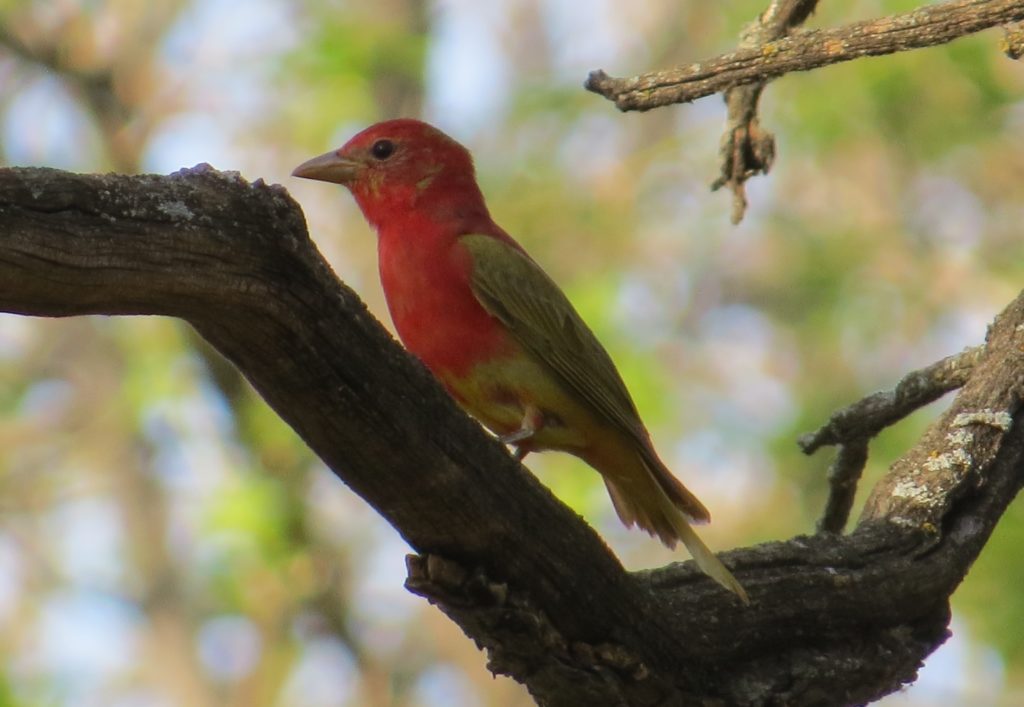
Not long after I enjoyed this Tanager with Randy and his wife in their yard, Randy and I were out birding one morning when I picked up county bird #259*. *This bird, if accepted, would be a second state record. I’ll write more on that if we have success with it being accepted. If not, just forget this paragraph even existed.
Serendipitous rarities at the local level are always received with great joy since they are completely unexpected. You can’t get too upset about the really rare birds you don’t have on your county list. However, it’s the birds that you know show up annually but are still missing from the list that really get under the skin. Two of those for me were Sanderling and Henslow’s Sparrow. My battle plan was to hit up shorebird habitat hard during the end of May to hopefully get a Sanderling, a late migrant. Then, during June, I would make it my daily chore to go beat the innumerable grasslands in the county for a Henslow’s. I was looking forward to this struggle, actually. A few visiting birders laid waste to my perfect plans by finding both my Henslow’s AND my Sanderling for me in the SAME day!
County listing gurus, Andy Nyhus and Dedrick Benz, answered my case-of-beer promotion for any non-county resident that finds me a new Kandiyohi bird when they dug up a Henslow’s Sparrow on territory in the far SE corner of the county. It was a bittersweet #260–good to finally get it, but now my June birding plans were in shambles.
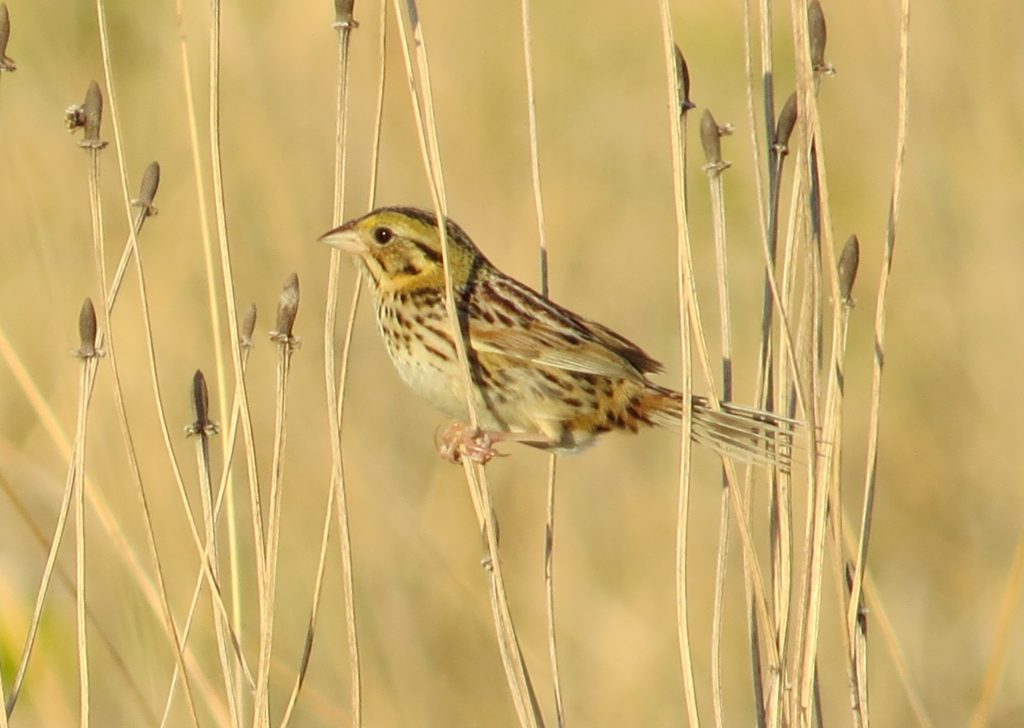 I have wanted this Sparrow for a long time. The last time one was in the county was in 2013, my first summer of birding. I did try for that one, but I was so green that I didn’t really know how to try. Plus I later found out that I was in the wrong spot by like a quarter mile. Needless to say, with this year’s find I immediately raced down to that corner of the county, making me slightly late for meeting up with a friend that morning. Getting the bird was a cinch as it could be heard from the parking lot. I spent a little time with it and then raced back to my meeting. When that meeting ended at noon, I promptly went to the liquor store to make good on a promise. I made my purchase but was disappointed to find out that Andy and Dedrick were no longer in the county to collect payment and had vanished like the DeLorean, leaving fiery trails of good birds for others to marvel at. Two of those birds were some Sanderlings and Ruddy Turnstones that same afternoon on a beach at Lake Minnewaska in neighboring Pope County. The find actually pushed me out the door that very same day to start checking similar beaches in this county. I checked several but did not go to the beach at Green Lake in Spicer. Though I thought of it, I instead went to lakes to the south. It’s a good thing that county-listing expert, Herb Dingmann, had the same hunch after ticking Andy and Dedrick’s Pope finds. He did stop at Green Lake and found the same pair of species! Twenty minutes after his call, Steve and I were on site, enjoying our latest county bird. This was #261 for me.
I have wanted this Sparrow for a long time. The last time one was in the county was in 2013, my first summer of birding. I did try for that one, but I was so green that I didn’t really know how to try. Plus I later found out that I was in the wrong spot by like a quarter mile. Needless to say, with this year’s find I immediately raced down to that corner of the county, making me slightly late for meeting up with a friend that morning. Getting the bird was a cinch as it could be heard from the parking lot. I spent a little time with it and then raced back to my meeting. When that meeting ended at noon, I promptly went to the liquor store to make good on a promise. I made my purchase but was disappointed to find out that Andy and Dedrick were no longer in the county to collect payment and had vanished like the DeLorean, leaving fiery trails of good birds for others to marvel at. Two of those birds were some Sanderlings and Ruddy Turnstones that same afternoon on a beach at Lake Minnewaska in neighboring Pope County. The find actually pushed me out the door that very same day to start checking similar beaches in this county. I checked several but did not go to the beach at Green Lake in Spicer. Though I thought of it, I instead went to lakes to the south. It’s a good thing that county-listing expert, Herb Dingmann, had the same hunch after ticking Andy and Dedrick’s Pope finds. He did stop at Green Lake and found the same pair of species! Twenty minutes after his call, Steve and I were on site, enjoying our latest county bird. This was #261 for me.
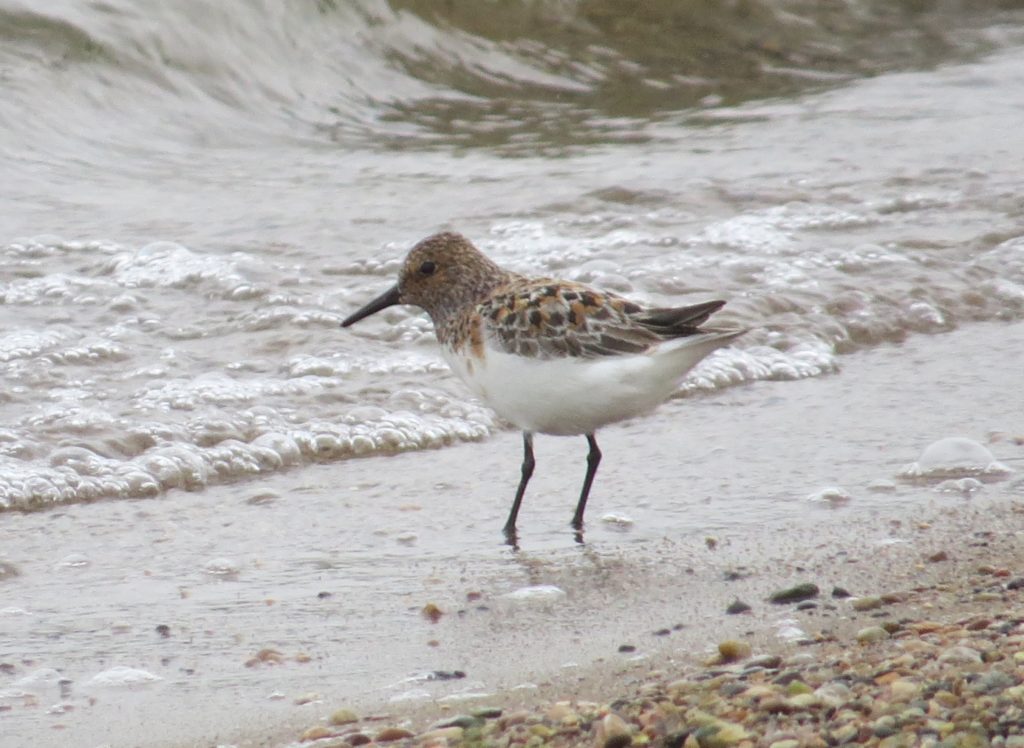
Ruddy Turnstone is not a shabby bird either, only my second in the county.
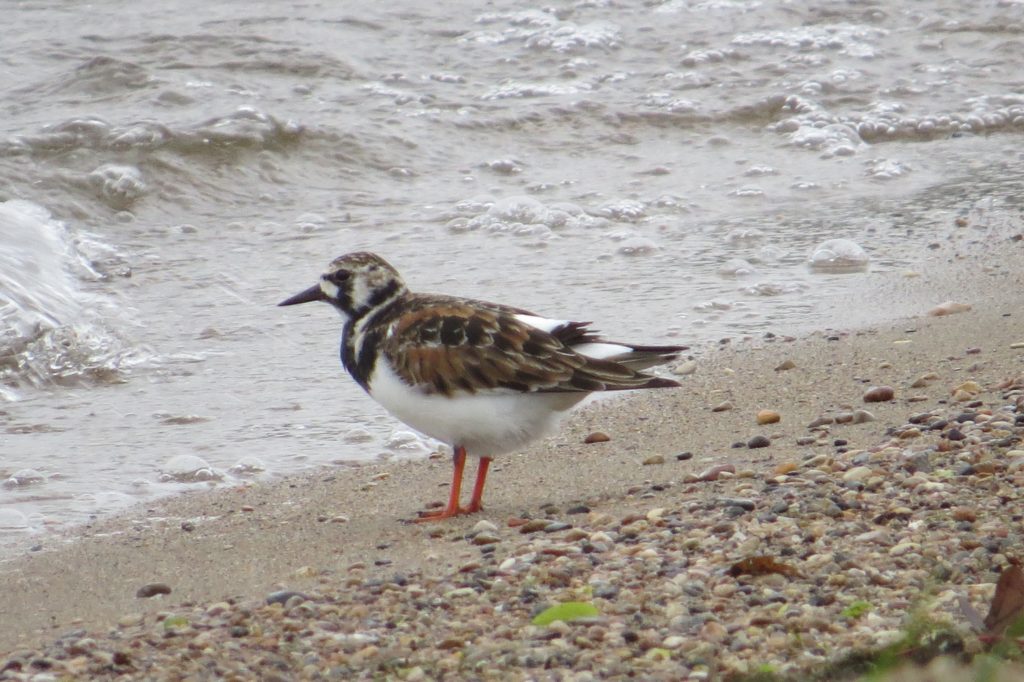
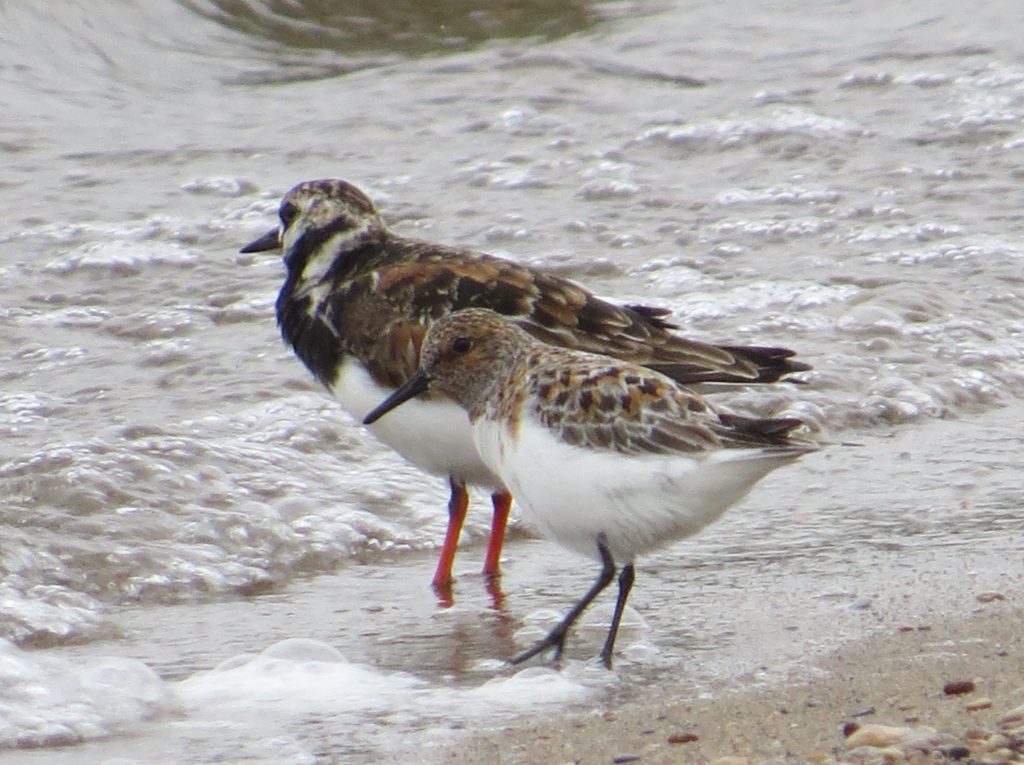
So just like that I was out of birding targets for the immediate future. I almost didn’t know what to do with myself. At my current number for the county, I am essentially waiting on vagrants to show up to get the number higher. There are a couple more regular hold-outs which I will pursue come fall and winter, but what does one do now? I have never understood the appeal of 87-county listing, but maybe this is it how it begins–the local list gets saturated with good birds and one must look across borders for new tics to keep the thrill alive. Or maybe it happens innocently when a slew of good birds shows up at the ponds at work in neighboring Meeker County. The ponds have been drawn down this year making it tidy little hotspot during migration.
A confiding pair of Northern Pintails that hung out for a week was a fun Meeker tic.
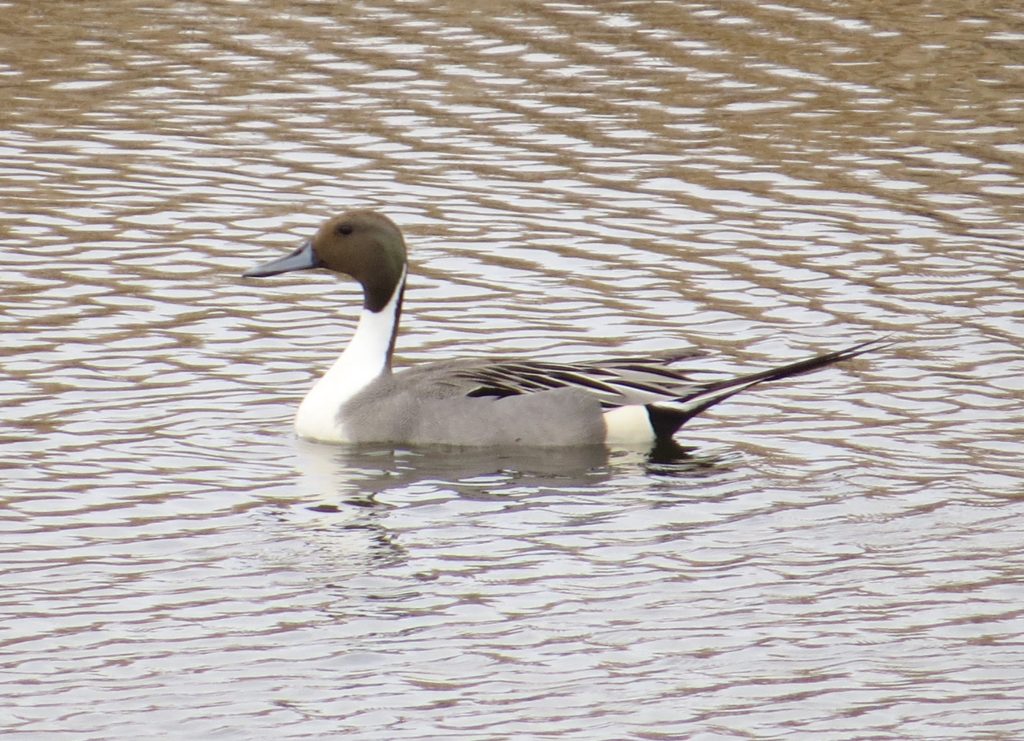 Fun as the Pintails were, nothing could make the Meeker slope more slippery like the 1-2-3 punch of Willet, Snowy Egret, and Caspian Tern. The latter two were seen on the same day as I was hurriedly leaving work to chase the Curlew Sandpiper.
Fun as the Pintails were, nothing could make the Meeker slope more slippery like the 1-2-3 punch of Willet, Snowy Egret, and Caspian Tern. The latter two were seen on the same day as I was hurriedly leaving work to chase the Curlew Sandpiper.
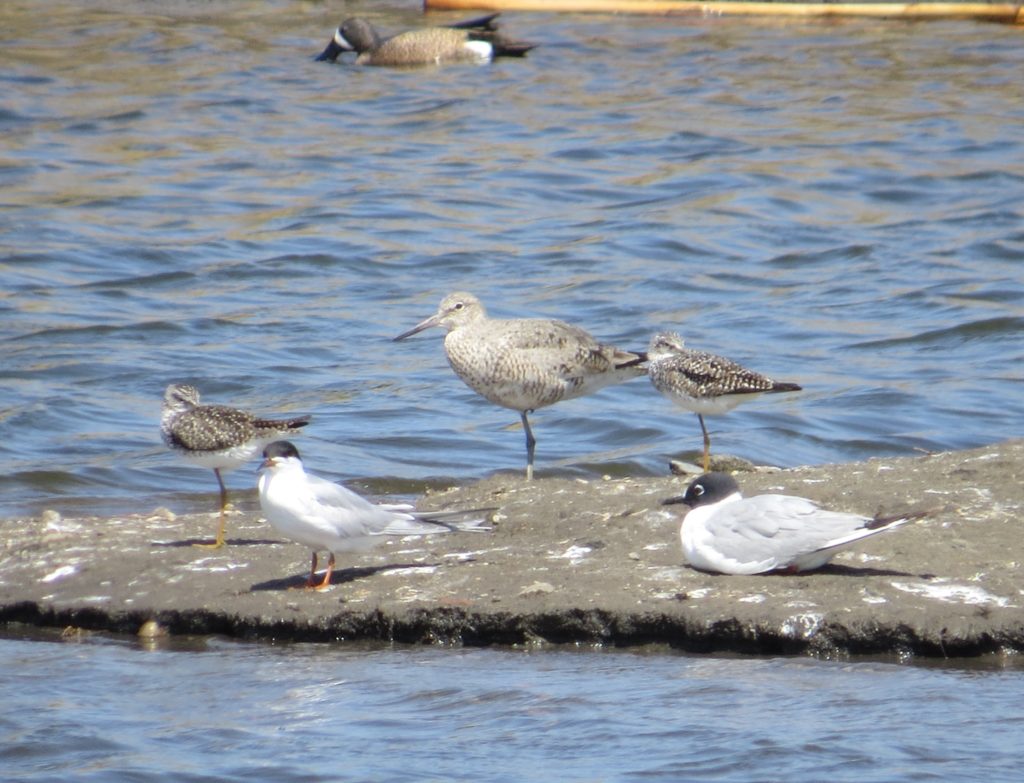 After work one day, coworker and birding buddy Brad Nelson had seen some smaller Egrets fly over and land at the ponds but wasn’t able to investigate. He asked if I could check it out. Though the Curlew Sandpiper was the priority, I told him I could give it a quick once-over. It’s a good thing, too, because Brad’s suspicion on the Egrets was right. This pair of Snowy Egrets became our first eBird flagged rarity for work, and it allowed Brad to tie the record for being #1 in Meeker.
After work one day, coworker and birding buddy Brad Nelson had seen some smaller Egrets fly over and land at the ponds but wasn’t able to investigate. He asked if I could check it out. Though the Curlew Sandpiper was the priority, I told him I could give it a quick once-over. It’s a good thing, too, because Brad’s suspicion on the Egrets was right. This pair of Snowy Egrets became our first eBird flagged rarity for work, and it allowed Brad to tie the record for being #1 in Meeker.
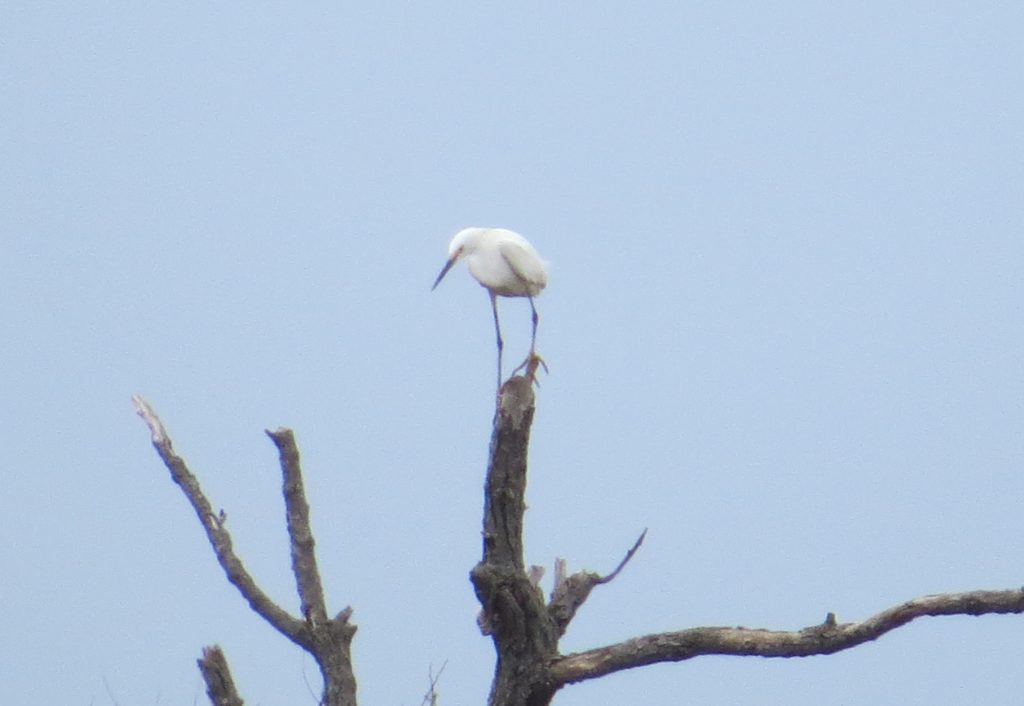 As I scanned the ponds in my haste to get to the Curlew, I nearly missed this Caspian Tern trying to blend in with the Forster’s. Caspian is the better of the two Terns here, and it was the bird that officially crowned Brad Nelson the King of Meeker County. Congrats, Brad!
As I scanned the ponds in my haste to get to the Curlew, I nearly missed this Caspian Tern trying to blend in with the Forster’s. Caspian is the better of the two Terns here, and it was the bird that officially crowned Brad Nelson the King of Meeker County. Congrats, Brad!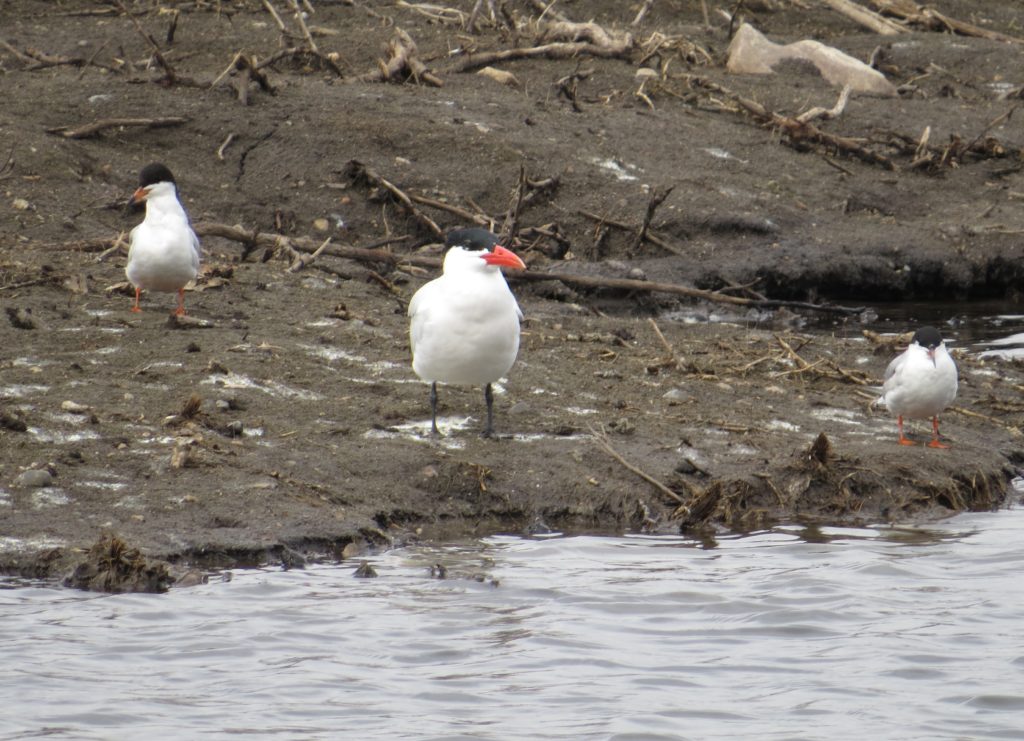 Perhaps the county listing starts innocently with “just a quick trip” 6 miles from the county line to pick up Dan Orr’s Stearns County Mockingbirds.
Perhaps the county listing starts innocently with “just a quick trip” 6 miles from the county line to pick up Dan Orr’s Stearns County Mockingbirds.
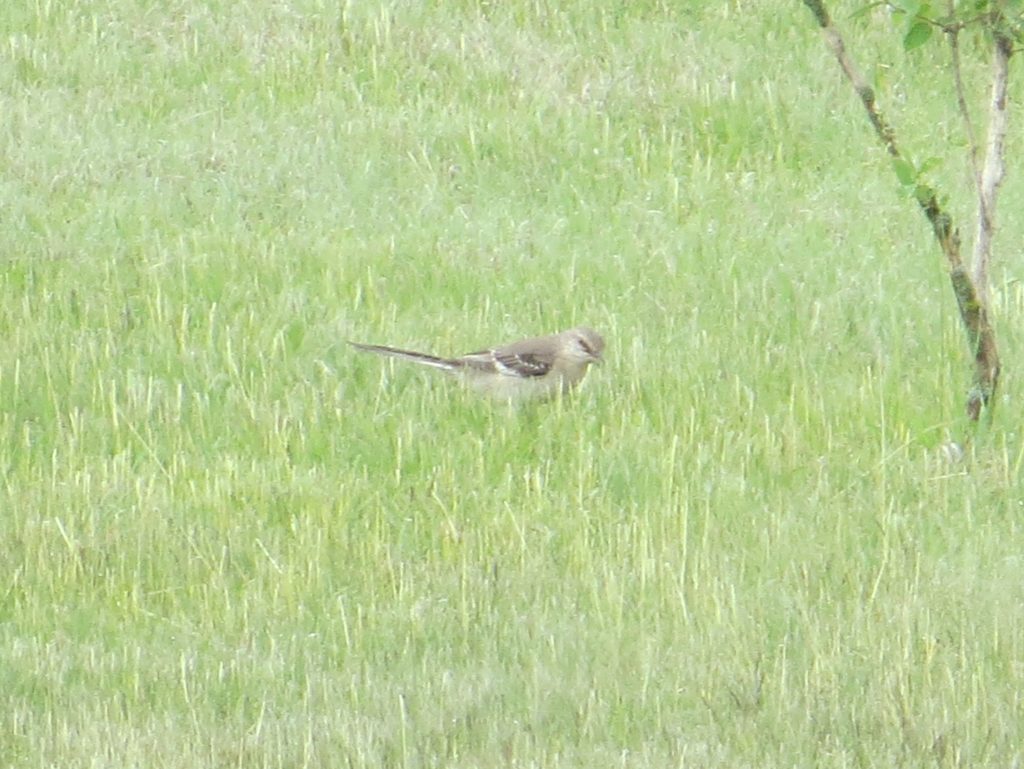 Or maybe it happens when you are driving down the Kandi-Swift County line road and find yourself staring at the Swift side of the line. It’s a good thing I did because it netted me my first real good looks and photos of a Sora. This felt like a lifer, honestly.
Or maybe it happens when you are driving down the Kandi-Swift County line road and find yourself staring at the Swift side of the line. It’s a good thing I did because it netted me my first real good looks and photos of a Sora. This felt like a lifer, honestly.
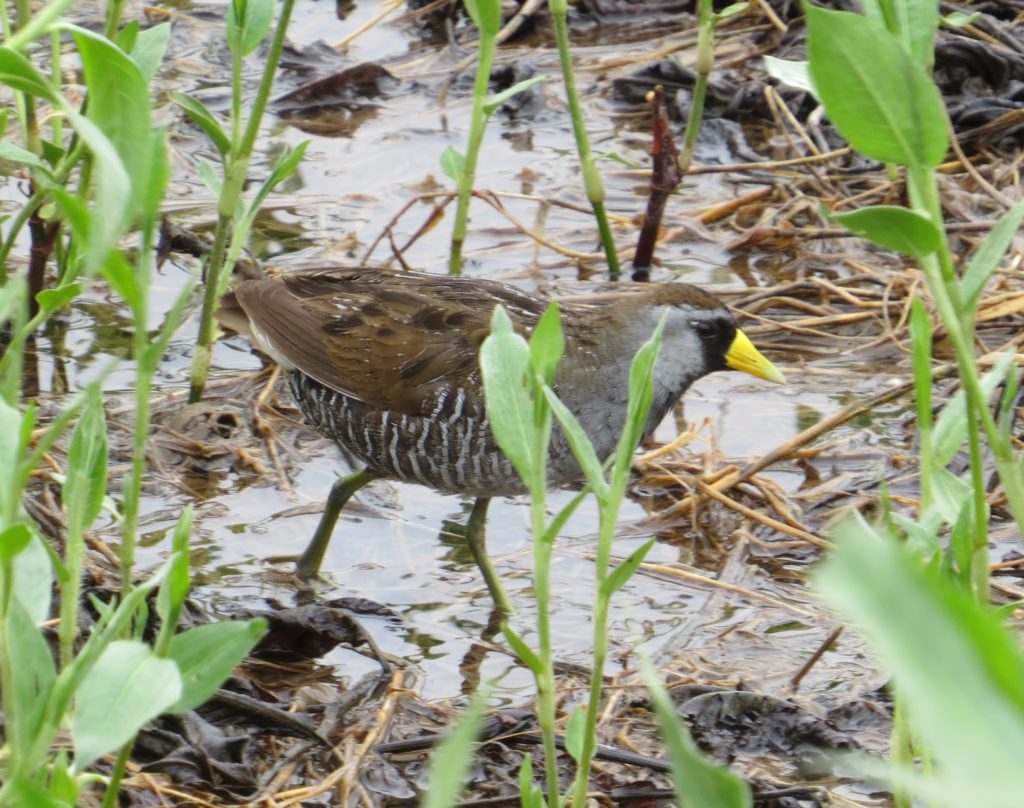 The birding action is too hot at home to be worried about other counties. I’m not and don’t anticipate to be an active 87-lister, though it is fun to add tics when I travel. This spring/summer has produced an abundance of good birds right here in Kandiyohi County, even if they were not new to me. In fact, for the first time ever, I managed to go above the 200 mark in a single year with half the year still to go! Here are some of the more fun finds I’ve encountered along the way.
The birding action is too hot at home to be worried about other counties. I’m not and don’t anticipate to be an active 87-lister, though it is fun to add tics when I travel. This spring/summer has produced an abundance of good birds right here in Kandiyohi County, even if they were not new to me. In fact, for the first time ever, I managed to go above the 200 mark in a single year with half the year still to go! Here are some of the more fun finds I’ve encountered along the way.
Perhaps winning the award for Biggest Surprise was this very late Snowy Owl (April 26!). I had chased some Short-eared Owls (a more expected species at this time) and instead found this guy. Every Minnesota birder will tell you they have looked at countless Wal-Mart bags in fields thinking they had a Snowy Owl. Given the time period, I was expecting this white mass to actually be a Wal-Mart bag. Nope. This was my fifth Kandiyohi Snowy Owl of this past winter/spring.
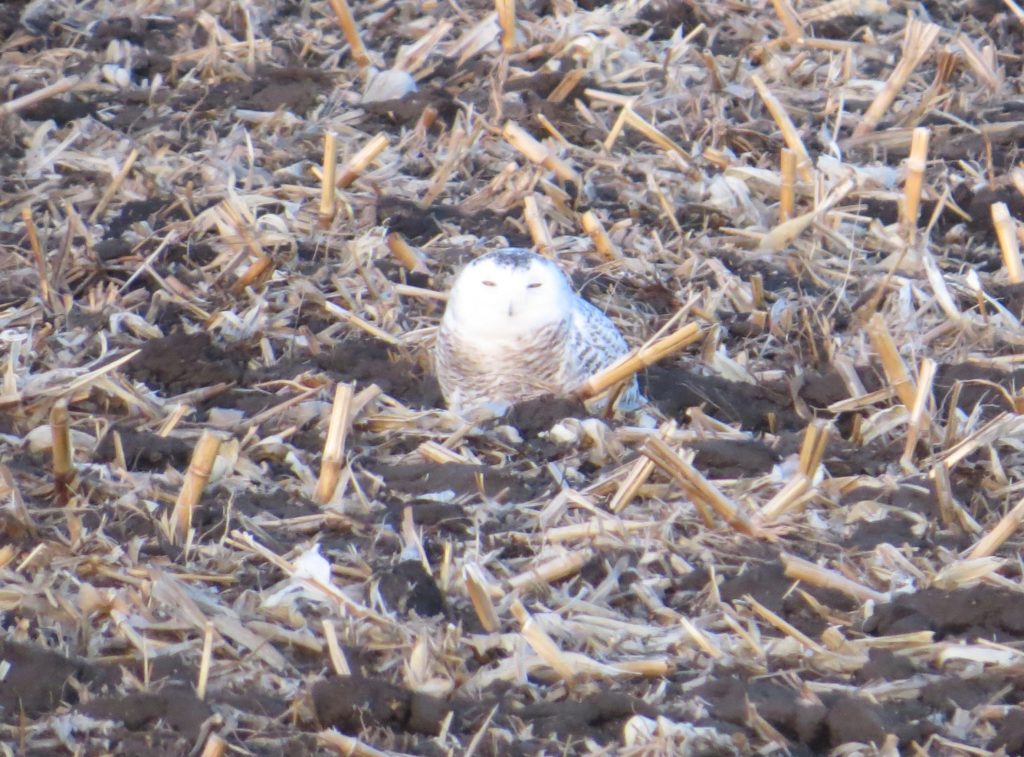 Another, “What’s that doing here right now?” bird was a presumed nesting pair of White-winged Crossbills this spring found by Steve Gardner in the same place I found a flock last November.
Another, “What’s that doing here right now?” bird was a presumed nesting pair of White-winged Crossbills this spring found by Steve Gardner in the same place I found a flock last November.
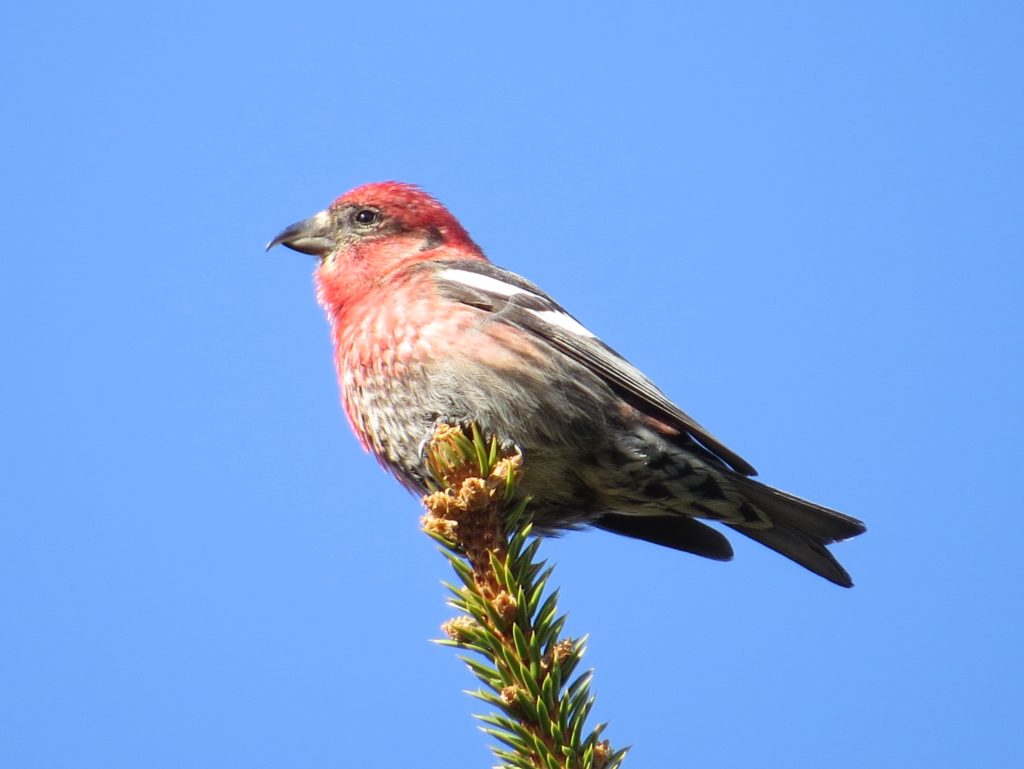
It was good to connect with two different Red-headed Woodpeckers in the county this year already–not a bird to be taken for granted here by any means.
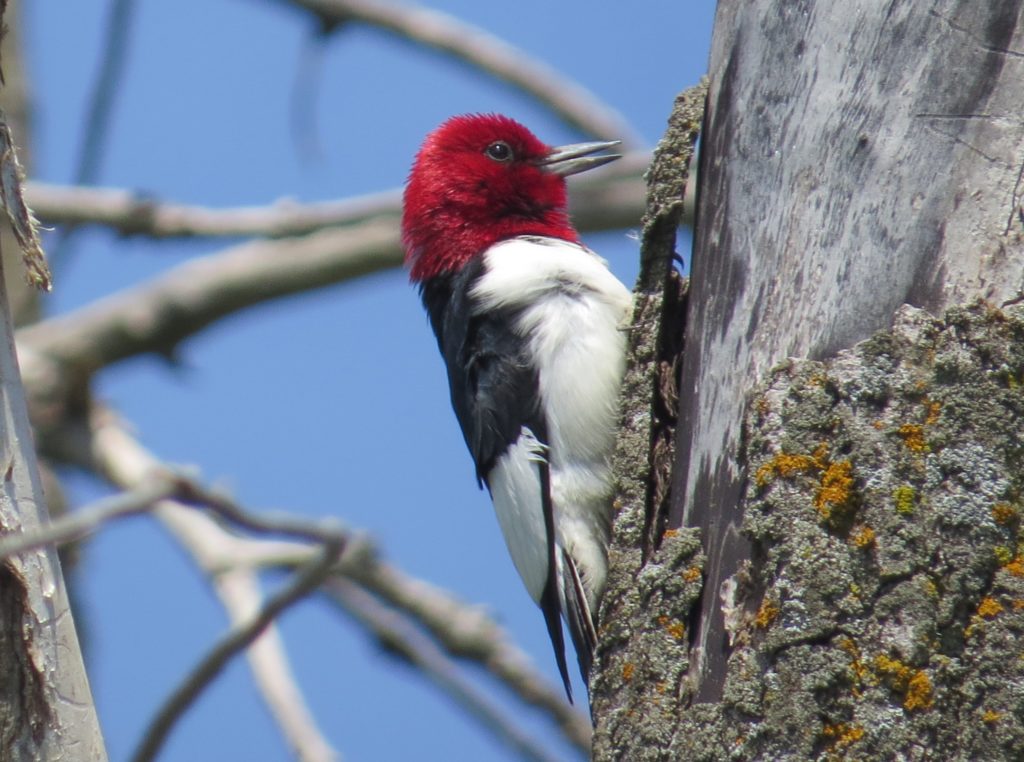 Though not a rare bird for Kandiyohi County, it’s always good to bump into a Scarlet Tanager too.
Though not a rare bird for Kandiyohi County, it’s always good to bump into a Scarlet Tanager too.
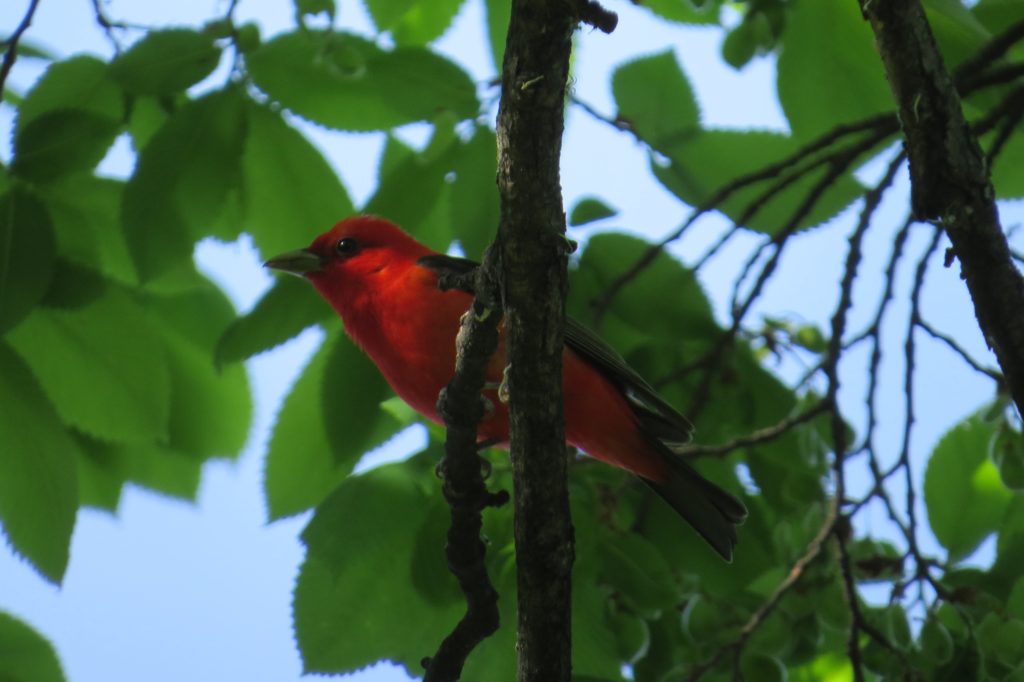 This spring/summer I have many county Seconds, meaning I’ve seen/heard a bird for the second time ever in the county. I was pretty thrilled to discover my second Loggerhead Shrike for the county. I’ve only seen a handful in the entire state, so this was pretty special.
This spring/summer I have many county Seconds, meaning I’ve seen/heard a bird for the second time ever in the county. I was pretty thrilled to discover my second Loggerhead Shrike for the county. I’ve only seen a handful in the entire state, so this was pretty special.
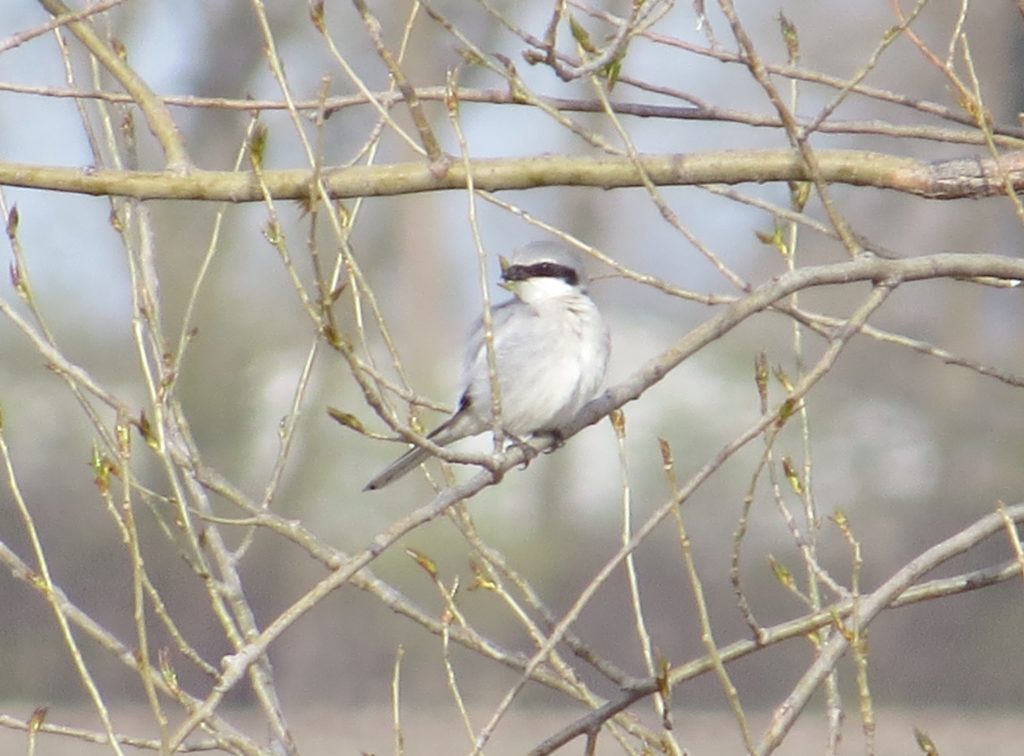
Speaking of only seeing a handful of a species in the state, another Second happened when I was looking for my county Sanderling at the Blomkest sewage ponds. I kicked up a pair of Gray Partridge as I hiked the barbwire perimeter. The exact same scenario played out for me in this spot just two years ago.
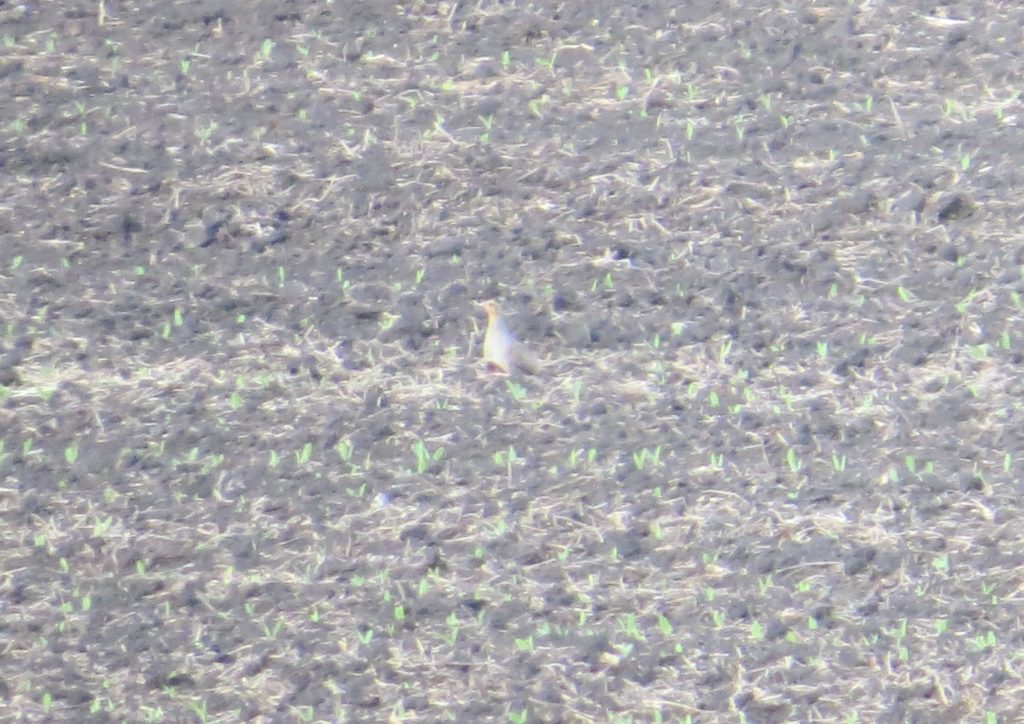
My favorite Second occurred when I was looking for a year bird, the Orchard Oriole. The Orchard was not a Second, but still a fun bird.
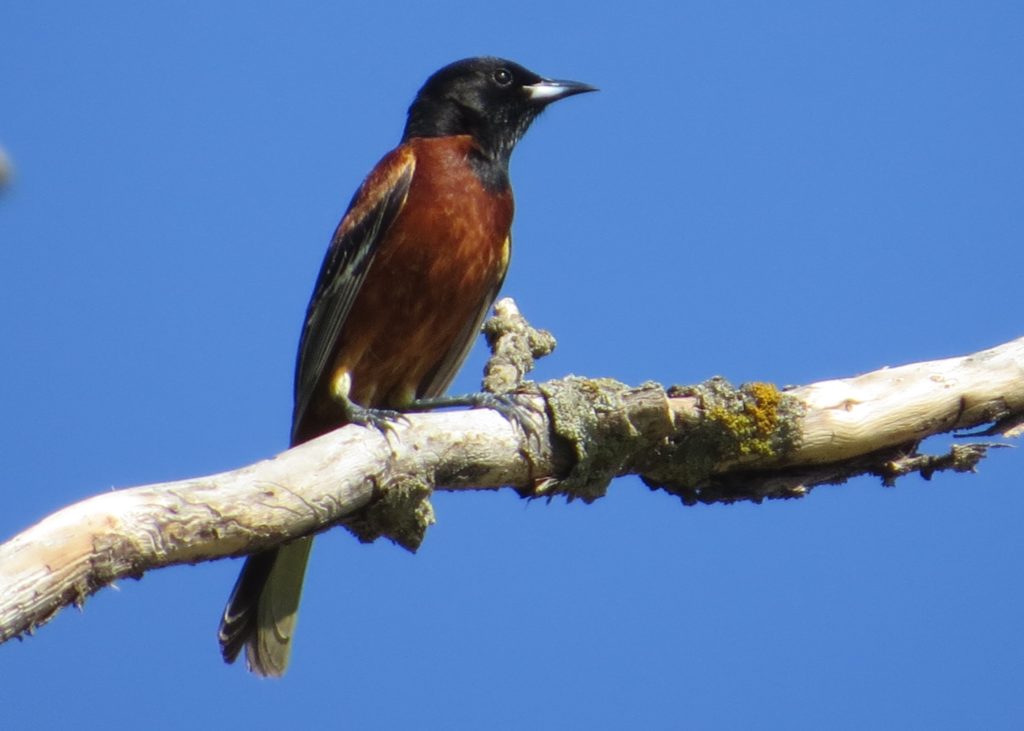 I saw this Orchard Oriole along a road between two gravel pits that I have walked many times in the past looking for a county record Blue Grosbeak. Since the record was found last summer and since it’s still not Blue Grosbeak season in my mind, I was not even thinking about that species. The thing about birding is that good finds sometimes happen when you least expect them. I was pretty pumped to finally (after all these years) get a personally found second Kandiyohi County record Blue Grosbeak.
I saw this Orchard Oriole along a road between two gravel pits that I have walked many times in the past looking for a county record Blue Grosbeak. Since the record was found last summer and since it’s still not Blue Grosbeak season in my mind, I was not even thinking about that species. The thing about birding is that good finds sometimes happen when you least expect them. I was pretty pumped to finally (after all these years) get a personally found second Kandiyohi County record Blue Grosbeak.
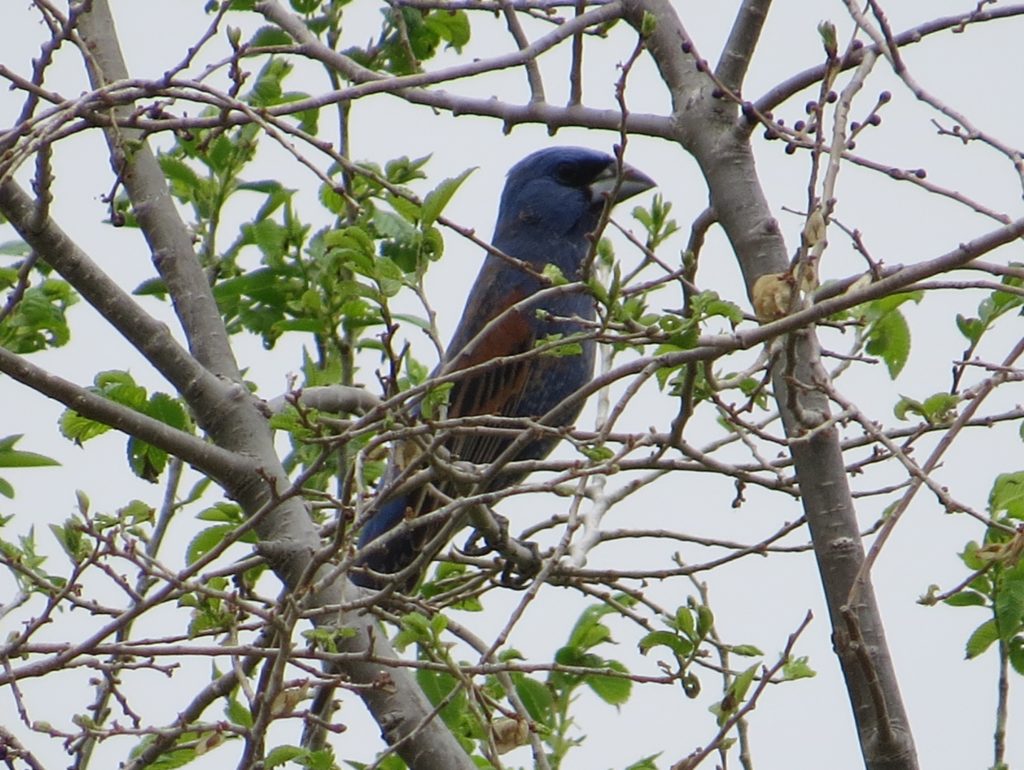 I didn’t have to wait long to get my second county Summer Tanager. County-listing legends, John Hockema and Chris Hockema, found this first-year male at Mt. Tom at Sibley State Park. Incredibly, other observers found a second Summer Tanager with this one.
I didn’t have to wait long to get my second county Summer Tanager. County-listing legends, John Hockema and Chris Hockema, found this first-year male at Mt. Tom at Sibley State Park. Incredibly, other observers found a second Summer Tanager with this one.
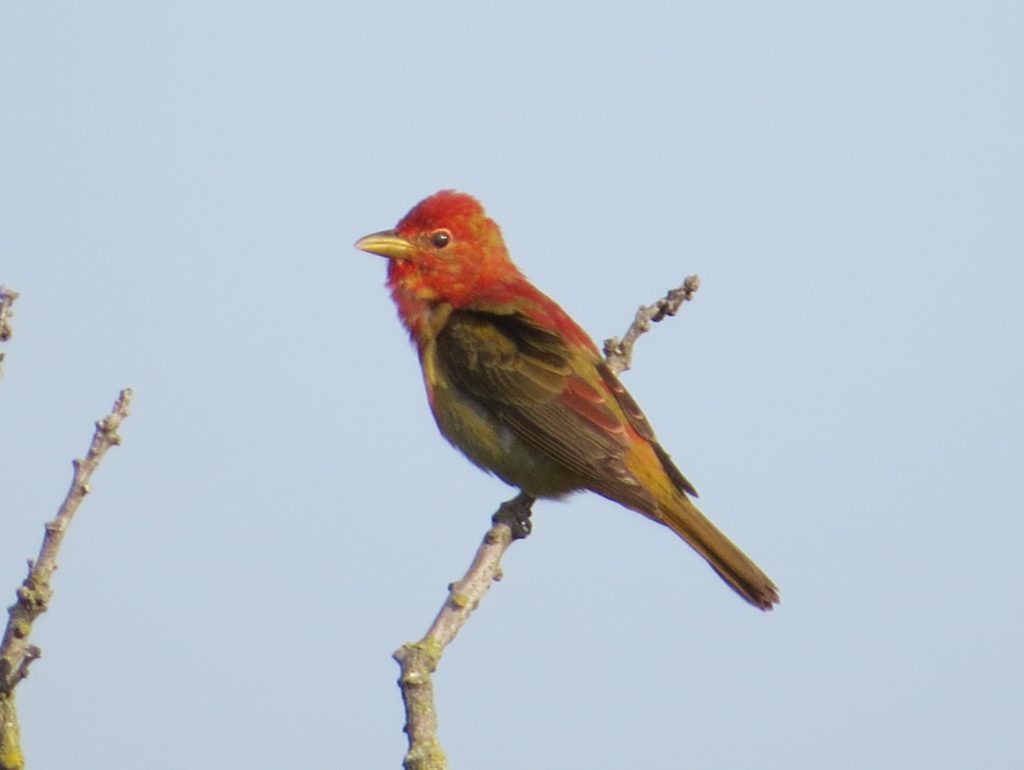 The Hockema Bros. followed this up immediately with another incredible find at Mt. Tom–my second county Eastern Towhee.
The Hockema Bros. followed this up immediately with another incredible find at Mt. Tom–my second county Eastern Towhee.
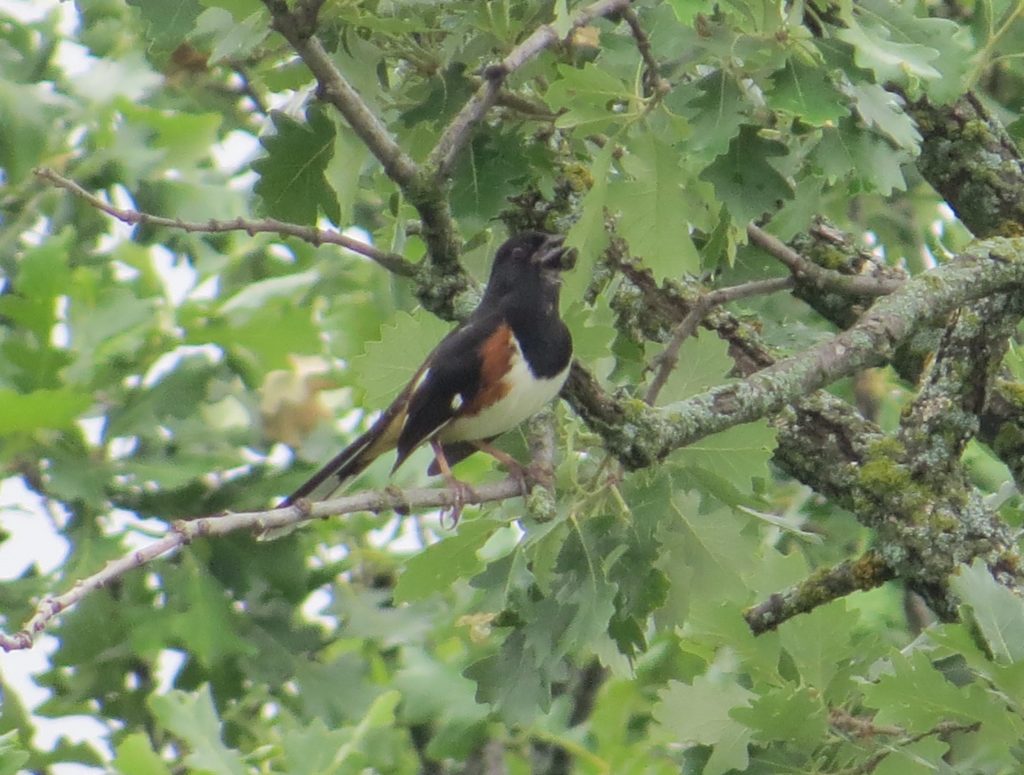 Continuing this list of Seconds was my second county observation and first county visual of a Yellow-billed Cuckoo in Randy’s magical yard.
Continuing this list of Seconds was my second county observation and first county visual of a Yellow-billed Cuckoo in Randy’s magical yard.
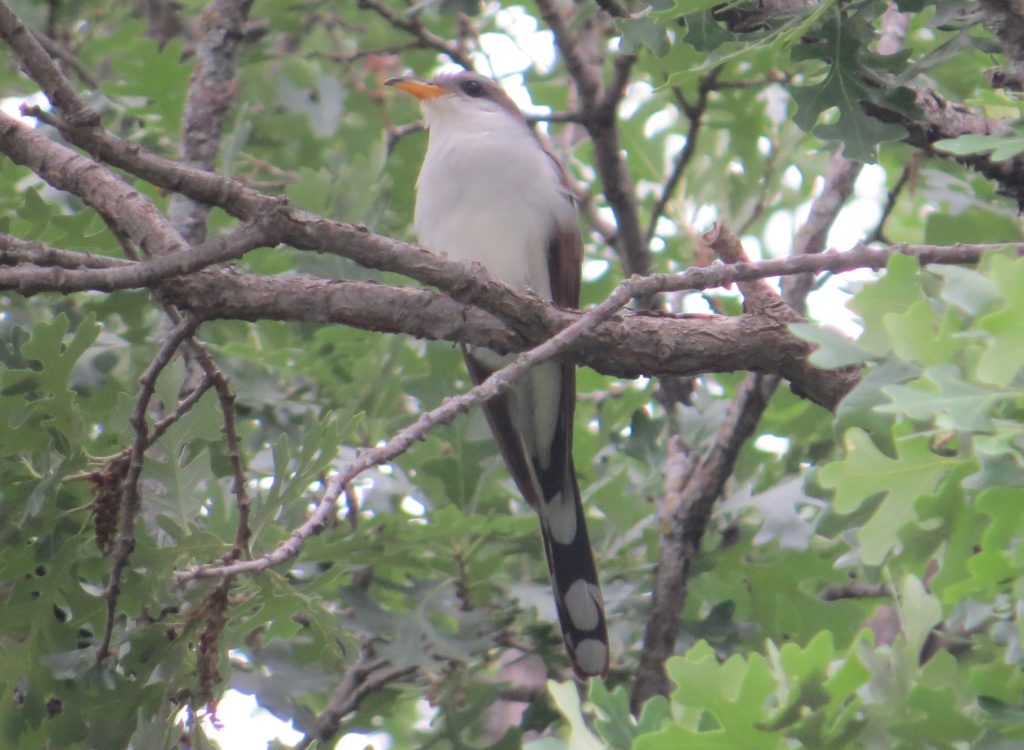 This Hudsonian Godwit was my fourth observation of this species in the county, but this was only my second time seeing one in breeding plumage.
This Hudsonian Godwit was my fourth observation of this species in the county, but this was only my second time seeing one in breeding plumage.
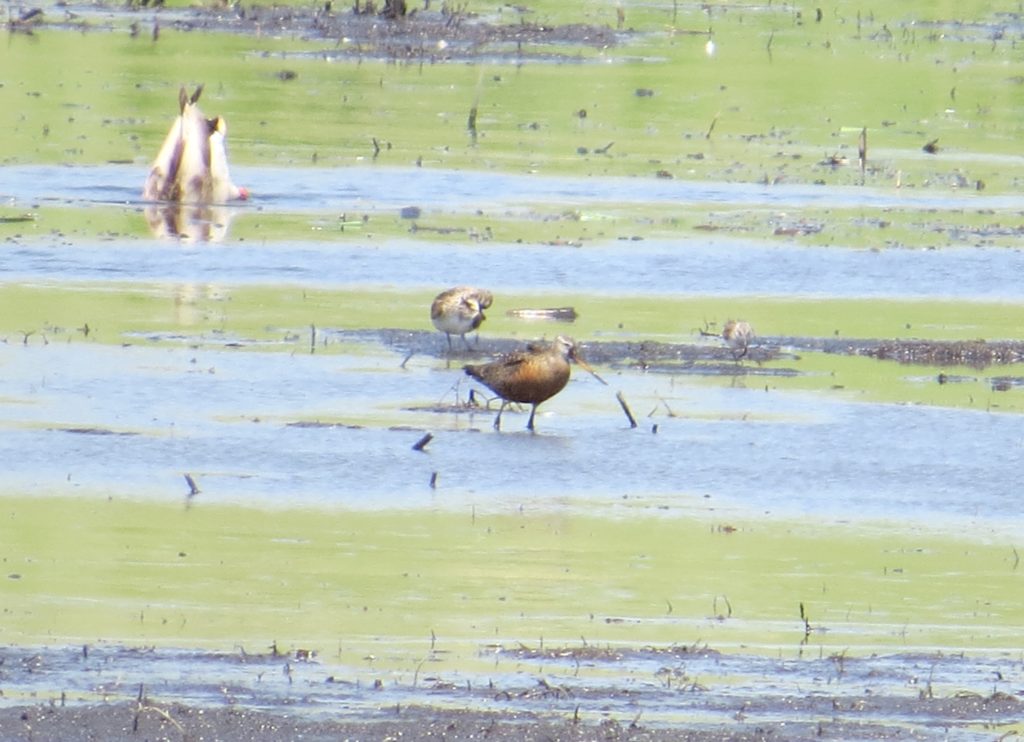 Birding locally this spring has been absolutely incredible and proof that you really don’t have to go far to find great things. Other fun finds on the road to 200 and beyond included Least Bitterns, Eastern Meadowlarks, Lark Sparrows, a Cerulean Warbler, and more. Even the new yard has had some great action with Common Nighthawks circling over, Purple Finches stopping by the feeders, and a Wood Thrush waking me up one morning with its serenade.
Birding locally this spring has been absolutely incredible and proof that you really don’t have to go far to find great things. Other fun finds on the road to 200 and beyond included Least Bitterns, Eastern Meadowlarks, Lark Sparrows, a Cerulean Warbler, and more. Even the new yard has had some great action with Common Nighthawks circling over, Purple Finches stopping by the feeders, and a Wood Thrush waking me up one morning with its serenade.
Birding has definitely slowed down the last couple weeks, which is a good thing so I can work on getting caught up on this blog and on various non-birding projects. Next post (posts?) will highlight an incredible birding trip Steve and I took to Arizona back in April.

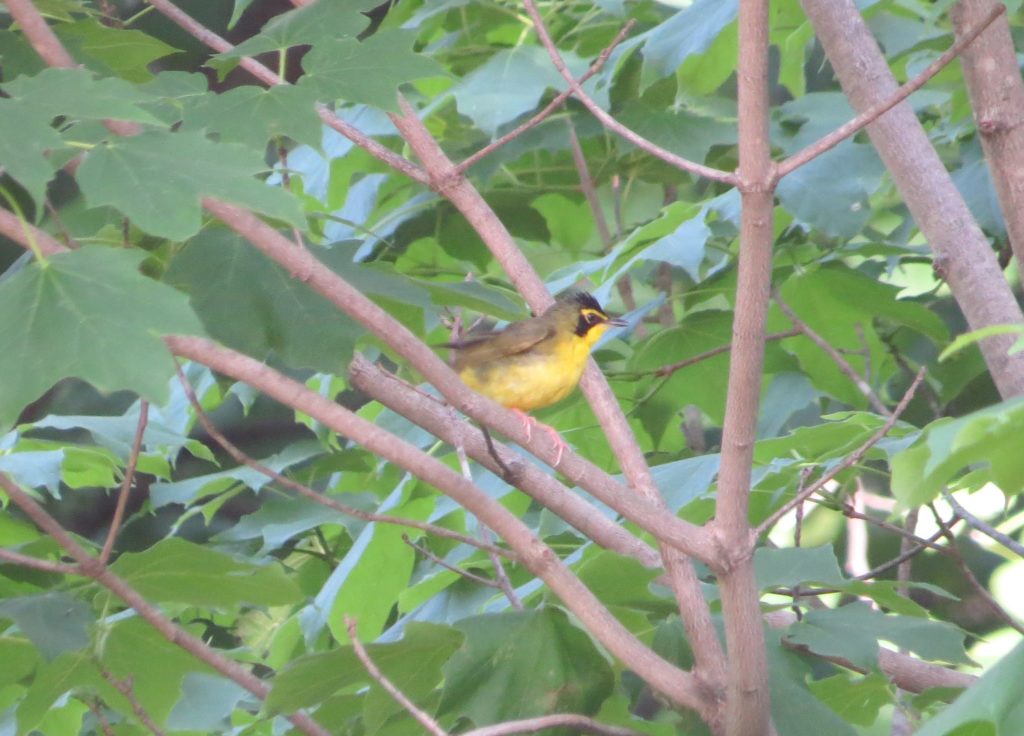
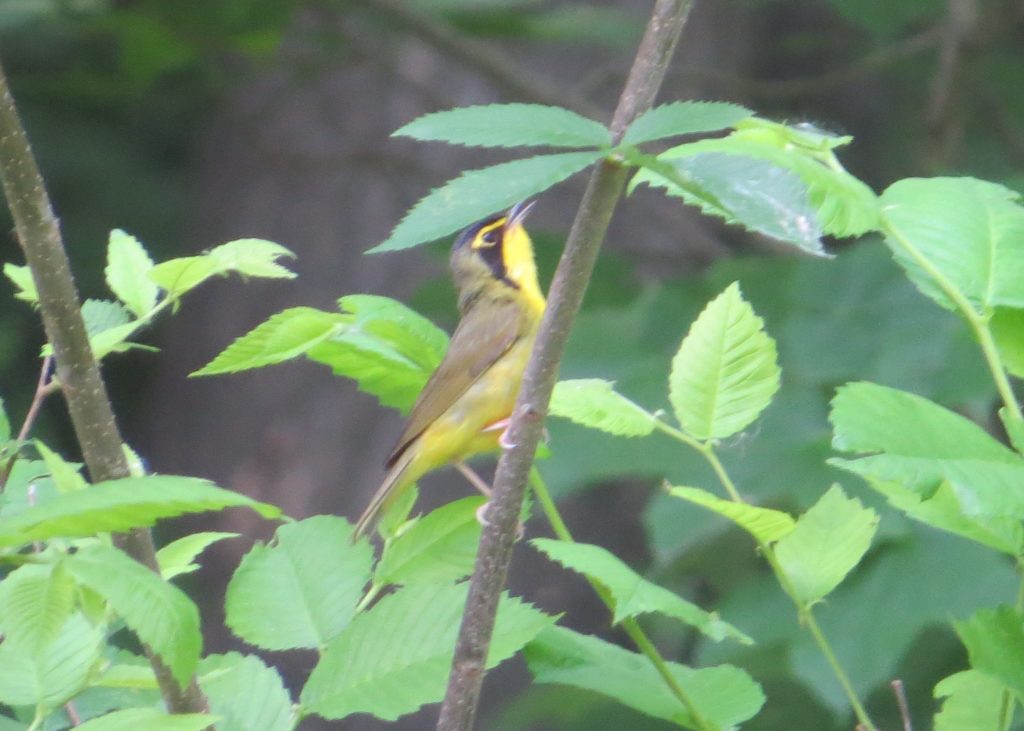
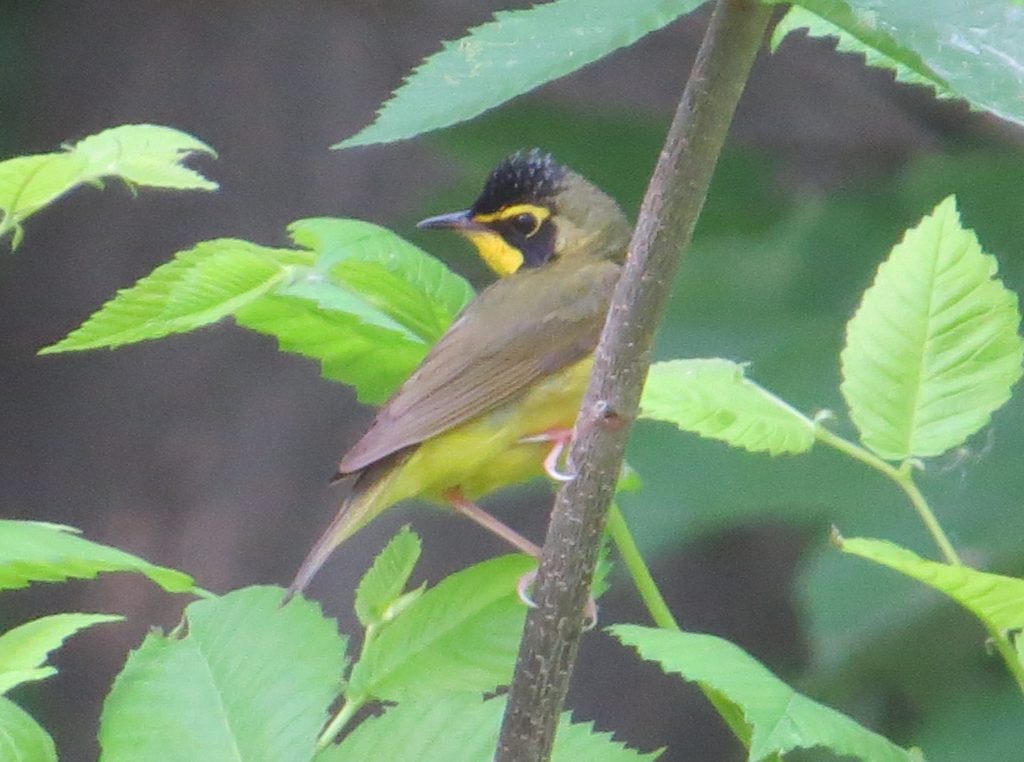 I am still shocked I got to see this Warbler after dipping in the original spot. Getting a photo was a wonderful bonus as I never counted on getting one in the first place even when I thought the bird would be a cinch. That’s birding for you, though. It’s never over until it’s over and doesn’t always play out like you think it will. This was a good reminder to bird hard to the end and expect the unexpected.
I am still shocked I got to see this Warbler after dipping in the original spot. Getting a photo was a wonderful bonus as I never counted on getting one in the first place even when I thought the bird would be a cinch. That’s birding for you, though. It’s never over until it’s over and doesn’t always play out like you think it will. This was a good reminder to bird hard to the end and expect the unexpected.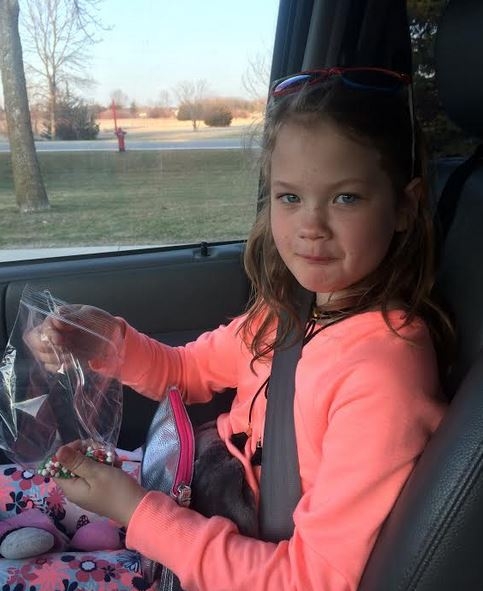
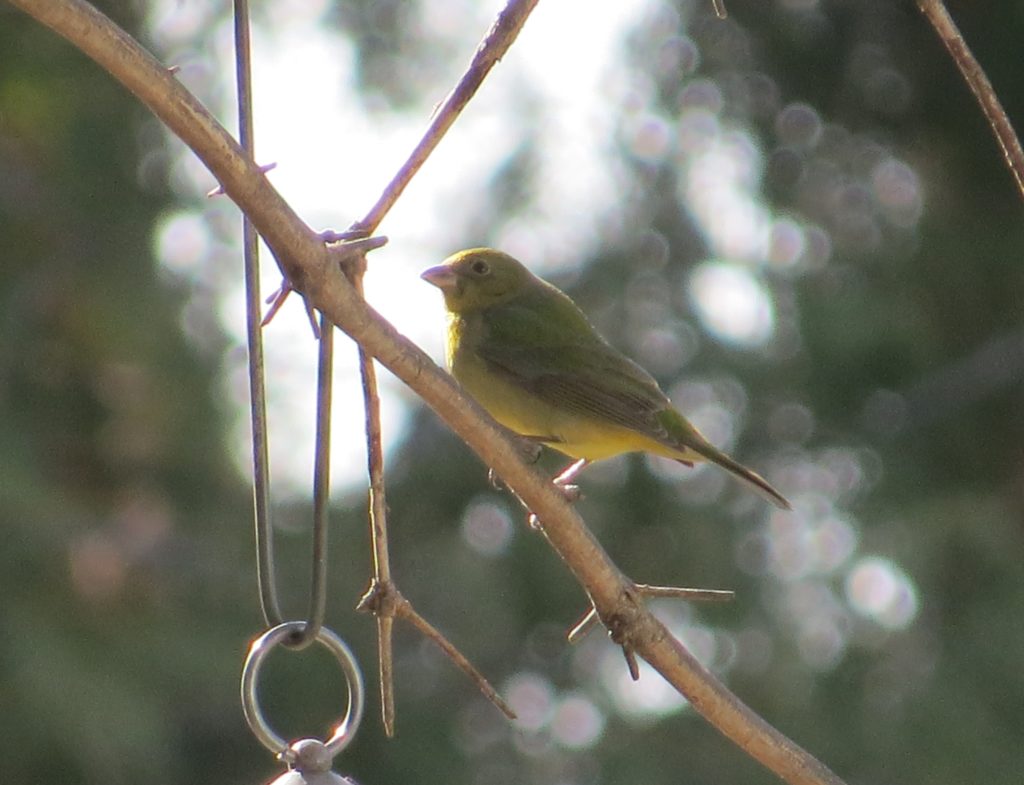
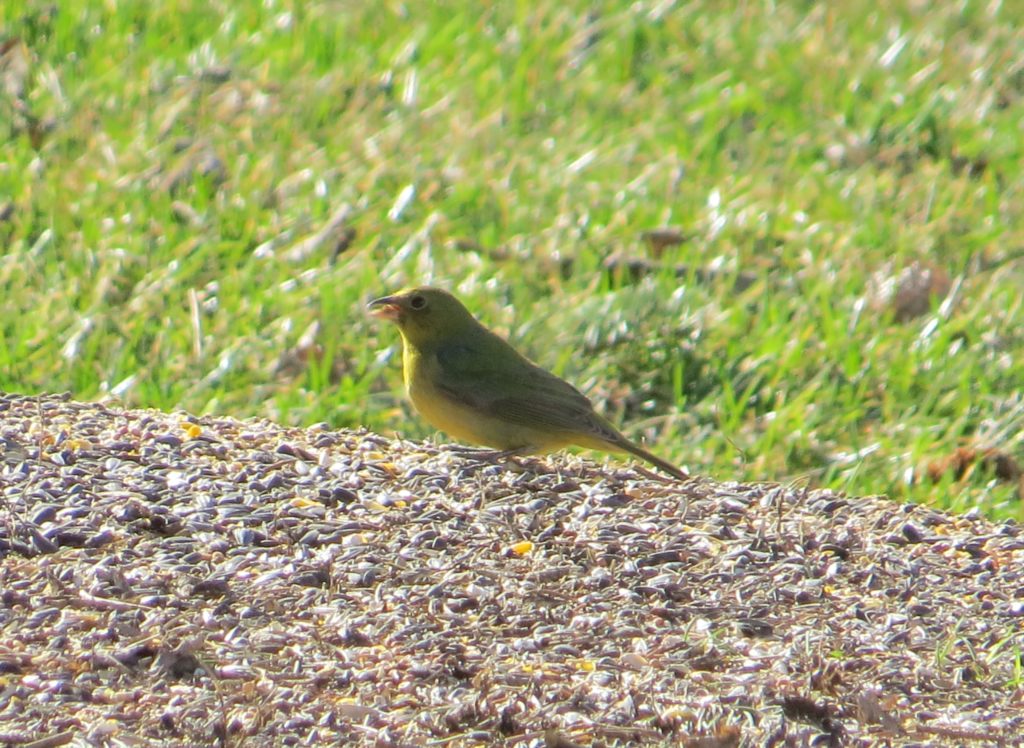
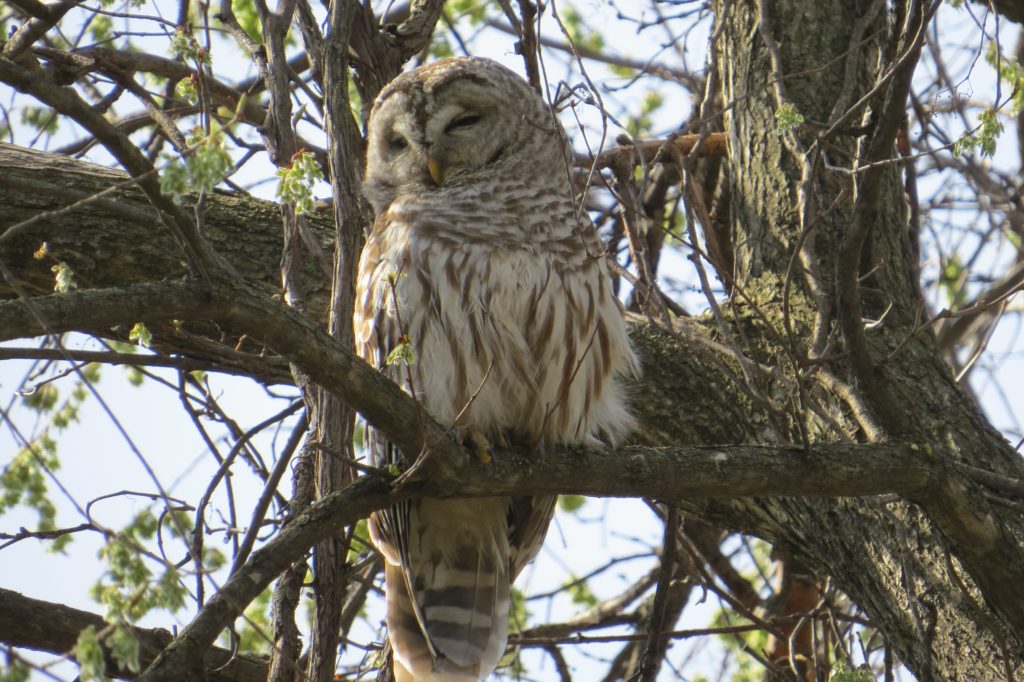
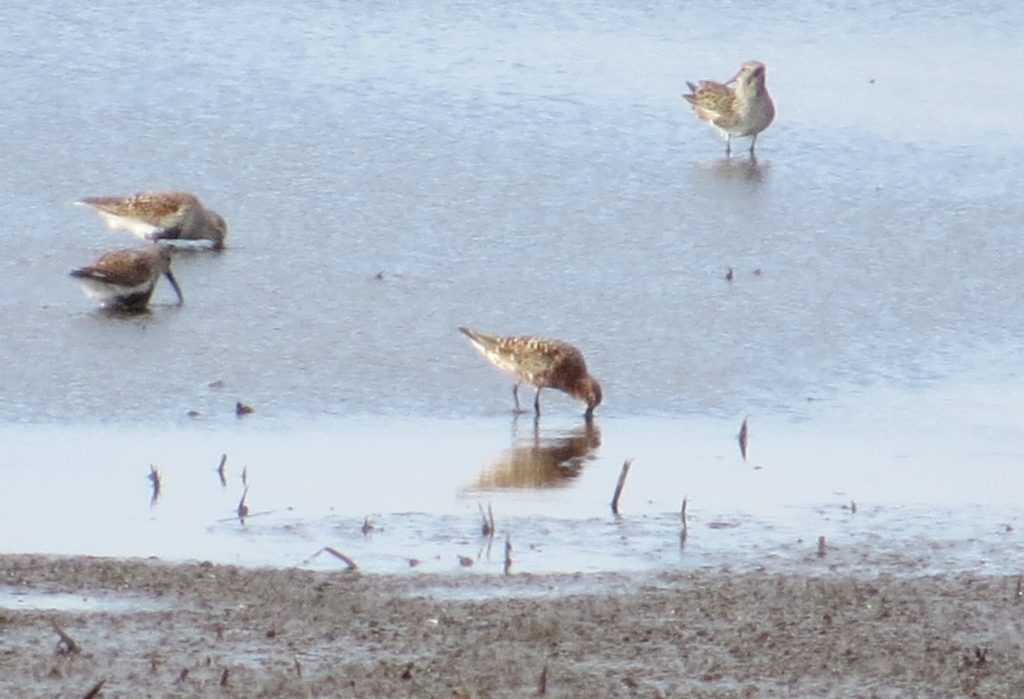
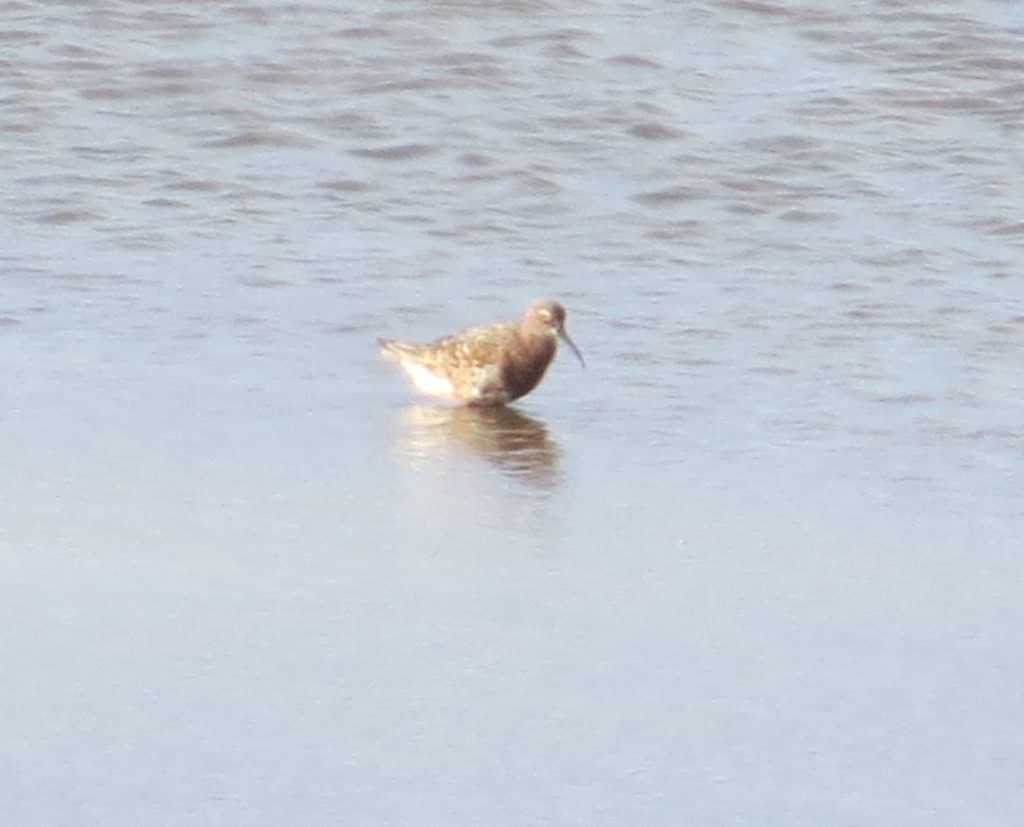 This story gets a little more interesting than just a really rare bird. There is a county listing married couple in the state, Barb and Denny Martin, who travel the entire state amassing tics everywhere they go. They’ve been at this awhile and have a very impressive total of 399 and 400 MN birds. The discrepancy bird? Curlew Sandpiper. Needless to say, they came screaming in from the Twin Cities and got on site while we were there. I wasn’t paying attention when Barb was telling someone else the backstory on how the discrepancy came to be, but regardless, there can be peace in the Martin household now that everything is tied up at 400 apiece.
This story gets a little more interesting than just a really rare bird. There is a county listing married couple in the state, Barb and Denny Martin, who travel the entire state amassing tics everywhere they go. They’ve been at this awhile and have a very impressive total of 399 and 400 MN birds. The discrepancy bird? Curlew Sandpiper. Needless to say, they came screaming in from the Twin Cities and got on site while we were there. I wasn’t paying attention when Barb was telling someone else the backstory on how the discrepancy came to be, but regardless, there can be peace in the Martin household now that everything is tied up at 400 apiece.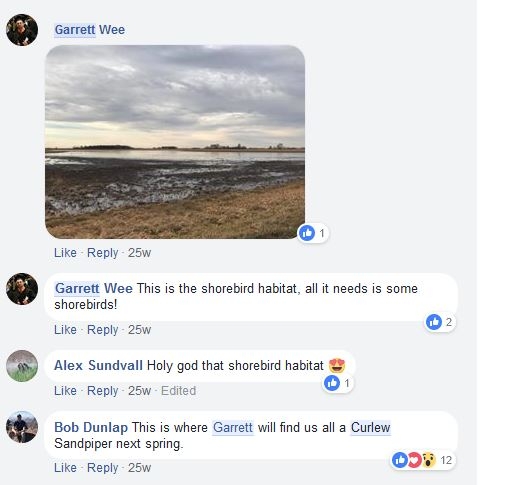
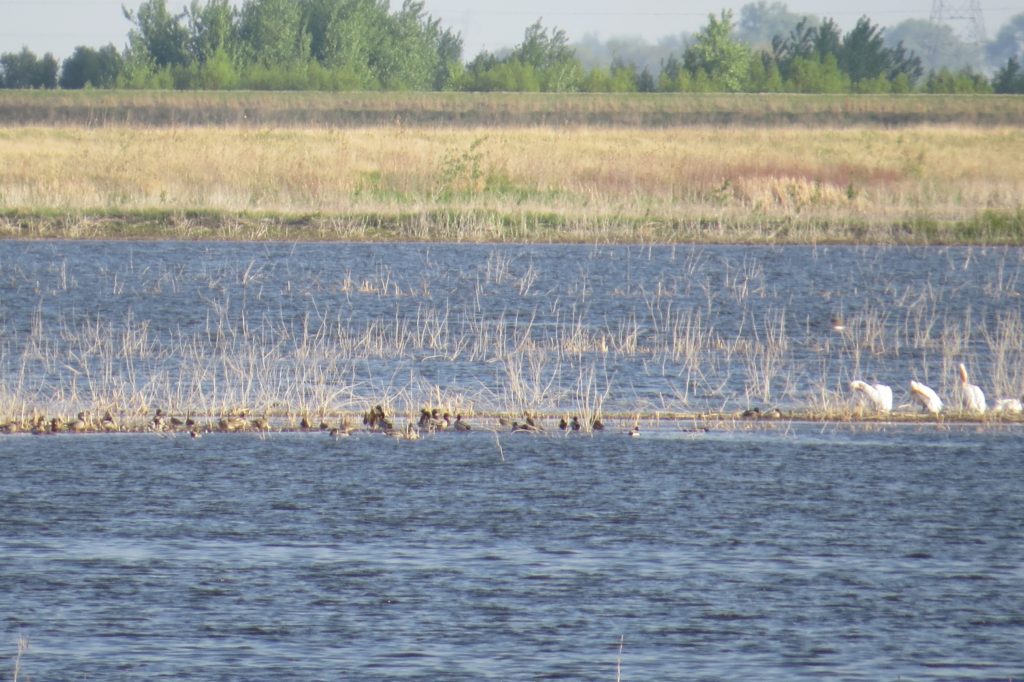 The views through the scopes shaking in the wind were tenuous but definitive enough to know what we were looking at. Liz was, appropriately, super pumped by resurrecting these birds and saving the day for all of us. Also, appropriately, she insisted we selfie with her to commemorate this great birding memory. Thanks, Liz, for digging this one out and changing the day’s narrative!
The views through the scopes shaking in the wind were tenuous but definitive enough to know what we were looking at. Liz was, appropriately, super pumped by resurrecting these birds and saving the day for all of us. Also, appropriately, she insisted we selfie with her to commemorate this great birding memory. Thanks, Liz, for digging this one out and changing the day’s narrative!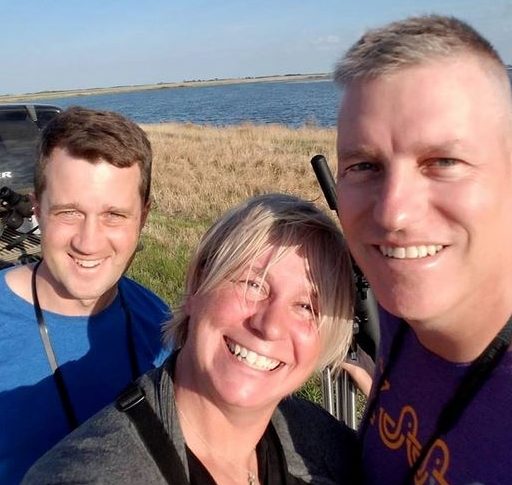 I was itching for a better look at these Whimbrels, so Steve and I headed to the road that bordered the basin on the east. Finally I got the look I was hoping for–seeing that tell-tale bill. It left me wanting more, but it was enough for now. Maybe someday I’d do better…
I was itching for a better look at these Whimbrels, so Steve and I headed to the road that bordered the basin on the east. Finally I got the look I was hoping for–seeing that tell-tale bill. It left me wanting more, but it was enough for now. Maybe someday I’d do better…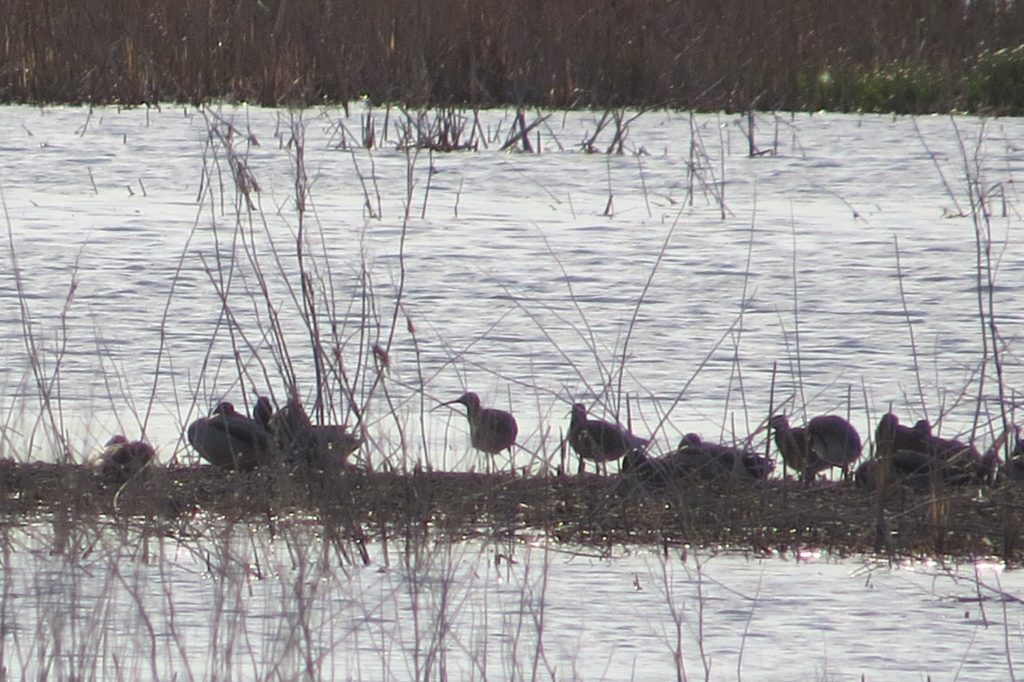 This brings us to this Memorial Day weekend where the family and I made a quick overnight trip to Duluth. Red-throated Loon is annual in Minnesota in both the late fall and spring on Lake Superior during migration. For whatever reason, I still haven’t made this bird a priority. Five years into my birding career, and I still hadn’t seen one. I decided to change that by going on this trip. RTLOs had been reported in good numbers off Park Point in Duluth the past few weeks. Memorial Day is one of the best times to look for them. We didn’t waste any time in Duluth, hitting the 12th St. beach access on Park Point immediately upon arriving in town. As the family played on the sandy beach and enjoyed the brisk 55-degree weather (mid 90s back home!), I scanned for this holdout to my life list. Nothing at 12 St., so we continued a few miles east down the Point to the beach house. There was a lot of chop and sun glare, but I eventually latched onto a trio of these constantly diving Loons. Seeing these Loons, in breeding plumage no less, felt good even if the photo leaves a lot to be desired.
This brings us to this Memorial Day weekend where the family and I made a quick overnight trip to Duluth. Red-throated Loon is annual in Minnesota in both the late fall and spring on Lake Superior during migration. For whatever reason, I still haven’t made this bird a priority. Five years into my birding career, and I still hadn’t seen one. I decided to change that by going on this trip. RTLOs had been reported in good numbers off Park Point in Duluth the past few weeks. Memorial Day is one of the best times to look for them. We didn’t waste any time in Duluth, hitting the 12th St. beach access on Park Point immediately upon arriving in town. As the family played on the sandy beach and enjoyed the brisk 55-degree weather (mid 90s back home!), I scanned for this holdout to my life list. Nothing at 12 St., so we continued a few miles east down the Point to the beach house. There was a lot of chop and sun glare, but I eventually latched onto a trio of these constantly diving Loons. Seeing these Loons, in breeding plumage no less, felt good even if the photo leaves a lot to be desired.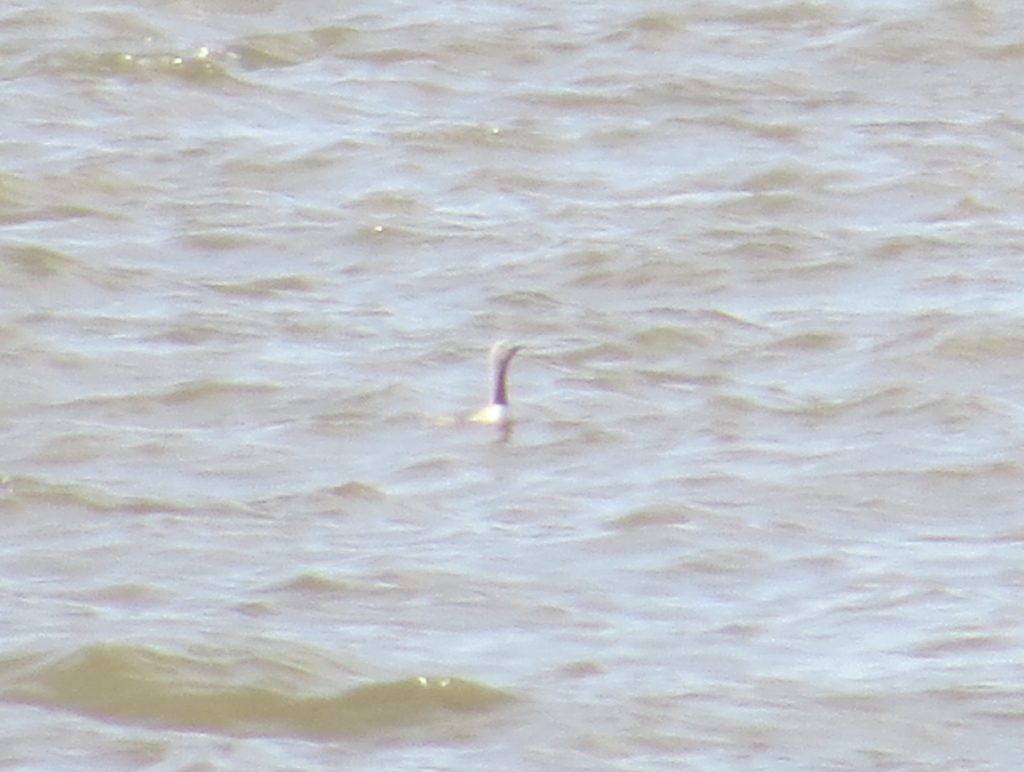 Since the main target of the trip was achieved, there was nothing left to do but have a relaxing time with the family. Of course, I’d be up and at ’em the next morning well before the family was awake. I decided to try for more/better visuals of the Loons. I had no luck with that this morning. What I lacked in the Loon-finding skills, I made up for in finding Duluth birding pal, John Richardson. It’s always good to see John. Not only is he a fun guy, but he is one skilled birder. He didn’t find a Red-throated Loon either. Instead, he found something just as good or even better:
Since the main target of the trip was achieved, there was nothing left to do but have a relaxing time with the family. Of course, I’d be up and at ’em the next morning well before the family was awake. I decided to try for more/better visuals of the Loons. I had no luck with that this morning. What I lacked in the Loon-finding skills, I made up for in finding Duluth birding pal, John Richardson. It’s always good to see John. Not only is he a fun guy, but he is one skilled birder. He didn’t find a Red-throated Loon either. Instead, he found something just as good or even better: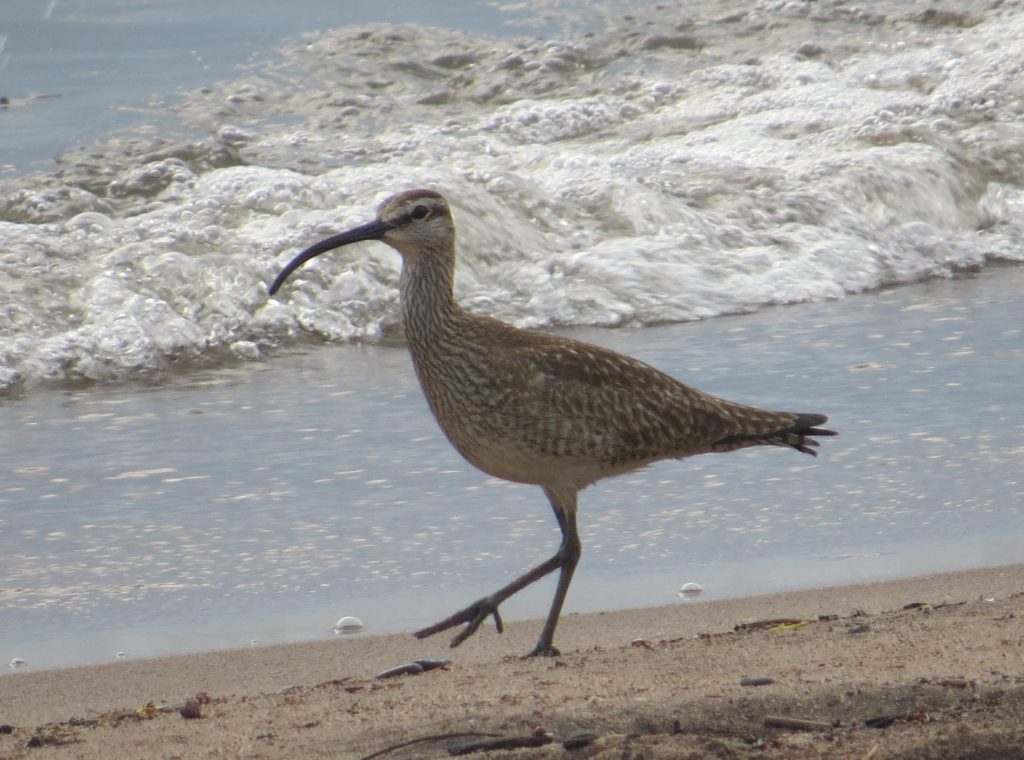
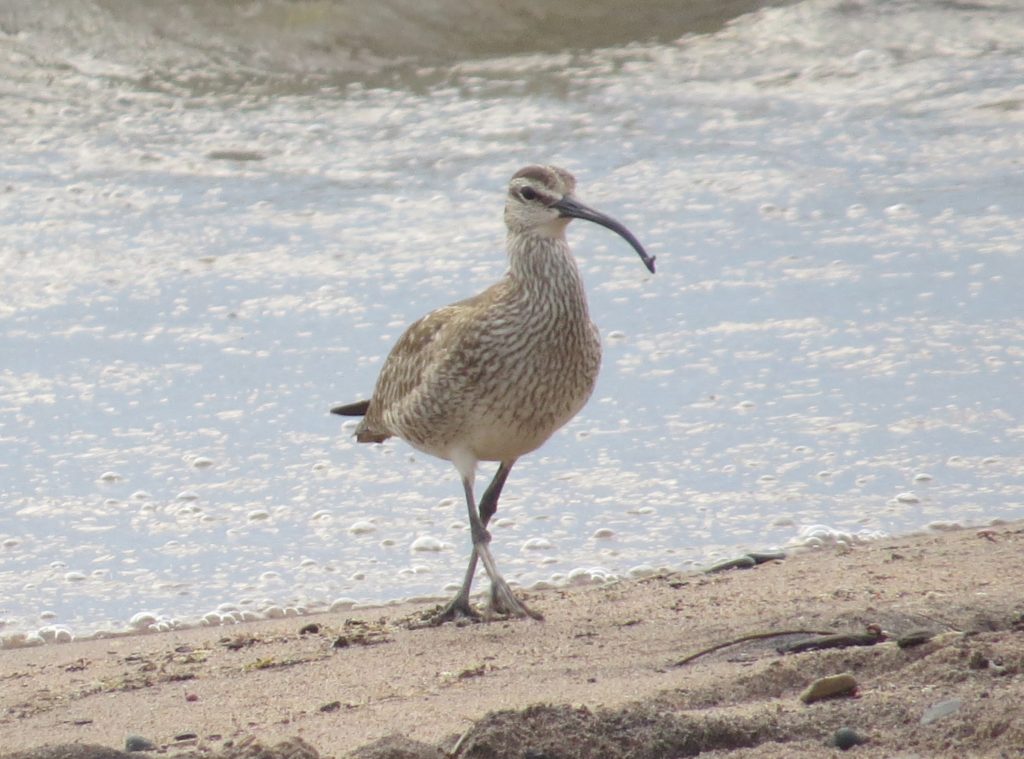 John and I spent the better part of an hour trying to relocate this single Whimbrel John had first found near the dune bridge at Park Point. It was time and effort well spent. Such a great-looking shorebird! Truly, not many other shorebirds excite birders as much as this one. It was as equal of a highlight as the RTLO, which I am now expecting to get crushing looks of any day at this rate.
John and I spent the better part of an hour trying to relocate this single Whimbrel John had first found near the dune bridge at Park Point. It was time and effort well spent. Such a great-looking shorebird! Truly, not many other shorebirds excite birders as much as this one. It was as equal of a highlight as the RTLO, which I am now expecting to get crushing looks of any day at this rate.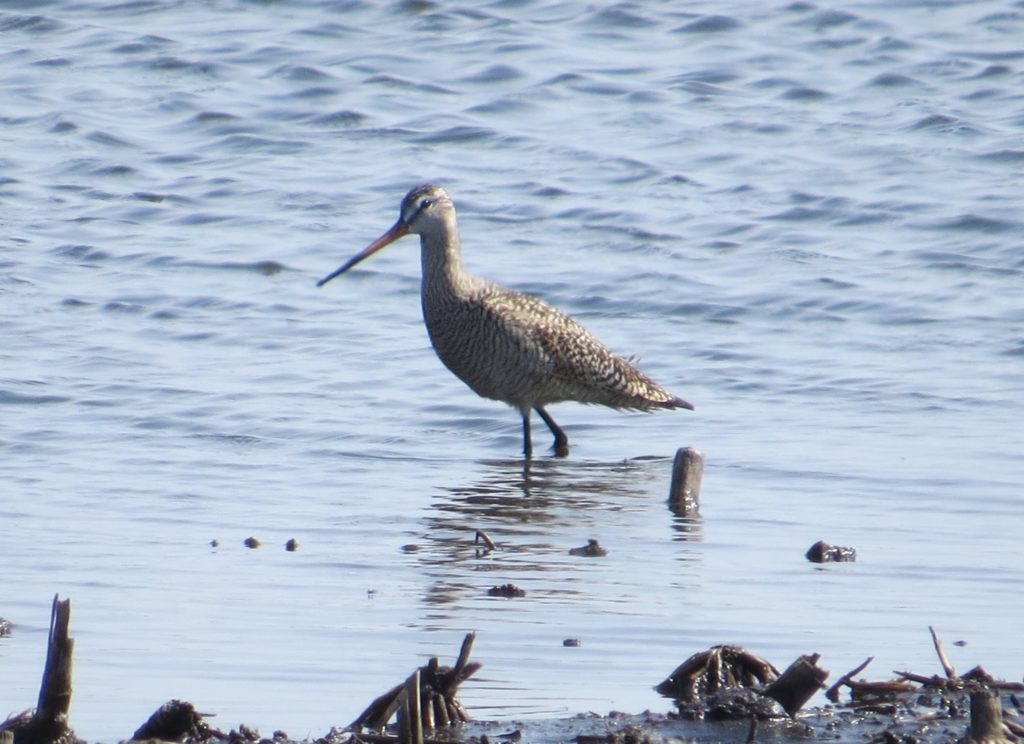
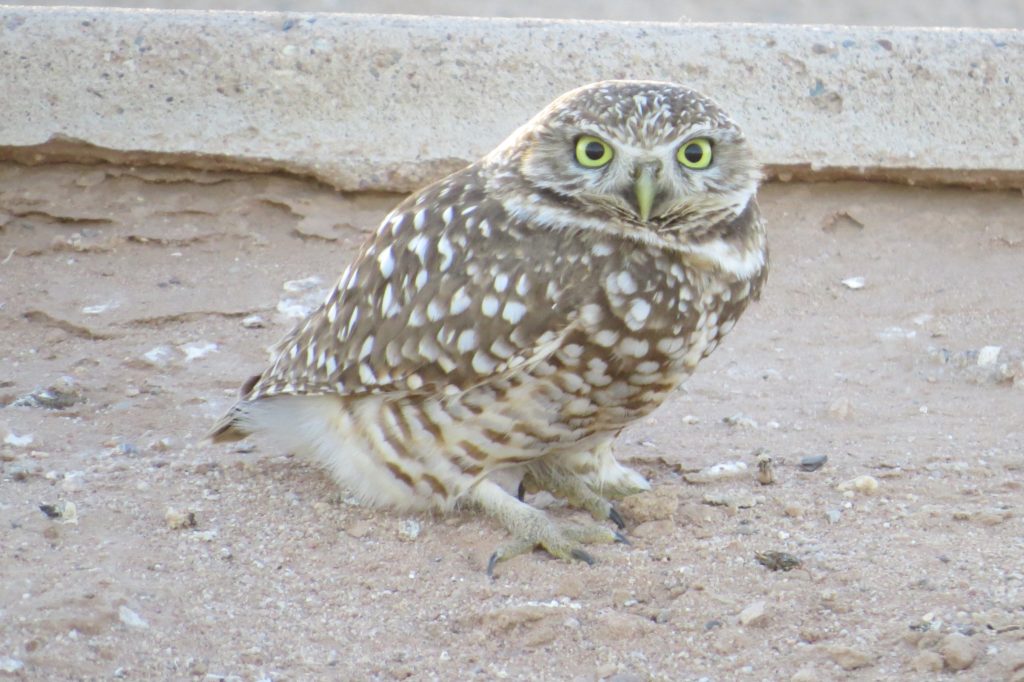 Finally, I found the sought-after silhouette at the eleventh hour.
Finally, I found the sought-after silhouette at the eleventh hour.
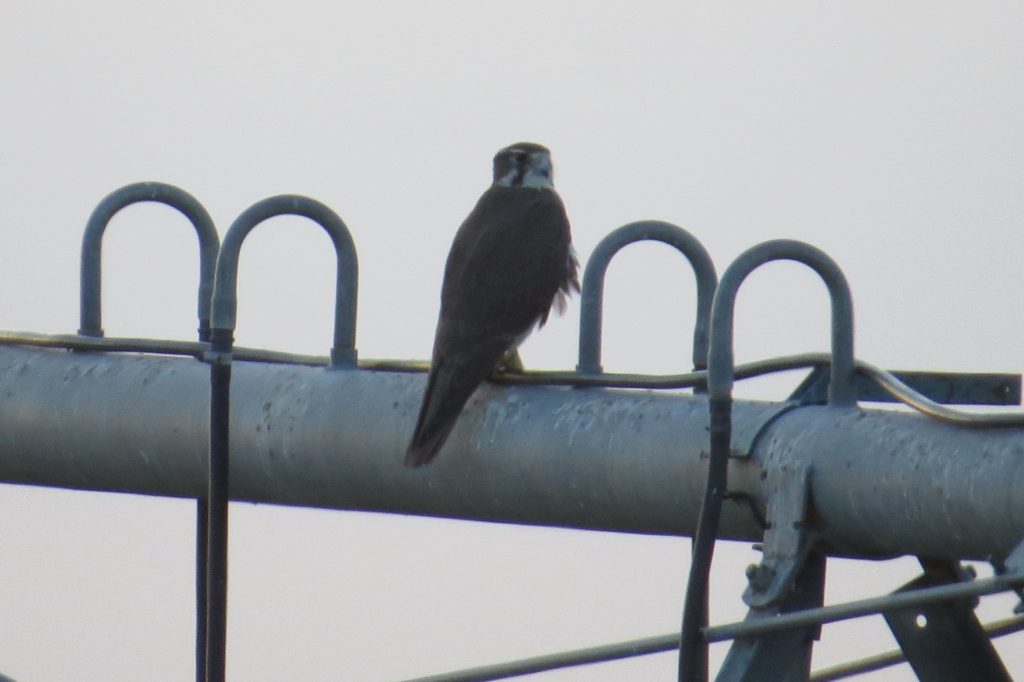 My clean-up operations are not haphazard–my strategy is to try to go after anything rare first and save the most common for later if need be. One of those rarities was the Rufous-backed Robin. This past winter was exceptional for this species with many records popping up in AZ. So that next day, my friend Gordon Karre took me on a mini-outing to stake out a gorgeous backyard in Paradise Valley to hopefully get one of two Robins that had been eating the berries of pyracantha bushes. The problem was that time and berries had run out for this particular Robin pair. We dipped.
My clean-up operations are not haphazard–my strategy is to try to go after anything rare first and save the most common for later if need be. One of those rarities was the Rufous-backed Robin. This past winter was exceptional for this species with many records popping up in AZ. So that next day, my friend Gordon Karre took me on a mini-outing to stake out a gorgeous backyard in Paradise Valley to hopefully get one of two Robins that had been eating the berries of pyracantha bushes. The problem was that time and berries had run out for this particular Robin pair. We dipped.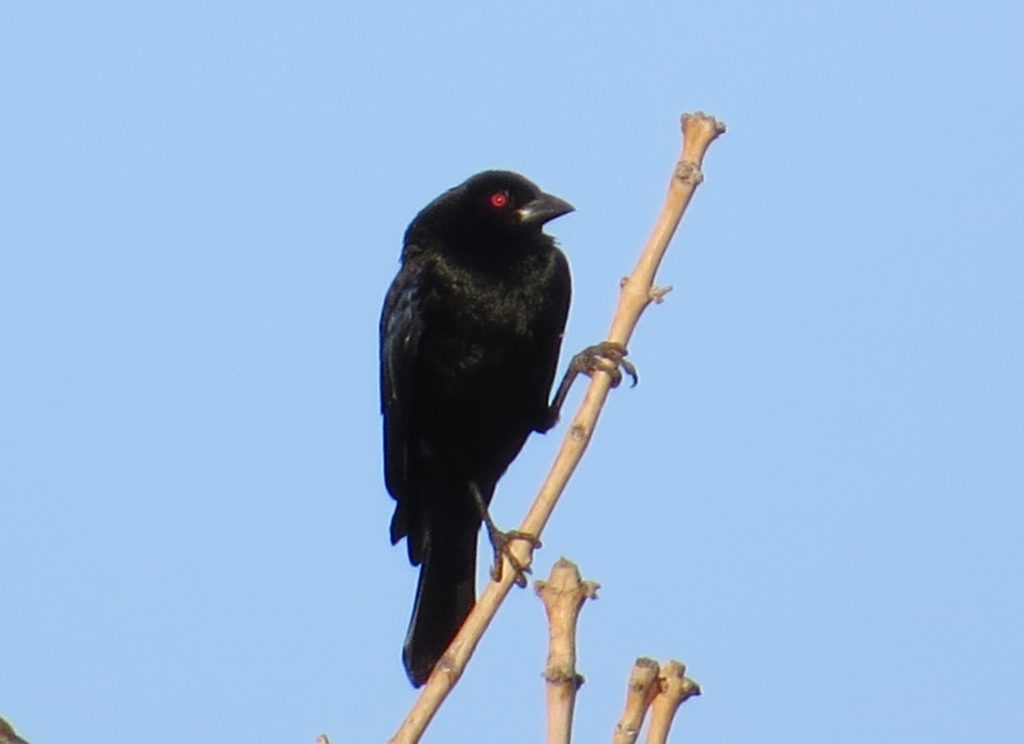 With that target achieved, the birding was put on hold until the next morning where Gordon, my Dad, and I would follow the same strategy–go after a key rarity and snag as many other lifers along the way. That rarity was the Ruddy Ground-Dove. Though we were going to originally go after one in the Phoenix area, it became a no-show just a couple days before the trip. We were then forced to go south to the Red Rock feedlot where several had been seen.
With that target achieved, the birding was put on hold until the next morning where Gordon, my Dad, and I would follow the same strategy–go after a key rarity and snag as many other lifers along the way. That rarity was the Ruddy Ground-Dove. Though we were going to originally go after one in the Phoenix area, it became a no-show just a couple days before the trip. We were then forced to go south to the Red Rock feedlot where several had been seen.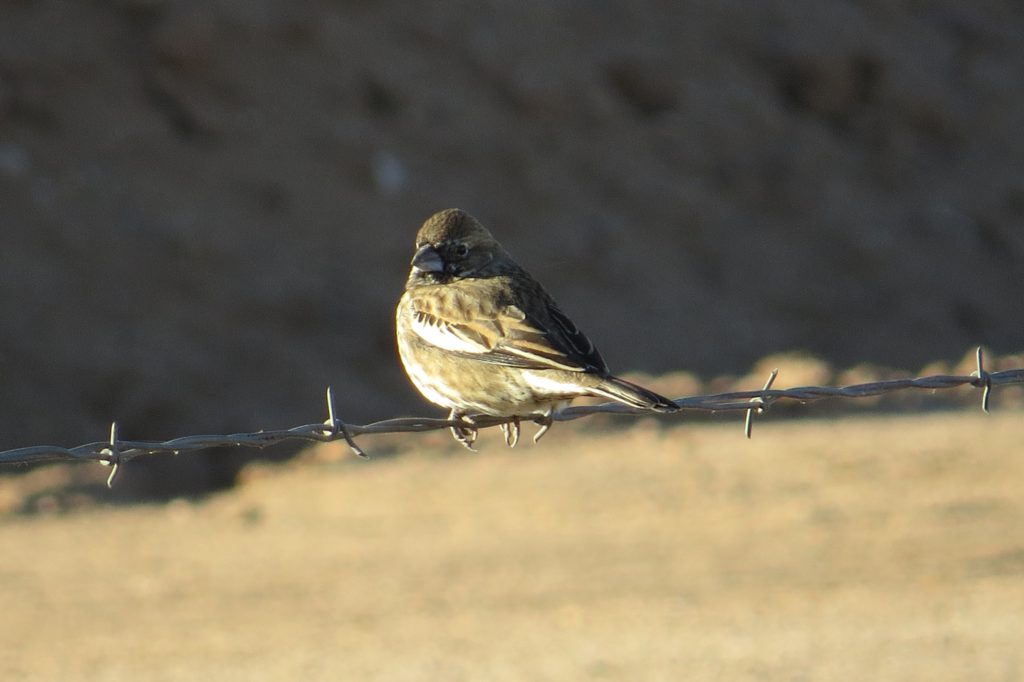 Finally we got on to the flock(!) of the rare Doves, finding five or six in all. Here are four of them with an Inca Dove that has identity issues, all huddling to keep warm on this chilly morning.
Finally we got on to the flock(!) of the rare Doves, finding five or six in all. Here are four of them with an Inca Dove that has identity issues, all huddling to keep warm on this chilly morning.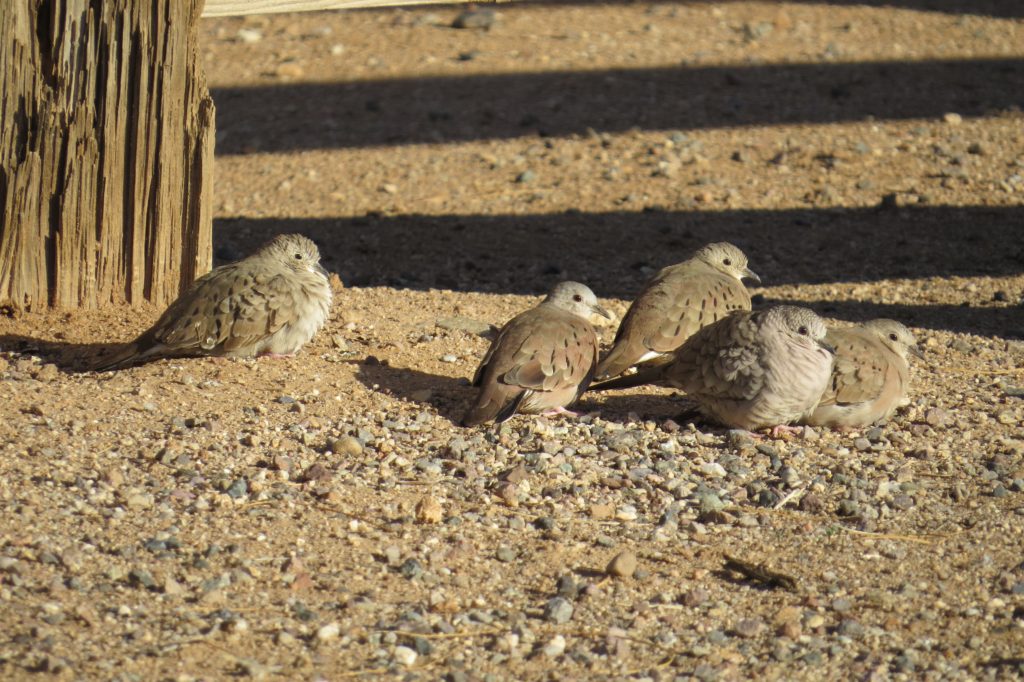
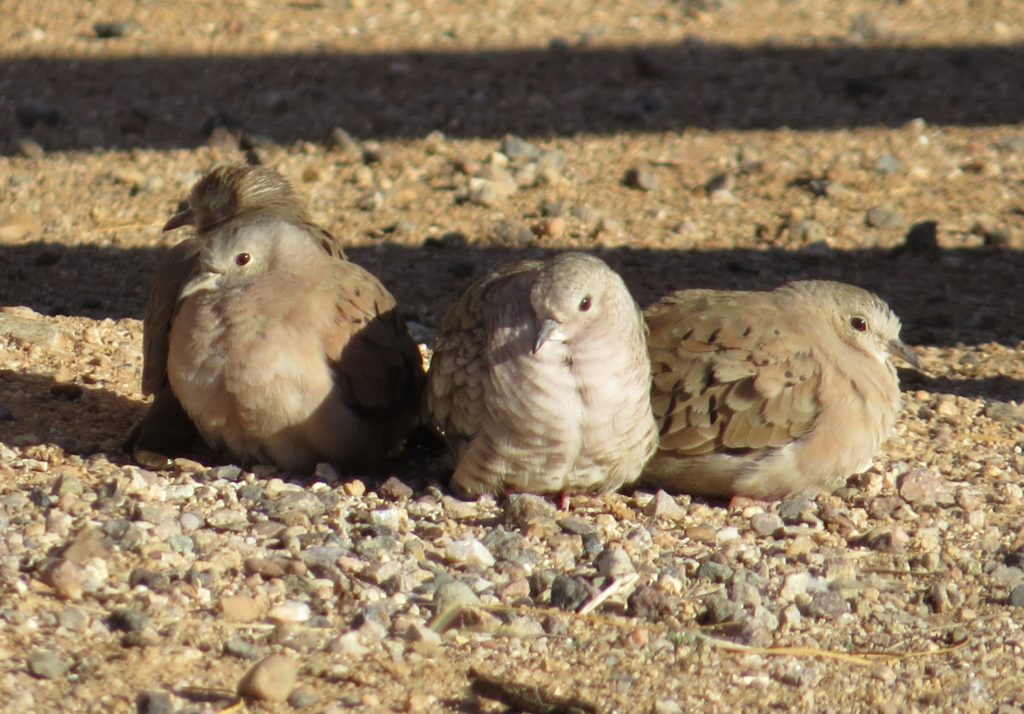
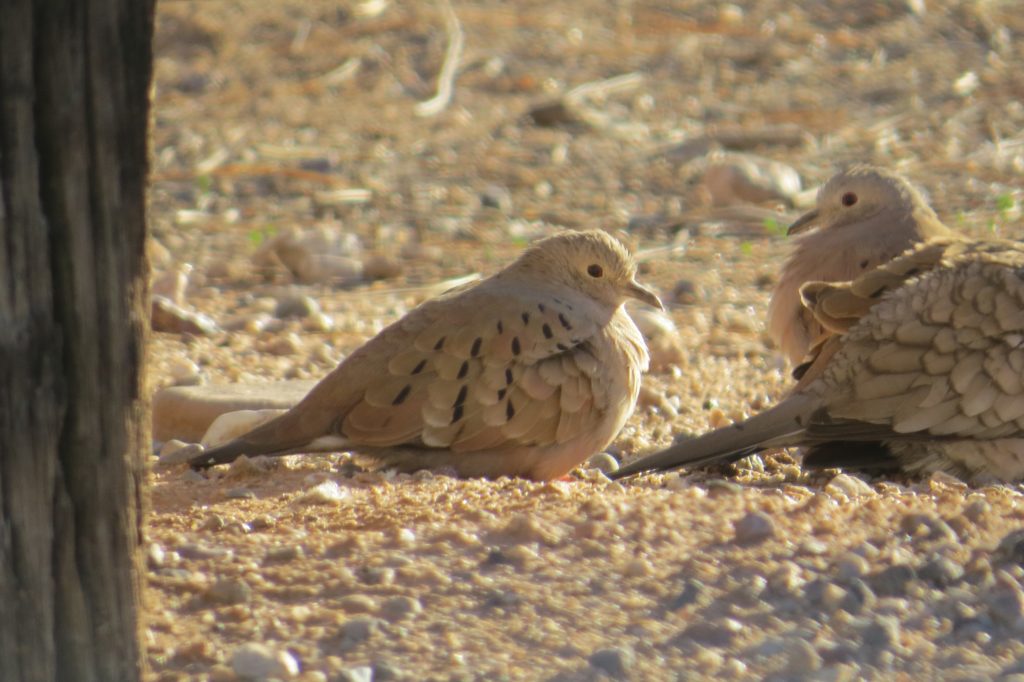
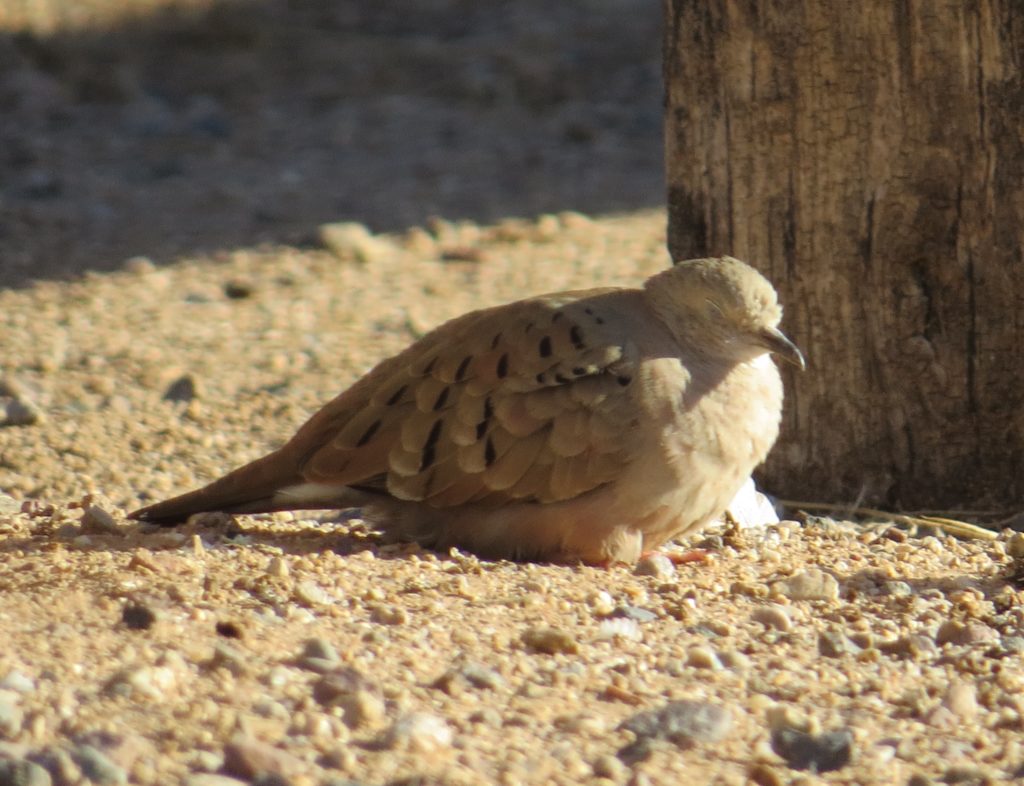 The plan was to cruise through the Santa Cruz Flats on the way home to try for two birds I had long been holding in reserve: Crested Caracara and Mountain Plover. The Santa Cruz Flats are fun place to bird where one can not only stumble across a Mark Ochs lifer but also see cool stuff like Harris’s Hawks.
The plan was to cruise through the Santa Cruz Flats on the way home to try for two birds I had long been holding in reserve: Crested Caracara and Mountain Plover. The Santa Cruz Flats are fun place to bird where one can not only stumble across a Mark Ochs lifer but also see cool stuff like Harris’s Hawks.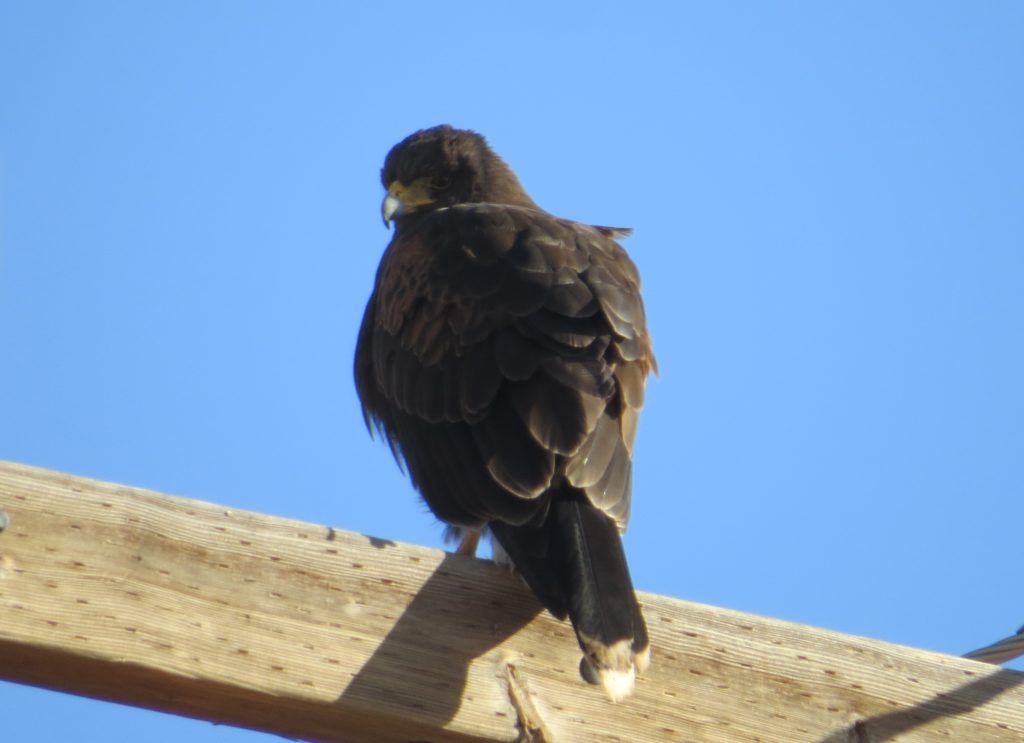
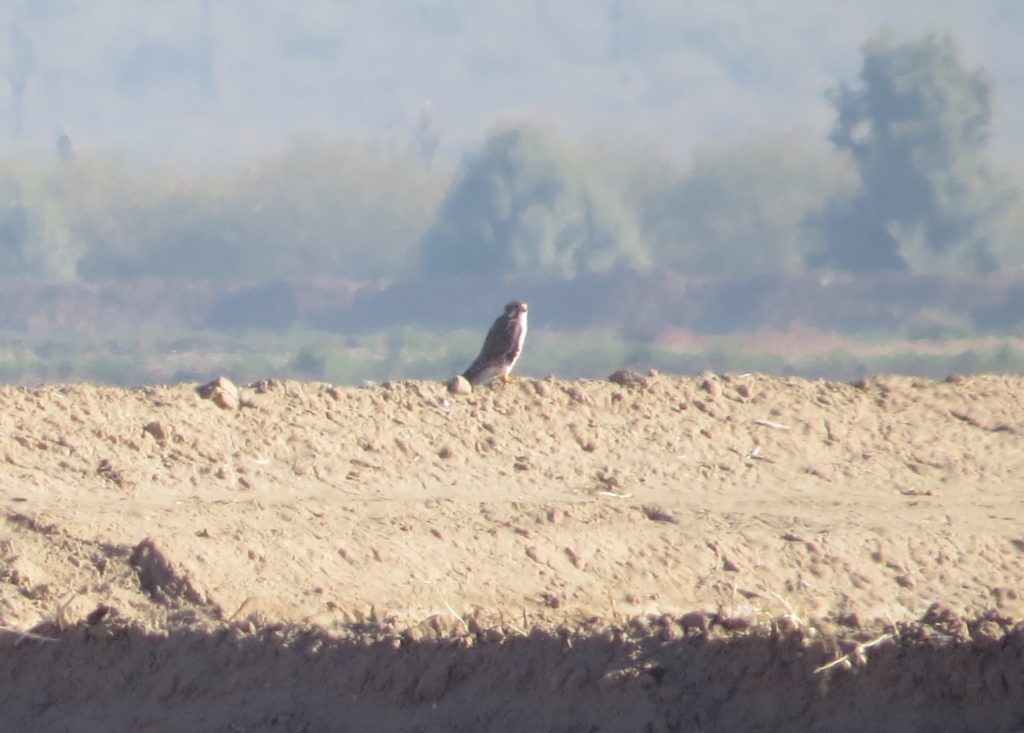 Then, thanks to our trusty guide, we finally got onto one of the two targets–a whole heap of Crested Caracaras.
Then, thanks to our trusty guide, we finally got onto one of the two targets–a whole heap of Crested Caracaras. 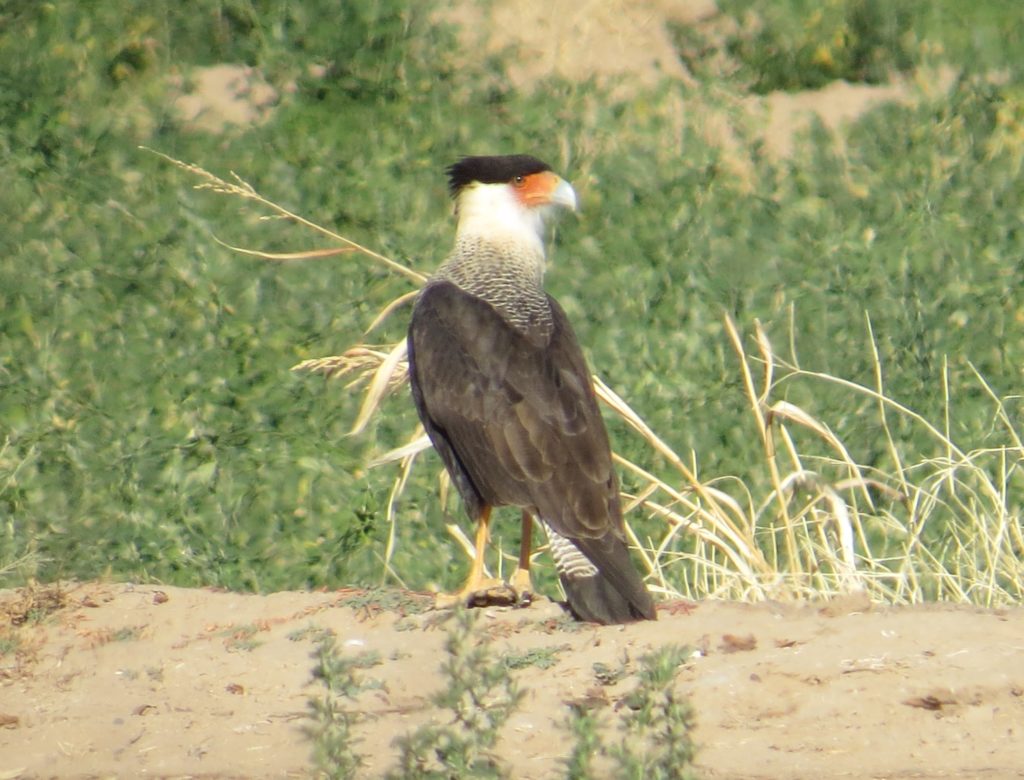
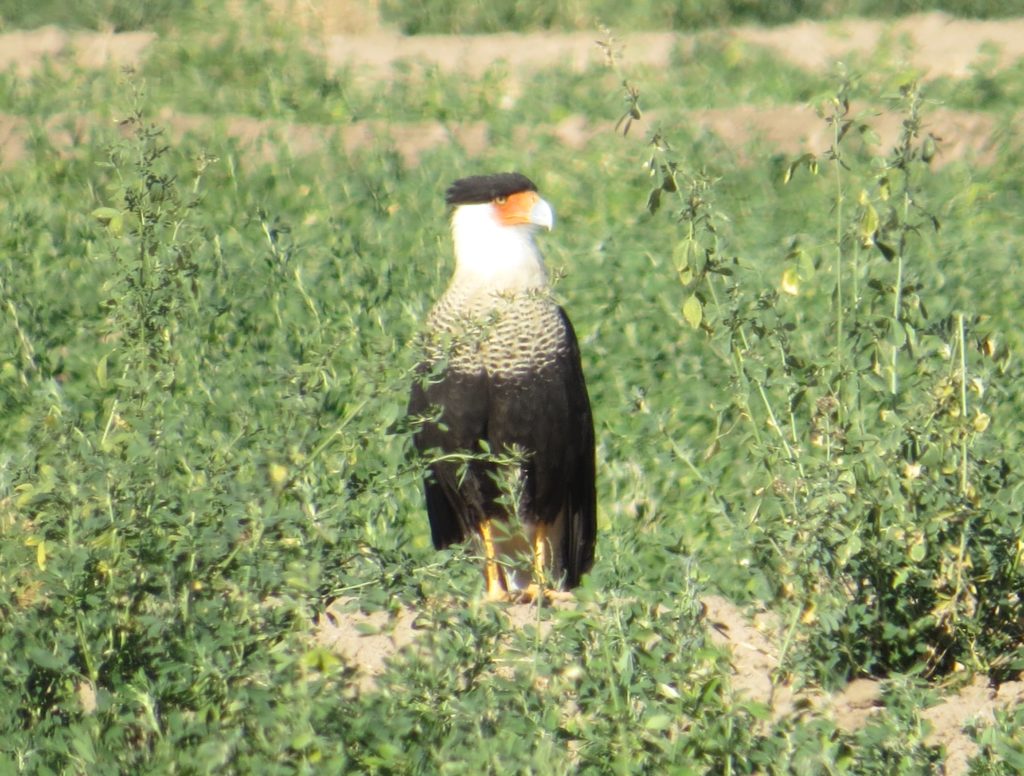 Not long after, Gordon had found us some Mountain Plovers.
Not long after, Gordon had found us some Mountain Plovers.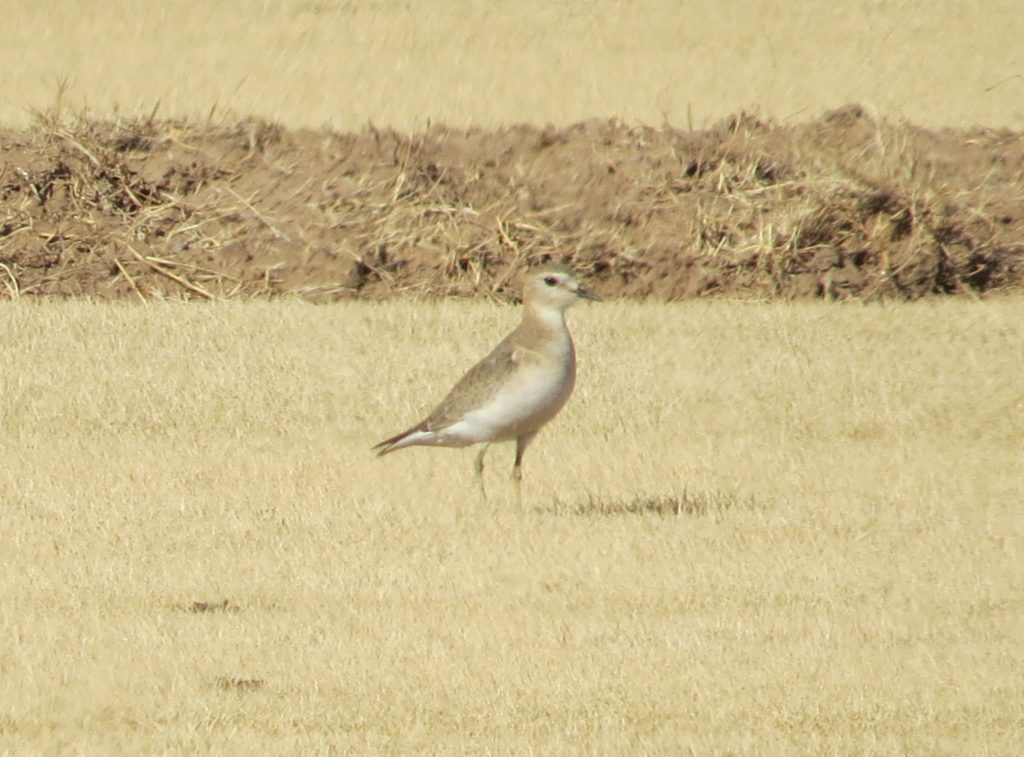
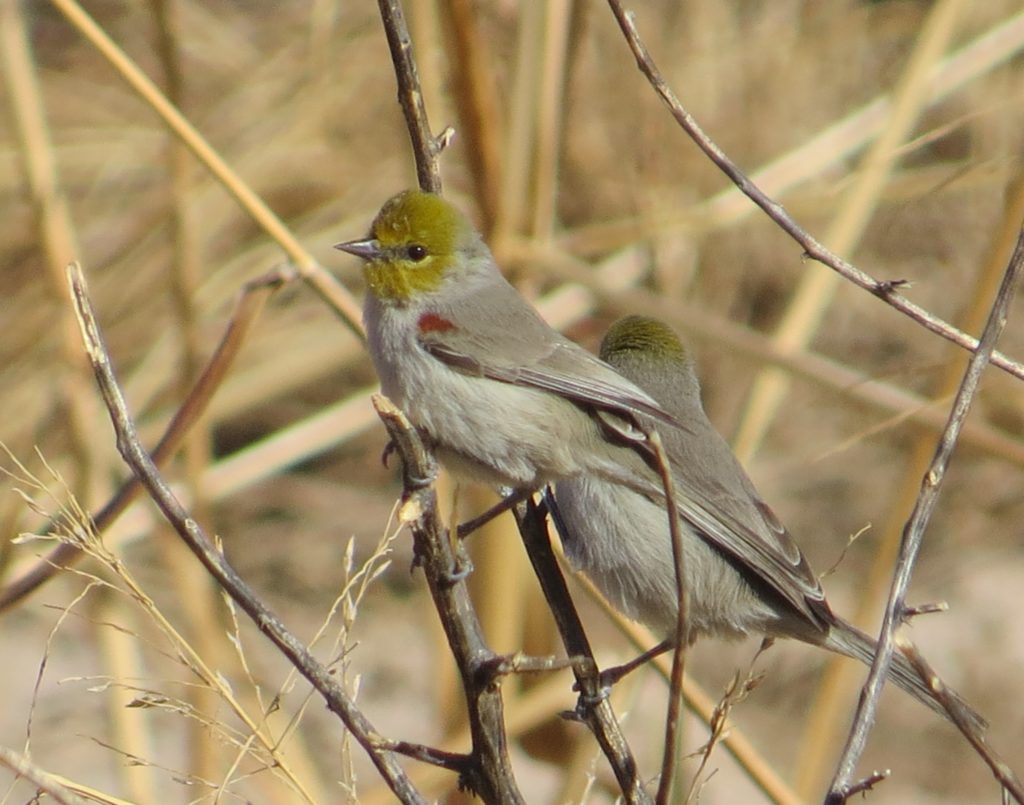 Some birds practically throw themselves at you when you’re just out walking in the neighborhood. Vermilion Flycatchers seem to be becoming more prolific in the area of Maricopa where Mom and Dad live. I don’t mind.
Some birds practically throw themselves at you when you’re just out walking in the neighborhood. Vermilion Flycatchers seem to be becoming more prolific in the area of Maricopa where Mom and Dad live. I don’t mind.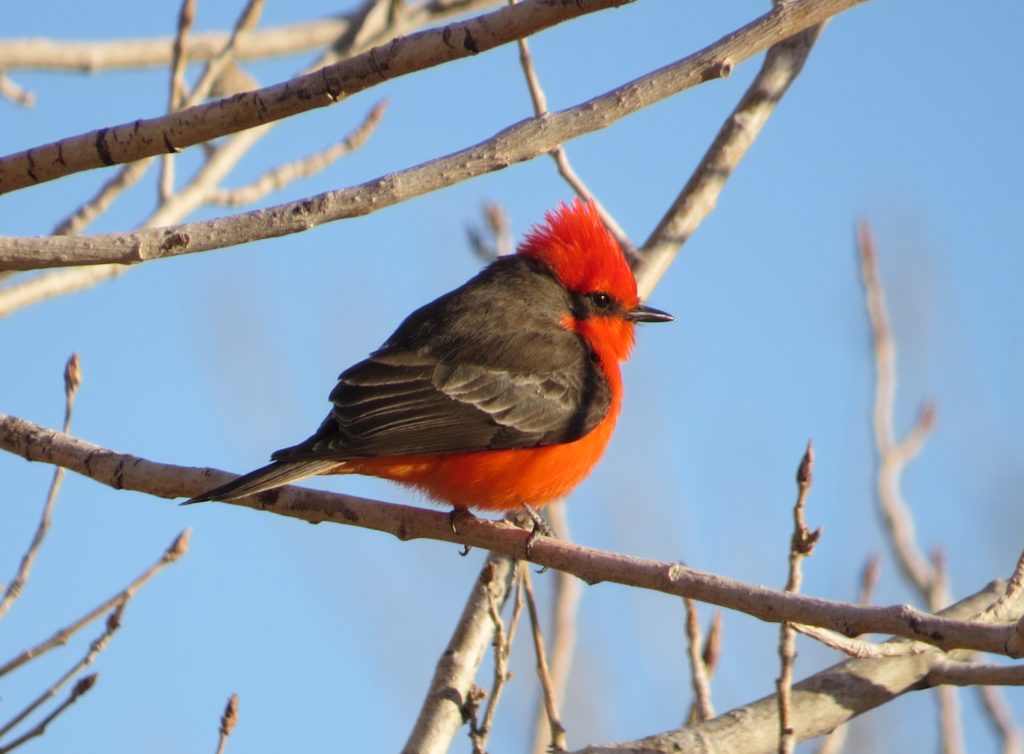
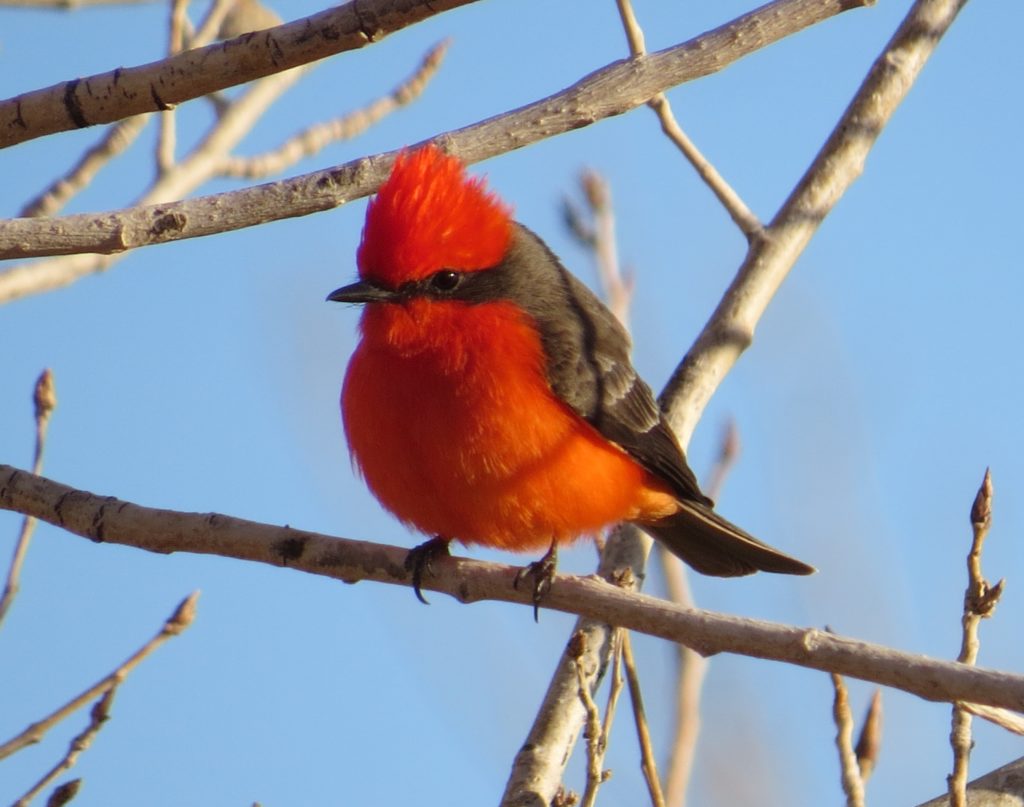 Last, but certainly not least, checking on our neighborhood buddy is an annual tradition.
Last, but certainly not least, checking on our neighborhood buddy is an annual tradition.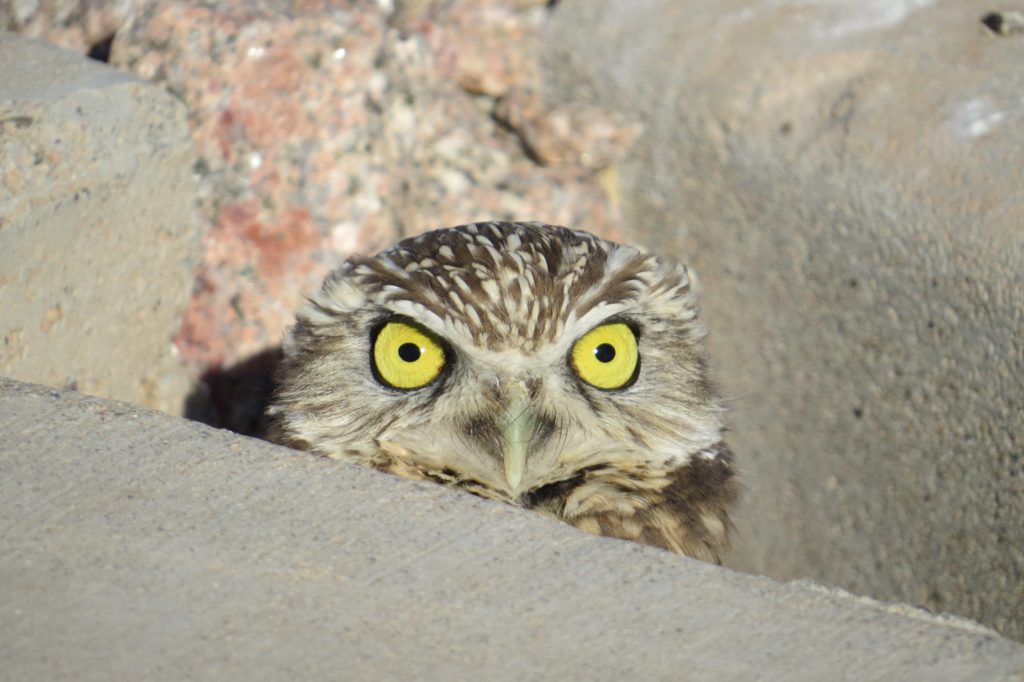 So that’s it from this trip. Pretty tame by previous standards, but that will more than be made up for on an upcoming post detailing another trip to Arizona that was focused exclusively on birding. But first, we have to cover another excursion to Duluth. There was an irruption going on this winter, after all.
So that’s it from this trip. Pretty tame by previous standards, but that will more than be made up for on an upcoming post detailing another trip to Arizona that was focused exclusively on birding. But first, we have to cover another excursion to Duluth. There was an irruption going on this winter, after all.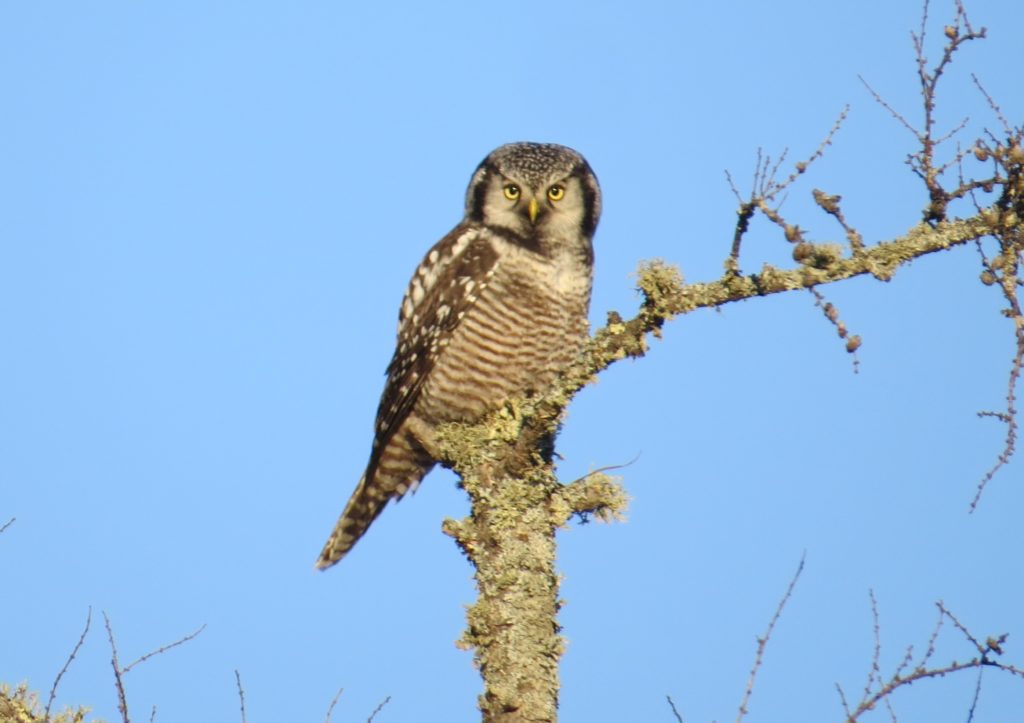
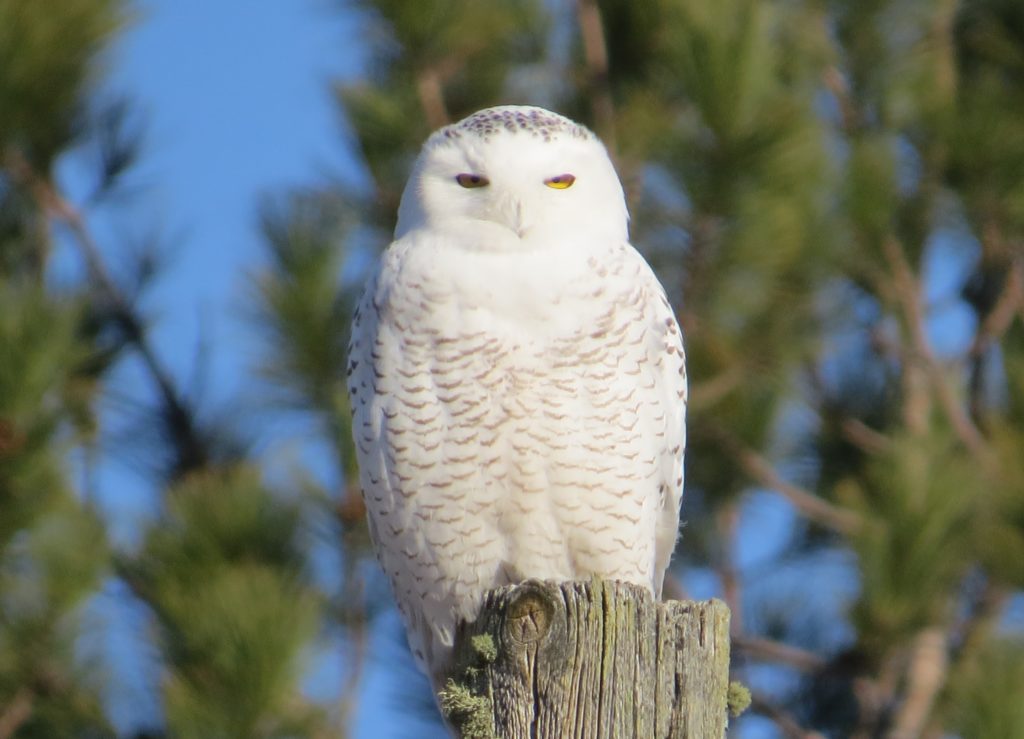
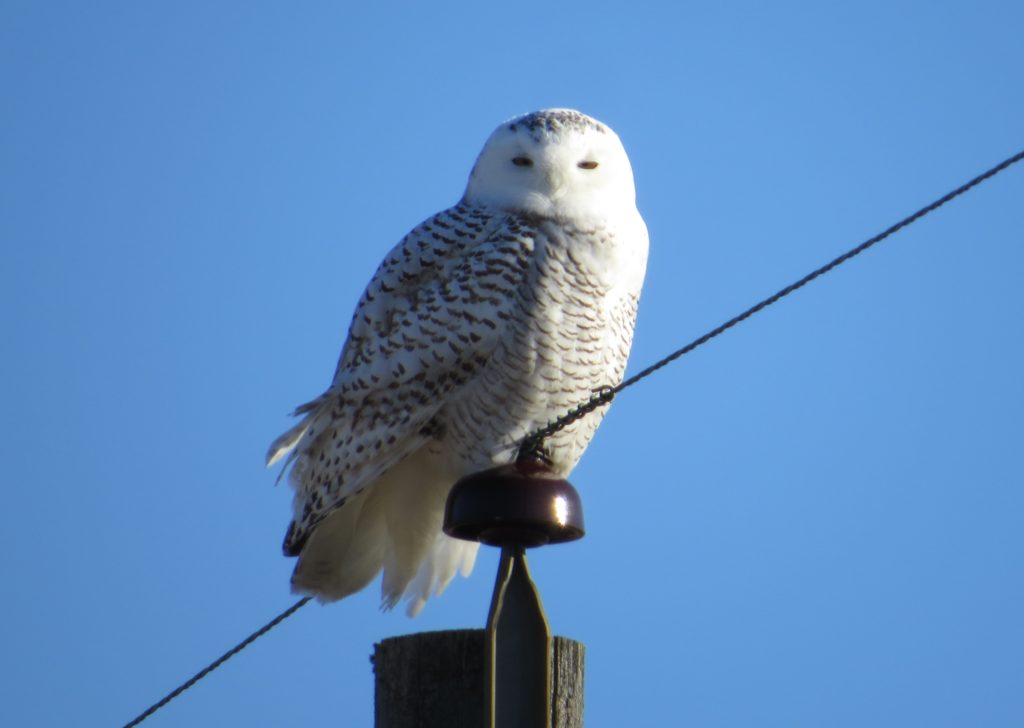 Heartbroken at the time, little did we realize that the Boreal we chased was just the tip of the spear. More sightings kept popping up during December of both live and dead Boreal Owls. By the time news of one would come out, though, it would either be during the work week or late in the day making a chase impossible. Jeff and I were hopeful that our day would finally happen, but we were very antsy about it. I had an upcoming trip to Arizona that I was now dreading. I did not want to miss my chance.
Heartbroken at the time, little did we realize that the Boreal we chased was just the tip of the spear. More sightings kept popping up during December of both live and dead Boreal Owls. By the time news of one would come out, though, it would either be during the work week or late in the day making a chase impossible. Jeff and I were hopeful that our day would finally happen, but we were very antsy about it. I had an upcoming trip to Arizona that I was now dreading. I did not want to miss my chance.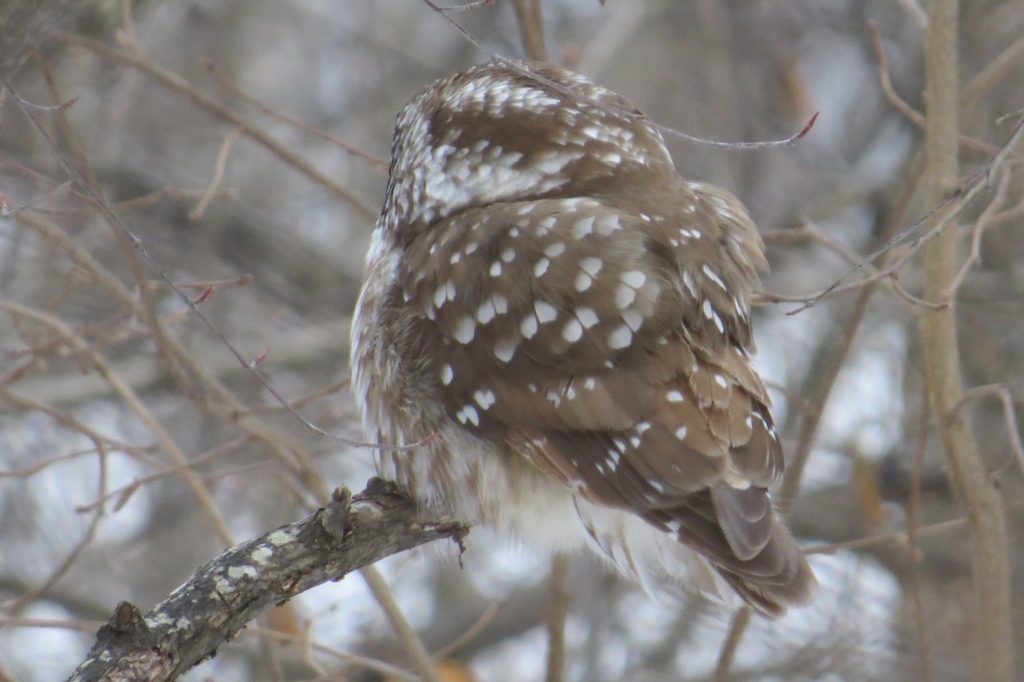 Erik and Kelly made some room for us to see this brush-loving bird through a small window in the branches. It felt good. We had made it. We were looking at a real-live Boreal Owl! Now, we were just waiting to see that face. This was our first glimpse.
Erik and Kelly made some room for us to see this brush-loving bird through a small window in the branches. It felt good. We had made it. We were looking at a real-live Boreal Owl! Now, we were just waiting to see that face. This was our first glimpse.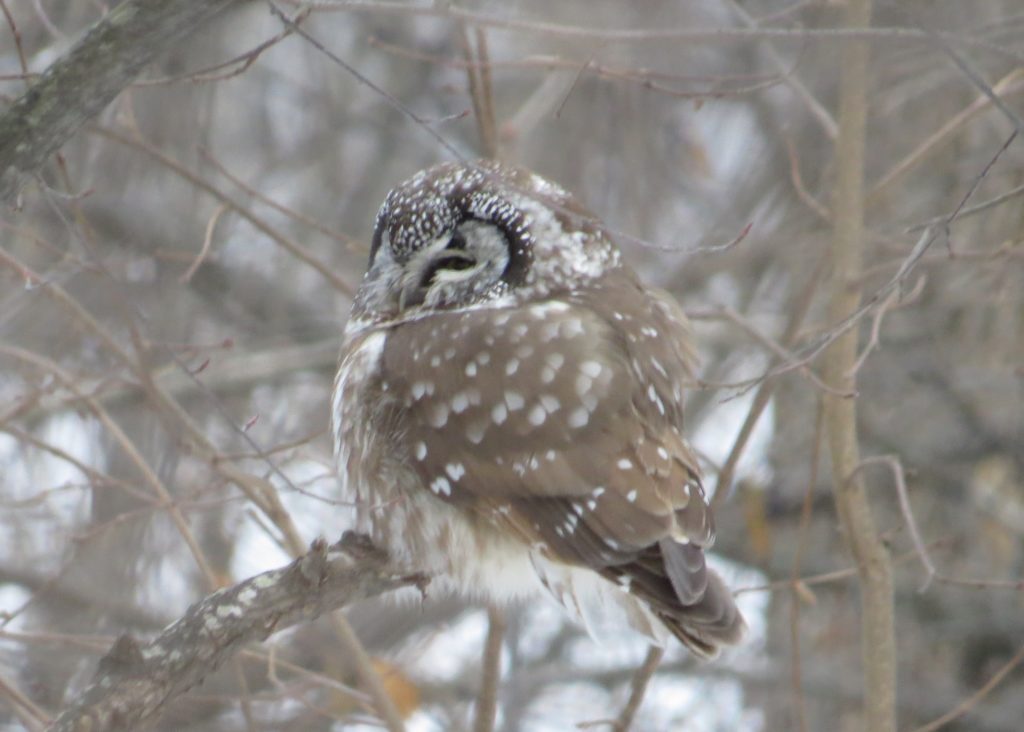 And then:
And then: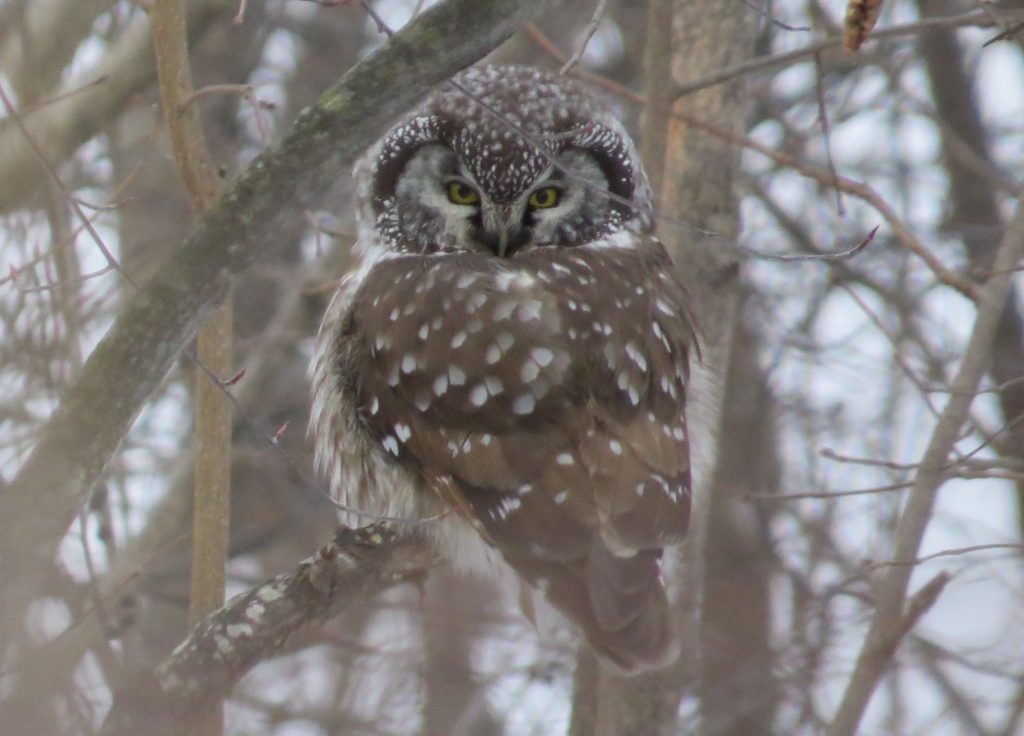
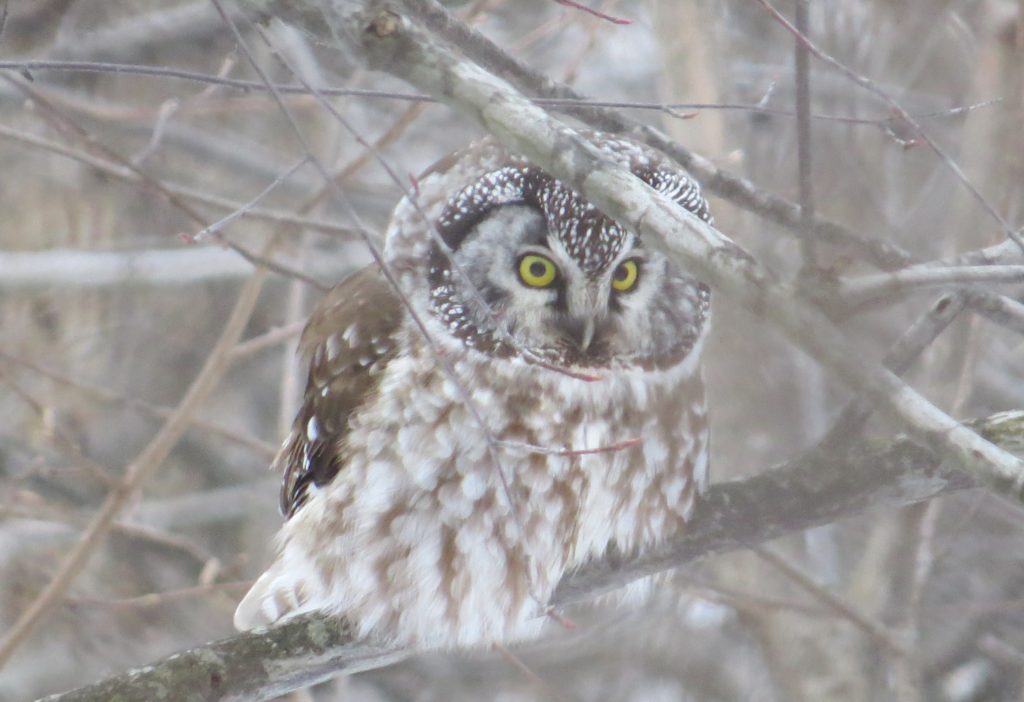
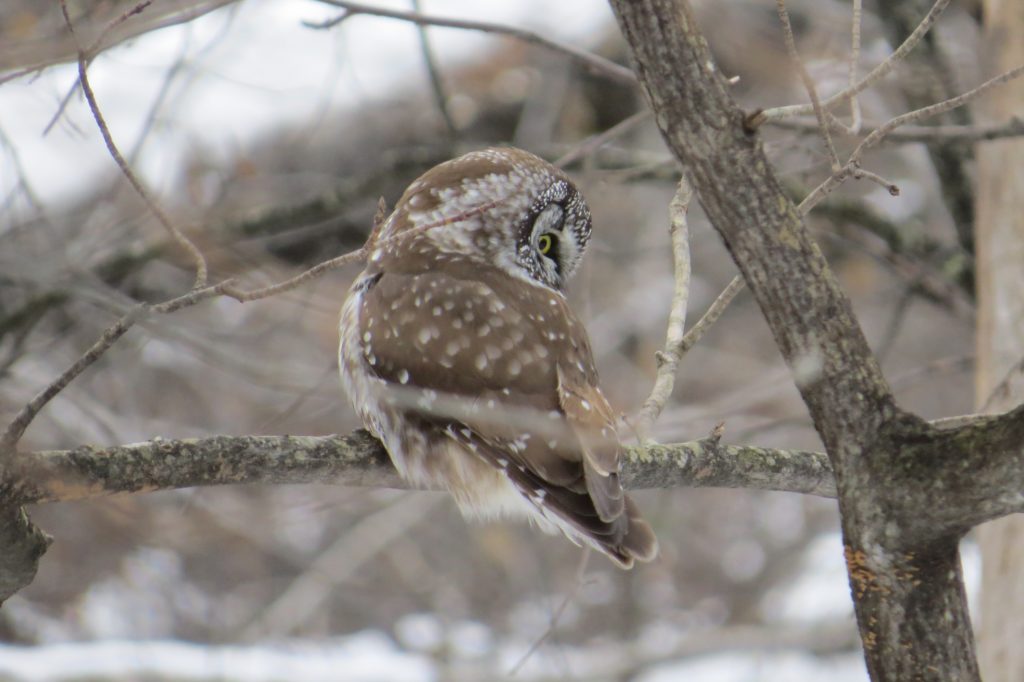
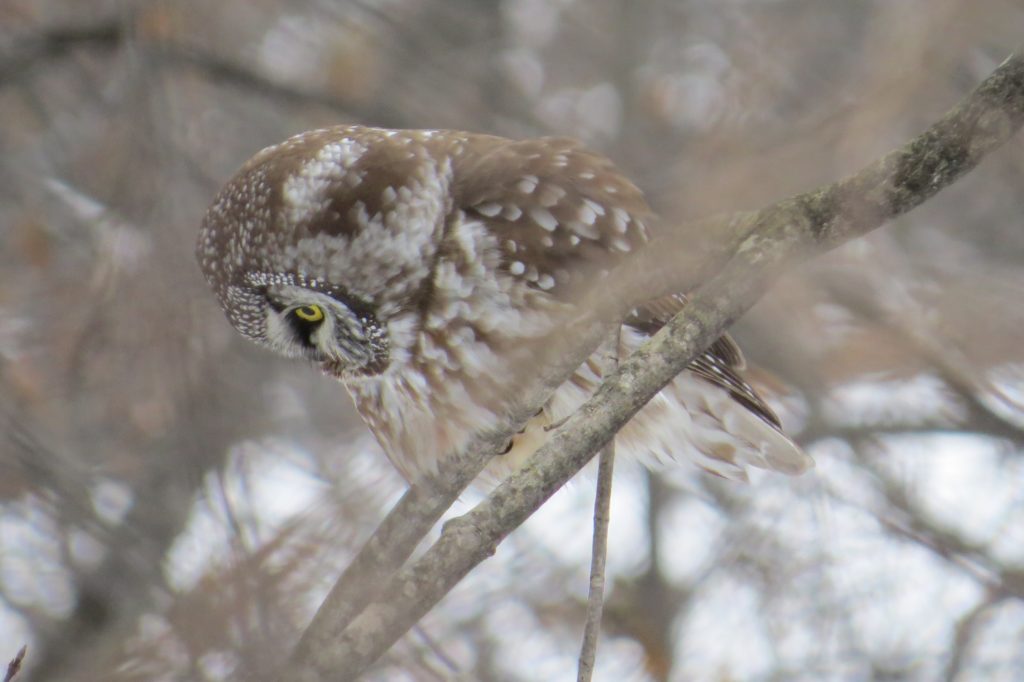
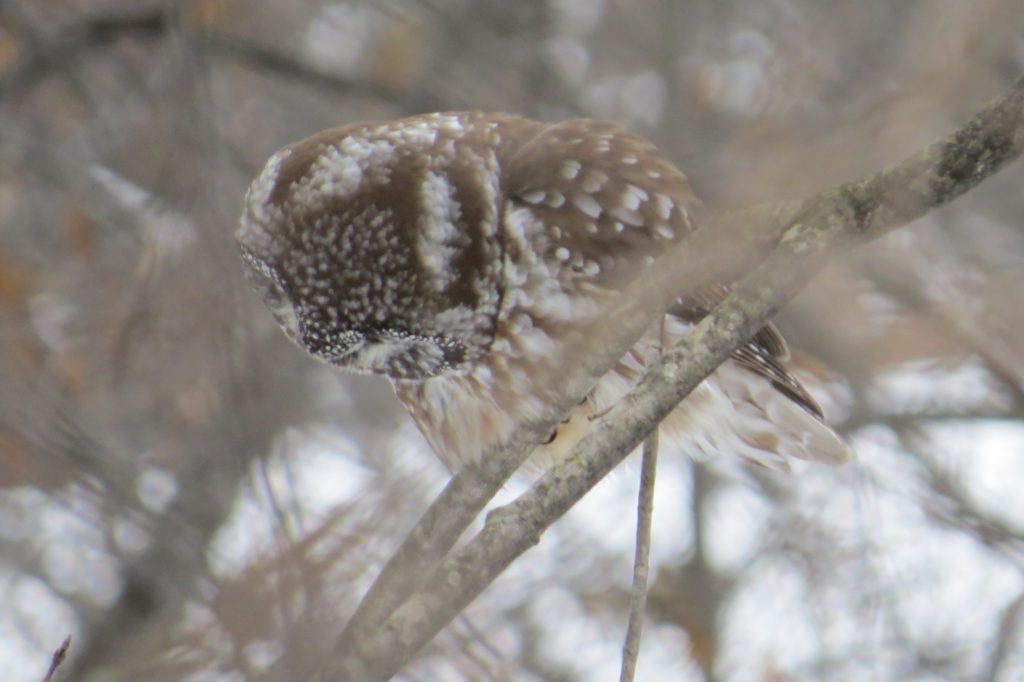 This was, by far, the coolest Owl I had ever seen. This Owl eventually flew away from this spot. I noticed it actually flew close to a different trail. John Richardson and I walked that way and spotted it on top of a brush pile. The views were much better and gave me my best Boreal photo, which Jeff helped me enhance.
This was, by far, the coolest Owl I had ever seen. This Owl eventually flew away from this spot. I noticed it actually flew close to a different trail. John Richardson and I walked that way and spotted it on top of a brush pile. The views were much better and gave me my best Boreal photo, which Jeff helped me enhance.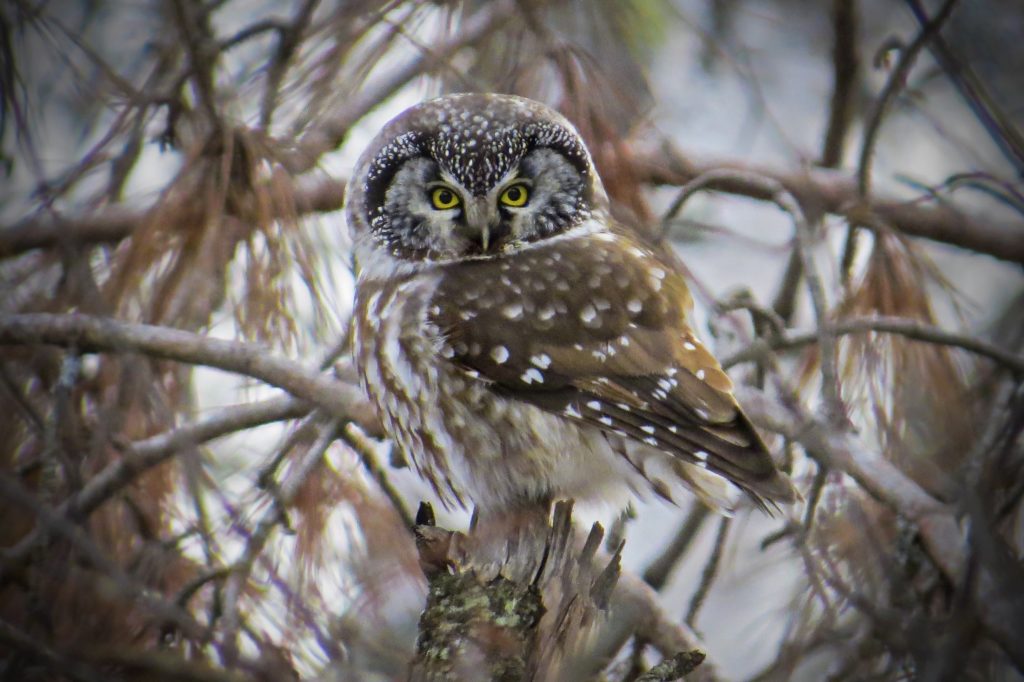
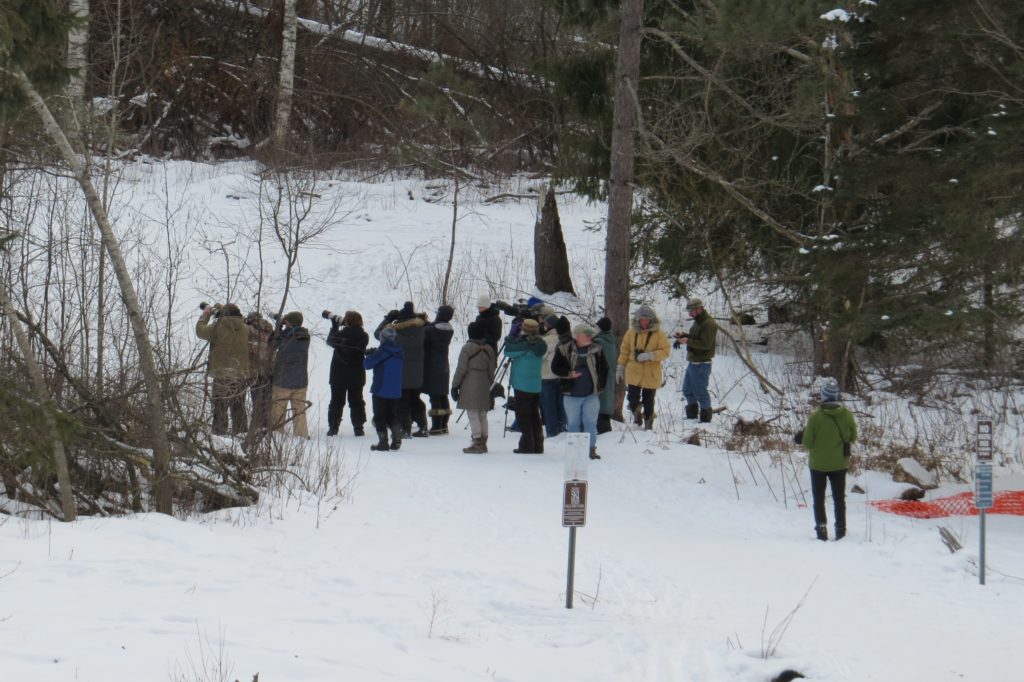 The Owl was now very close to the trails and out in the open. I felt bad that Jeff wasn’t there to experience these photo opportunities; he had not felt well after the Twin Cities Boreal expedition and decided not to come north.
The Owl was now very close to the trails and out in the open. I felt bad that Jeff wasn’t there to experience these photo opportunities; he had not felt well after the Twin Cities Boreal expedition and decided not to come north.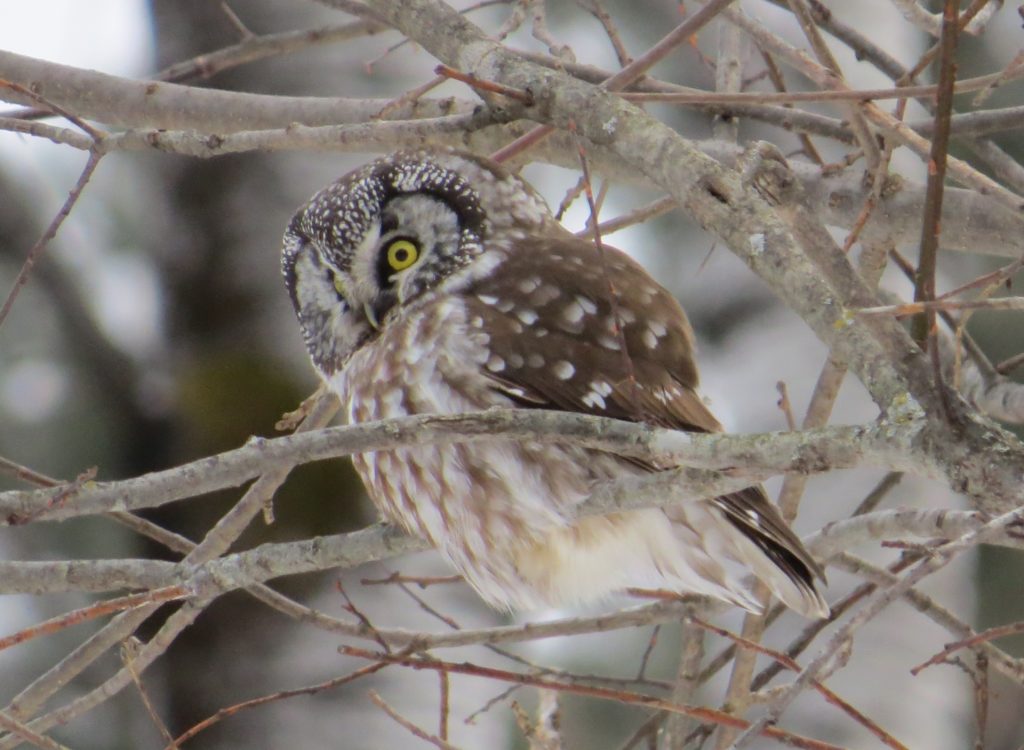 Books describe Boreals as having a surprised look on their face. It is definitely true.
Books describe Boreals as having a surprised look on their face. It is definitely true. 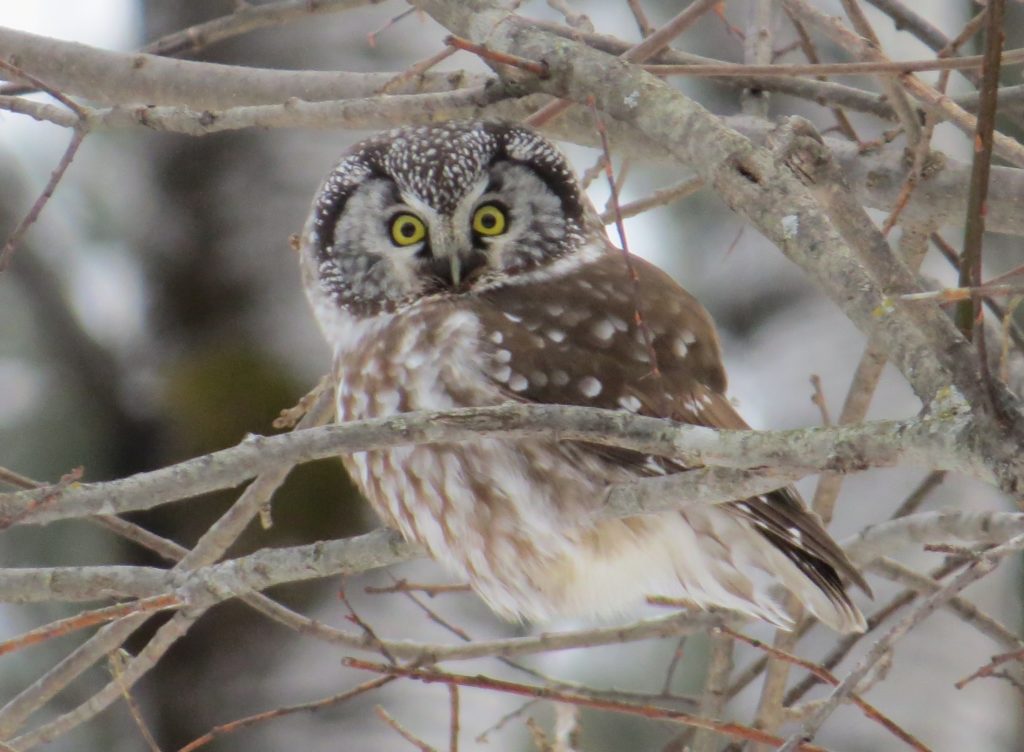

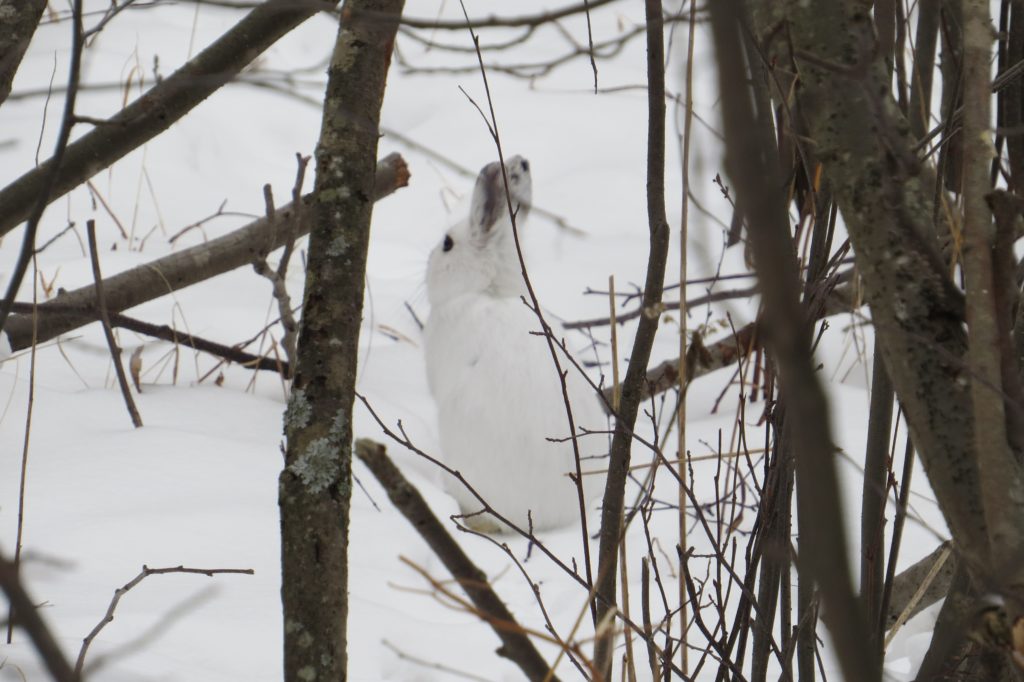 We also took a moment to take a Lake Superior selfie.
We also took a moment to take a Lake Superior selfie.
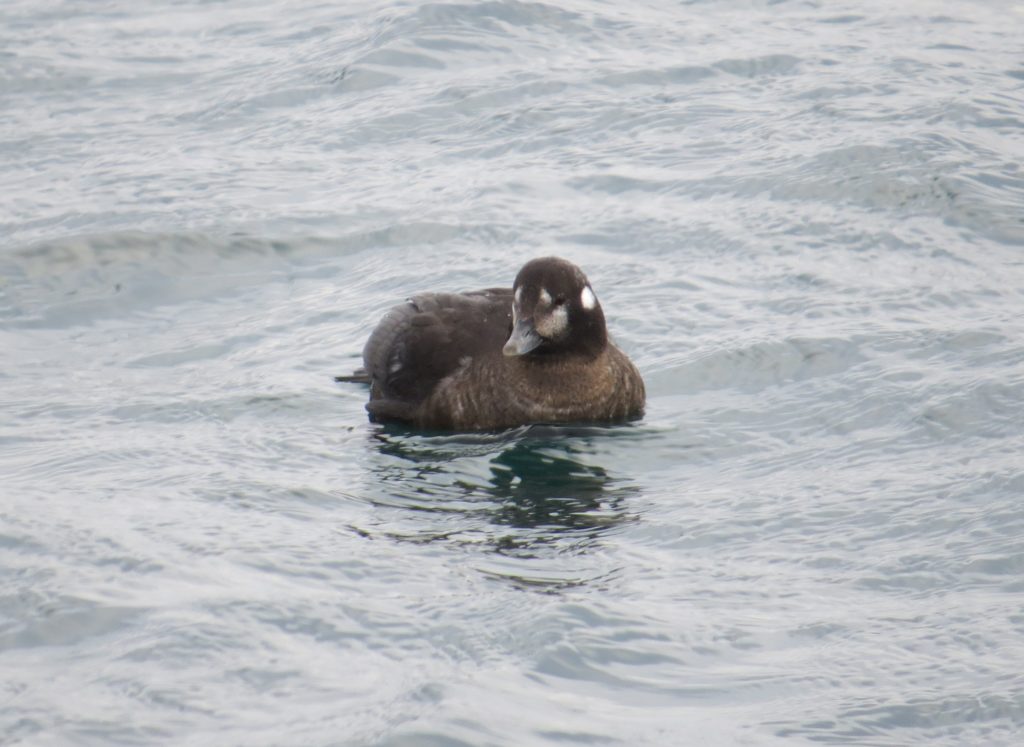
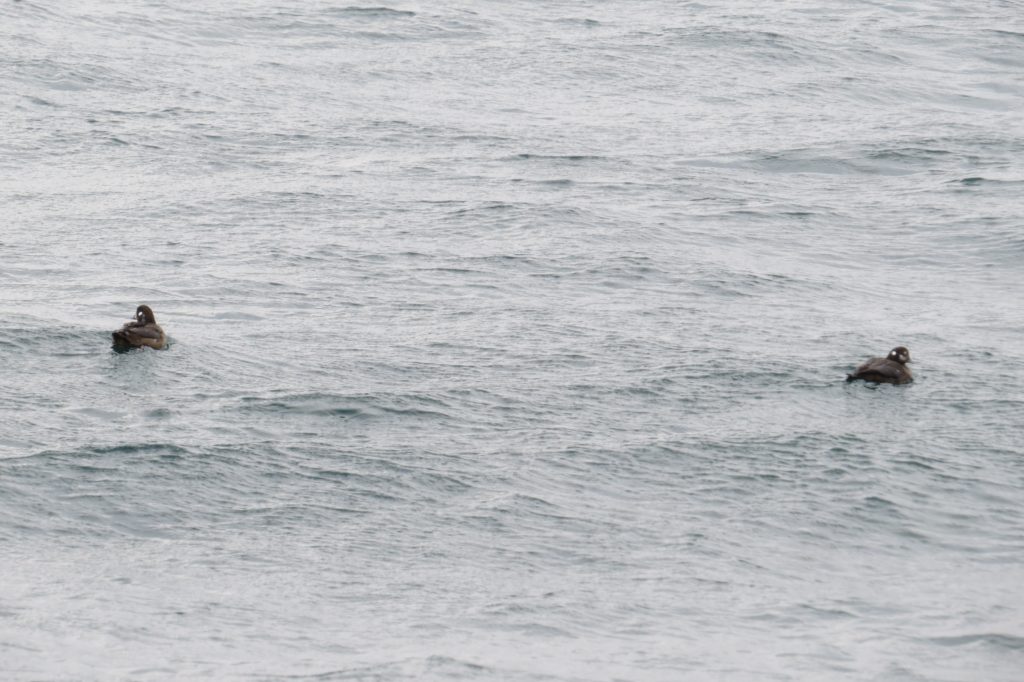 We had barely been in Two Harbors when I got a message from Jeff that he had found his very own Boreal Owl down by Duluth! I was happy he had finally gotten good looks at a bird low and in the open. Knowing there were Great Gray Owls in the area, I asked Evan what we should do. Evan thinks like a true birder because he said we should go after Jeff’s Boreal since we can see Great Grays any year. So once again we were on our way back to Duluth for a Boreal Owl. This one was snoozing in a tree right along Scenic 61. That, combined with the fact that we had gotten our Boreal the day before, meant we did not have to rush this time. Sure enough, this Boreal was right where Jeff had spotted it.
We had barely been in Two Harbors when I got a message from Jeff that he had found his very own Boreal Owl down by Duluth! I was happy he had finally gotten good looks at a bird low and in the open. Knowing there were Great Gray Owls in the area, I asked Evan what we should do. Evan thinks like a true birder because he said we should go after Jeff’s Boreal since we can see Great Grays any year. So once again we were on our way back to Duluth for a Boreal Owl. This one was snoozing in a tree right along Scenic 61. That, combined with the fact that we had gotten our Boreal the day before, meant we did not have to rush this time. Sure enough, this Boreal was right where Jeff had spotted it.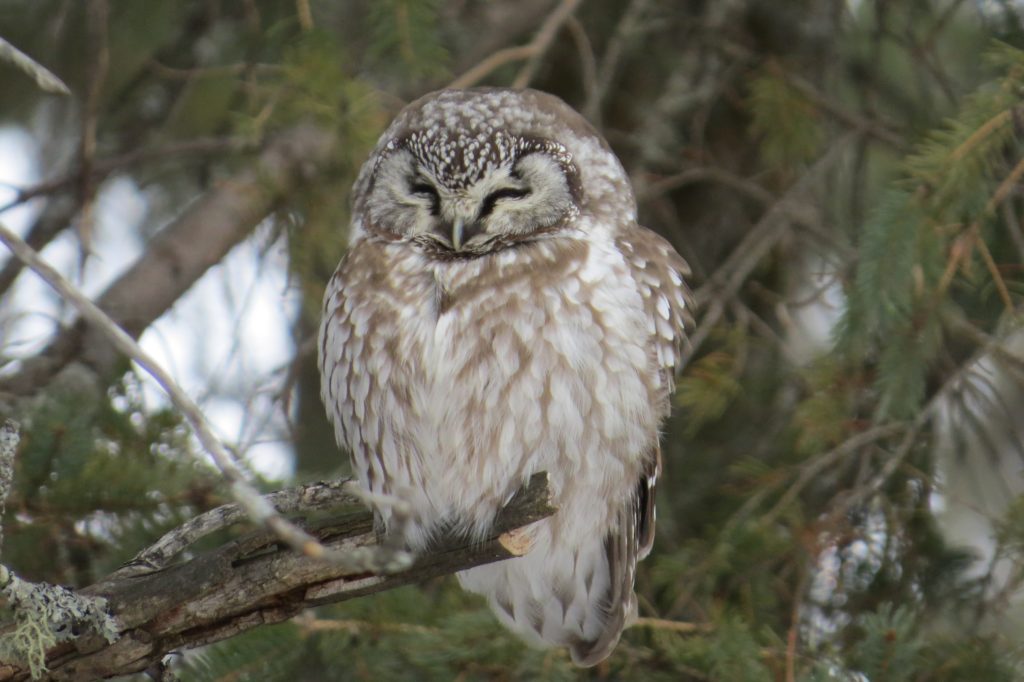 Some people, like myself, have trouble spotting these Owls. Thankfully, people like Evan can point them out.
Some people, like myself, have trouble spotting these Owls. Thankfully, people like Evan can point them out.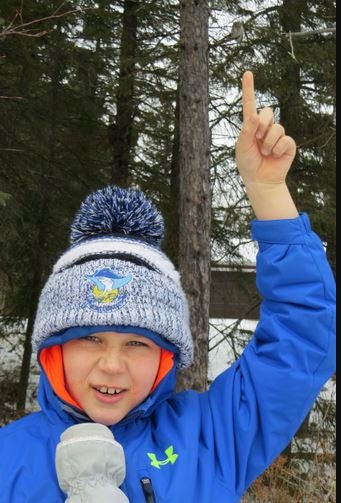
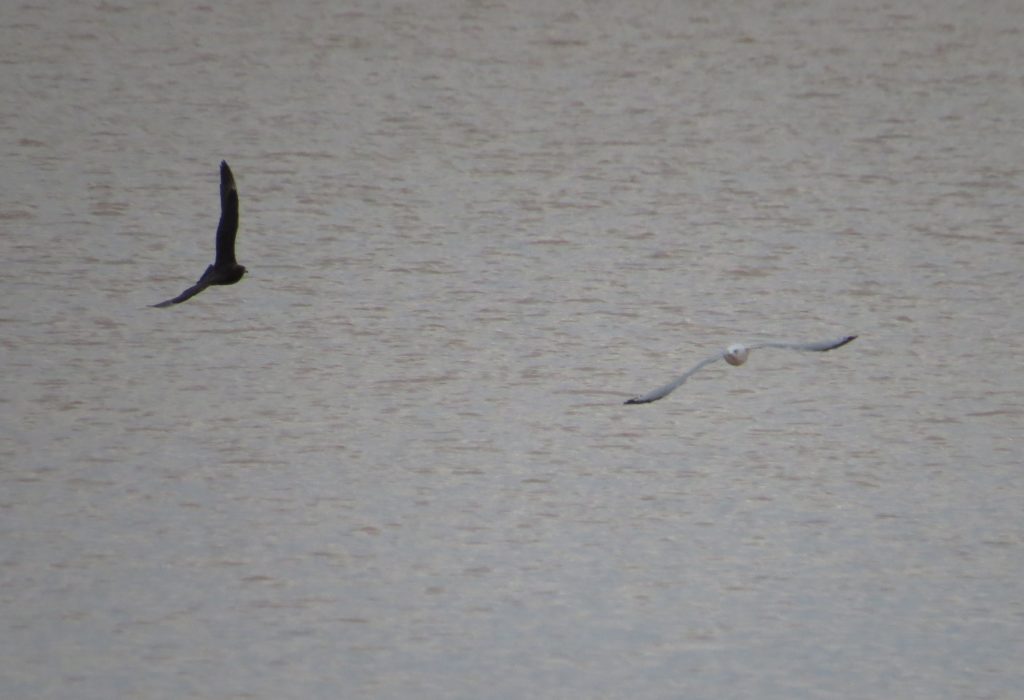
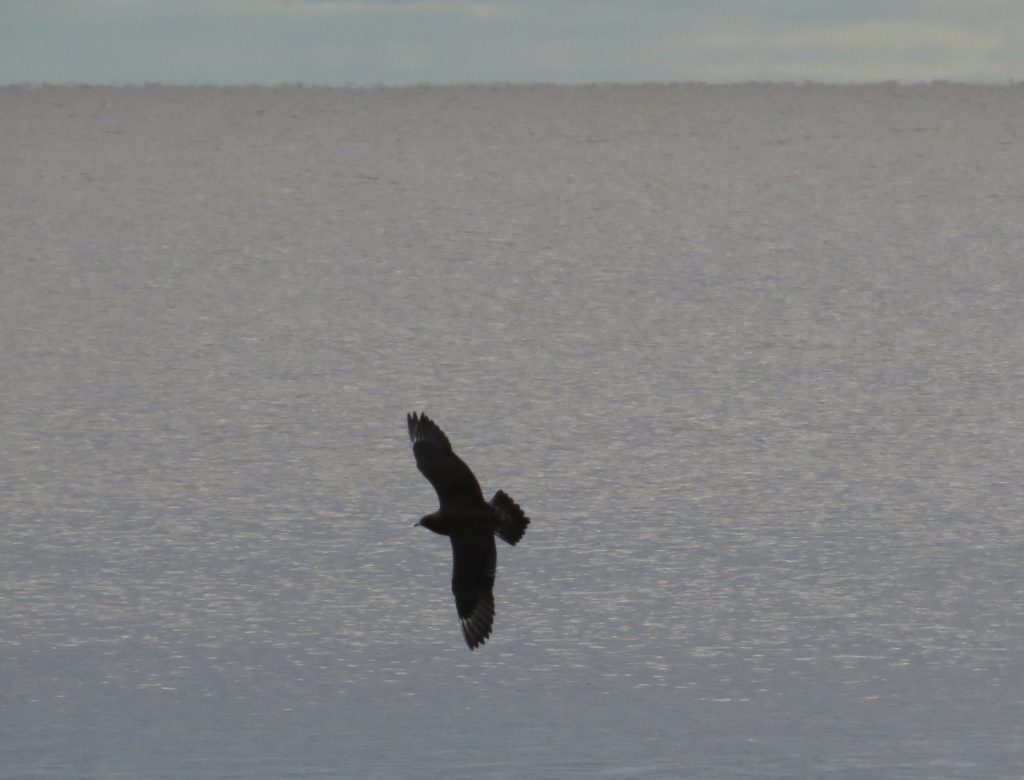
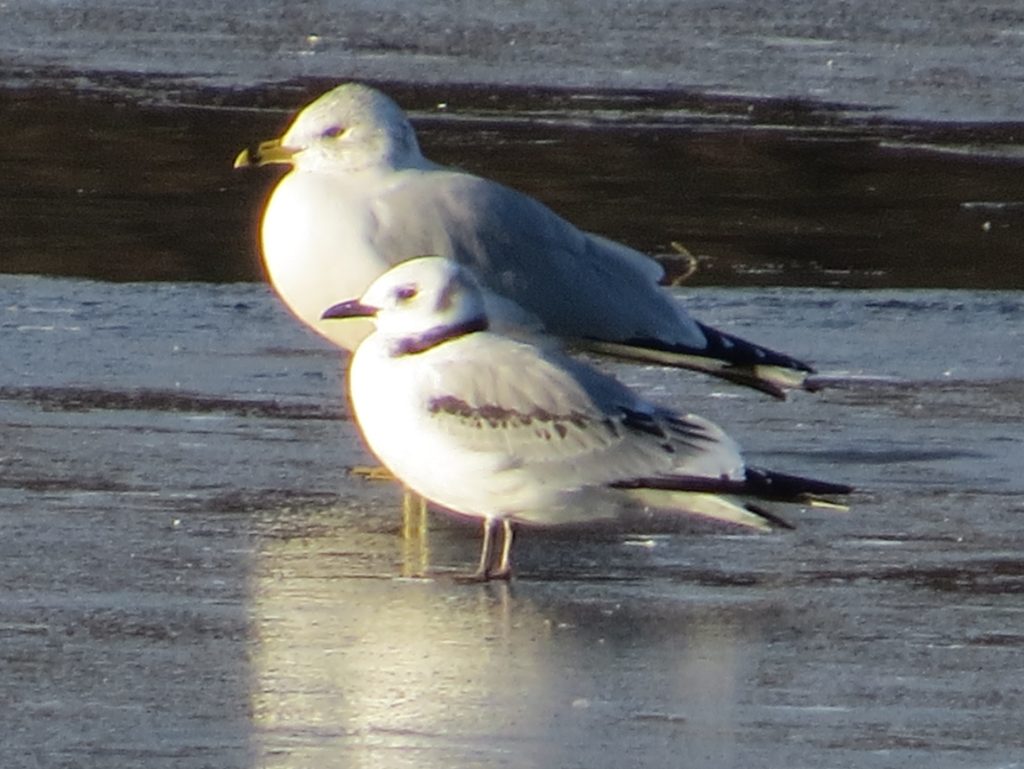
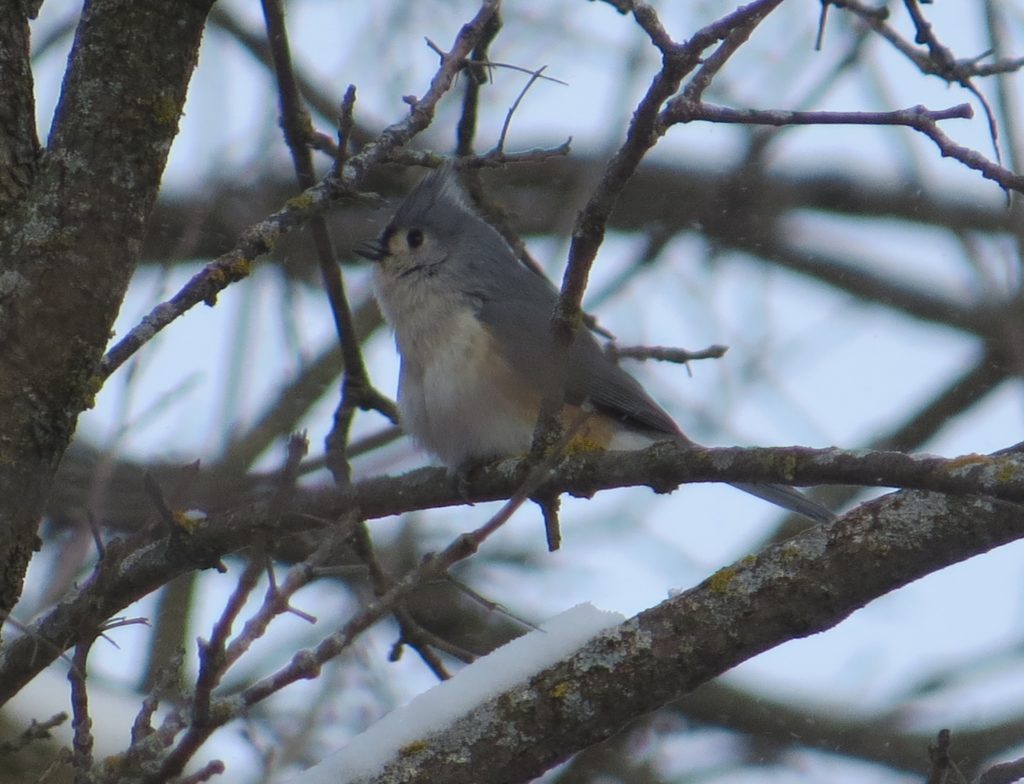
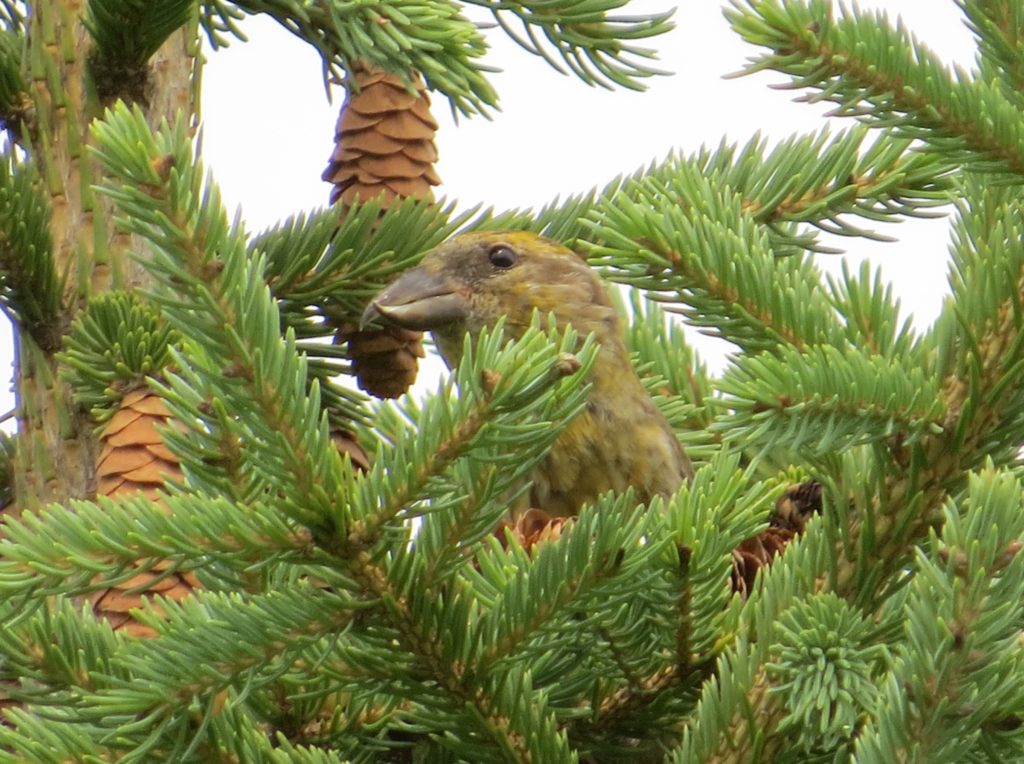 The Red Crossbill irruption was/is nothing short of incredible. This was my first sighting of many just within our county alone. I had several personal finds of this species in the following months, including finding a flock while driving highway speeds and a flyover flock while walking out to my mailbox!
The Red Crossbill irruption was/is nothing short of incredible. This was my first sighting of many just within our county alone. I had several personal finds of this species in the following months, including finding a flock while driving highway speeds and a flyover flock while walking out to my mailbox!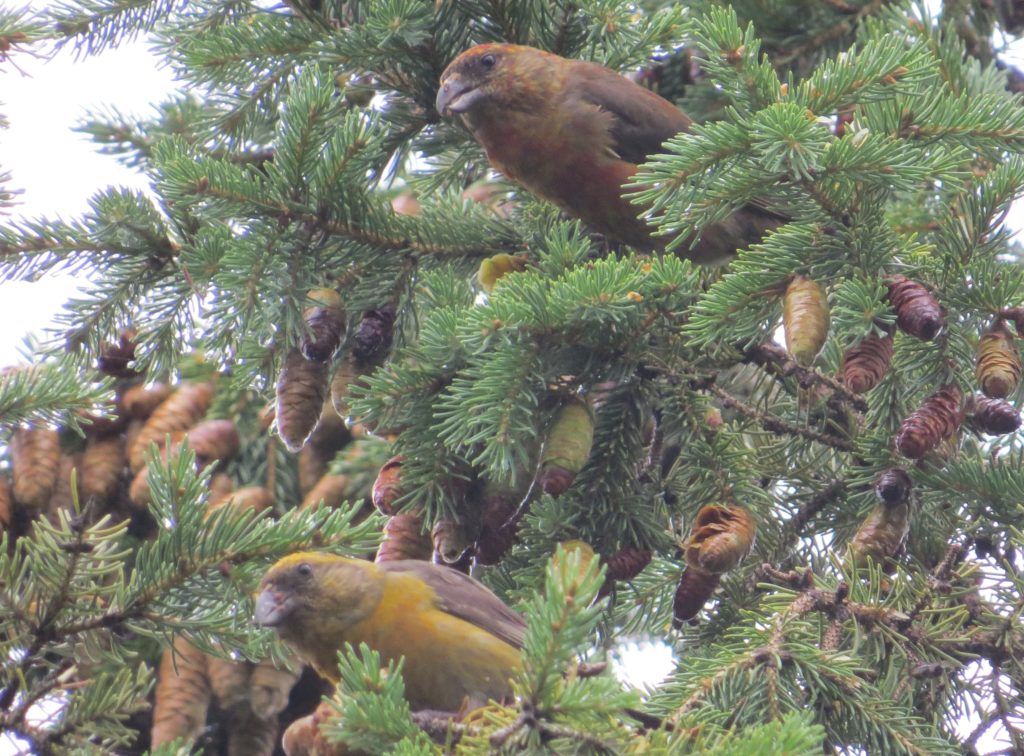 This next picture shows a Red Crossbill that I was disappointed to find this past October. I was actually looking for the other regular Minnesota Crossbill species which was also showing signs of irrupting. Birding can be strange. Somehow I ended up with the much more difficult Crossbill species before getting the supposedly much easier White-winged variety. I was the only serious Kandi birder who still lacked this species. I desperately wanted to see wing bars on this bird.
This next picture shows a Red Crossbill that I was disappointed to find this past October. I was actually looking for the other regular Minnesota Crossbill species which was also showing signs of irrupting. Birding can be strange. Somehow I ended up with the much more difficult Crossbill species before getting the supposedly much easier White-winged variety. I was the only serious Kandi birder who still lacked this species. I desperately wanted to see wing bars on this bird.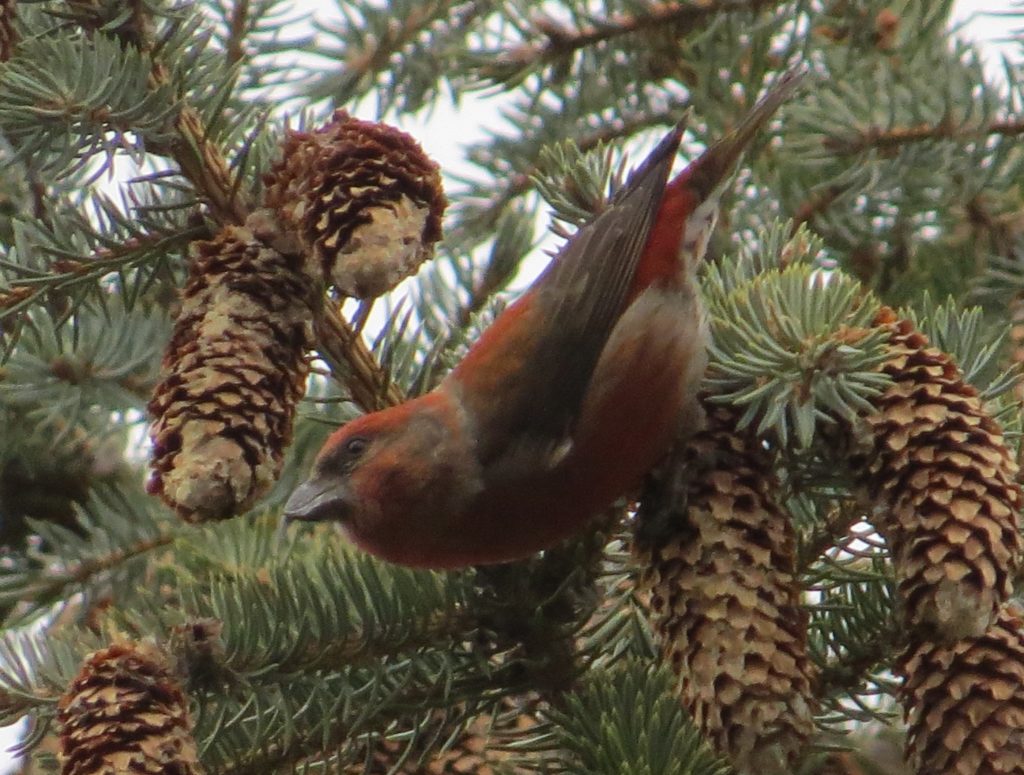
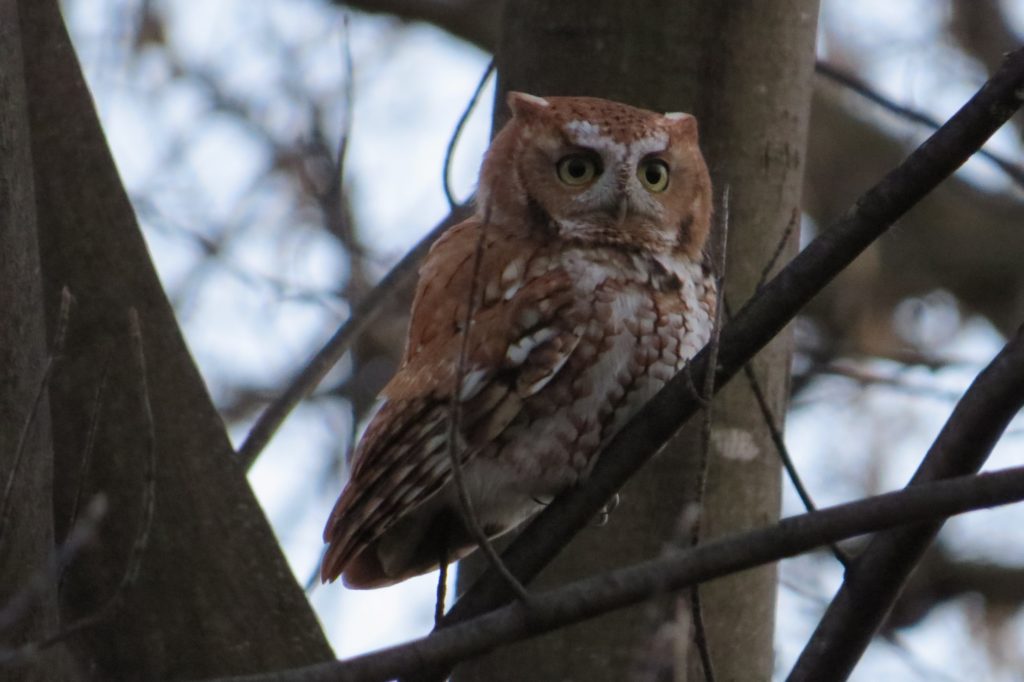
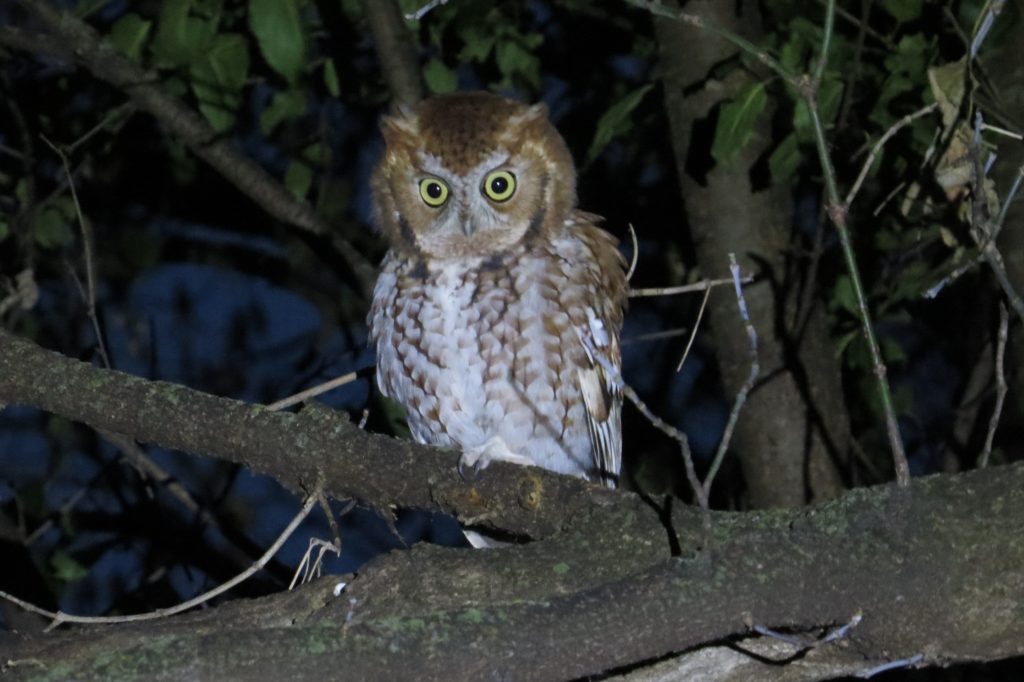
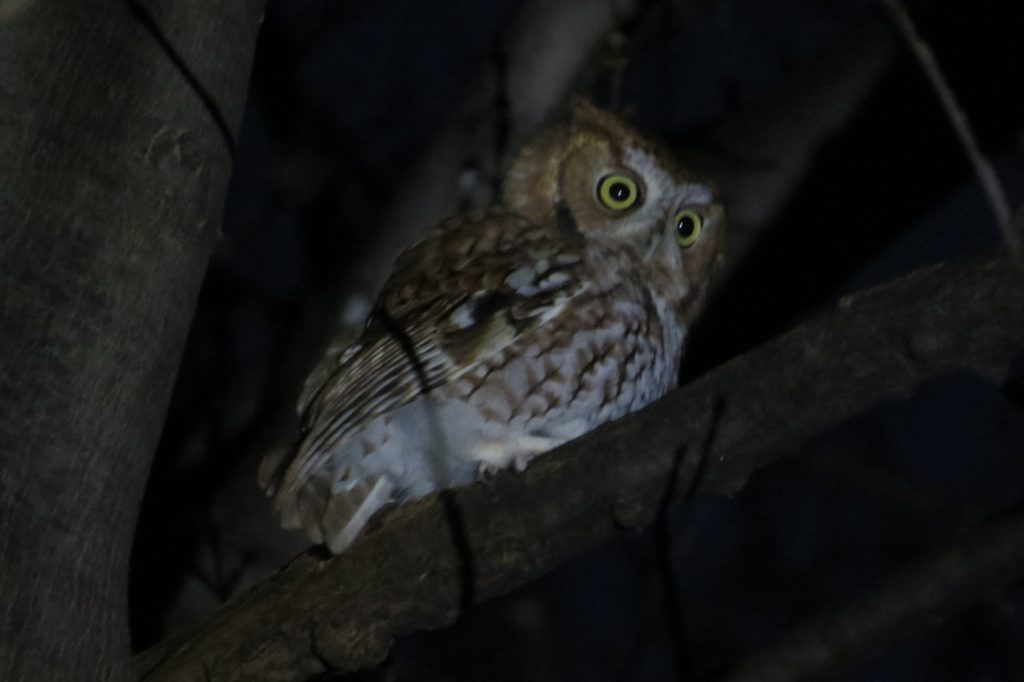
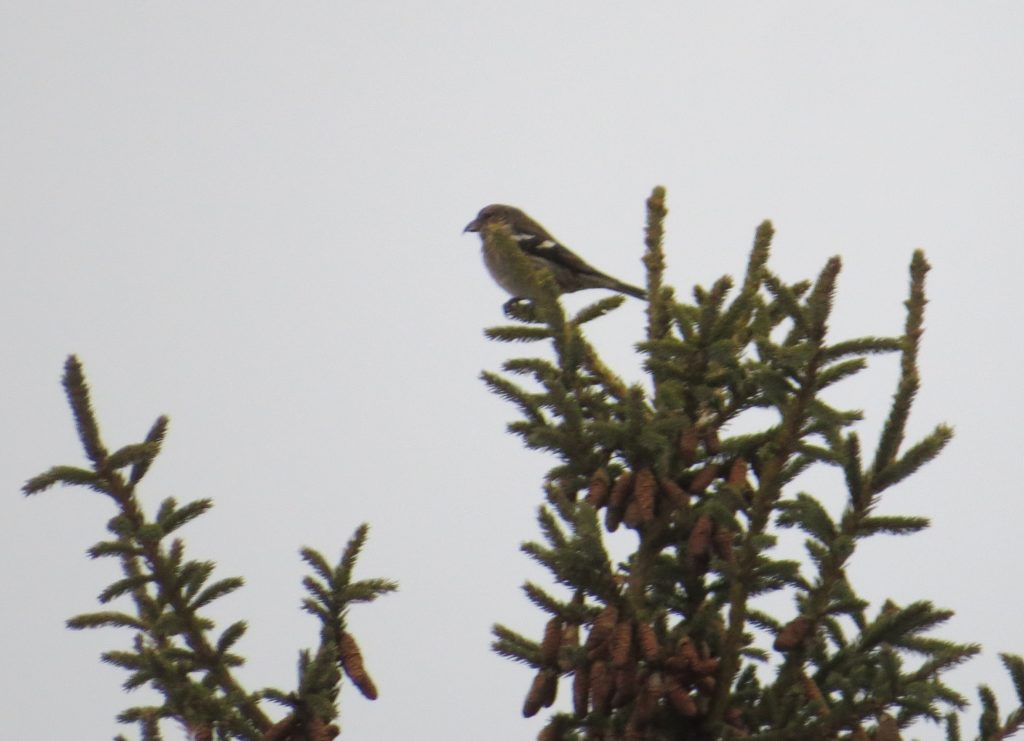 Getting this DIY county lifer was incredibly efficient and felt amazing. I enjoyed these birds for about a half hour before heading home. It was one less bird for which I was on my own.
Getting this DIY county lifer was incredibly efficient and felt amazing. I enjoyed these birds for about a half hour before heading home. It was one less bird for which I was on my own.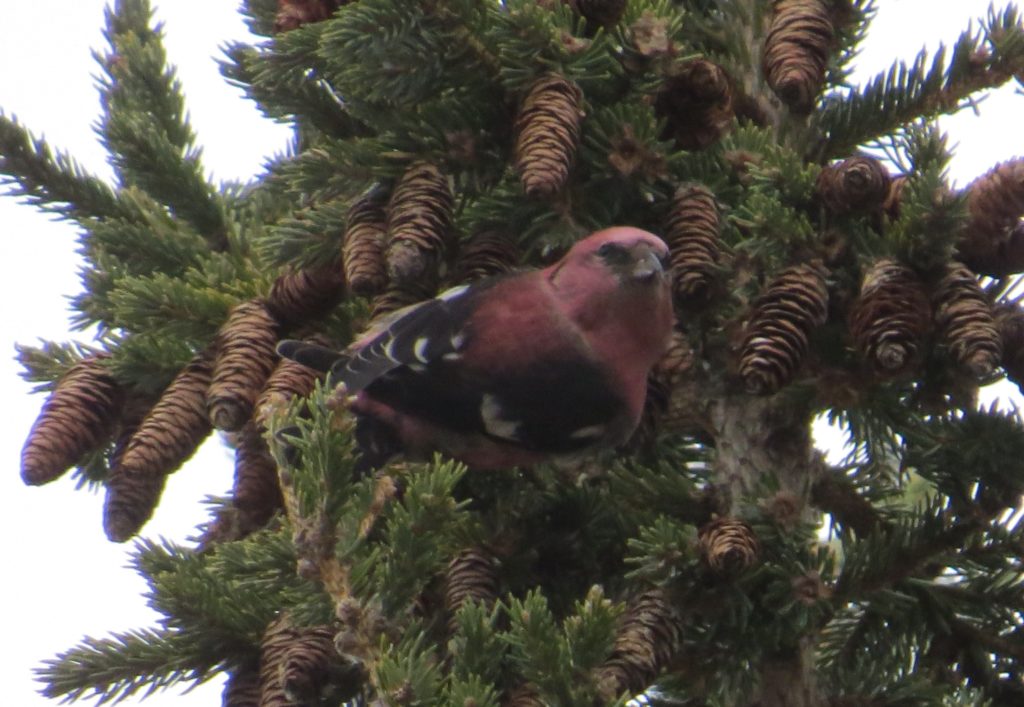
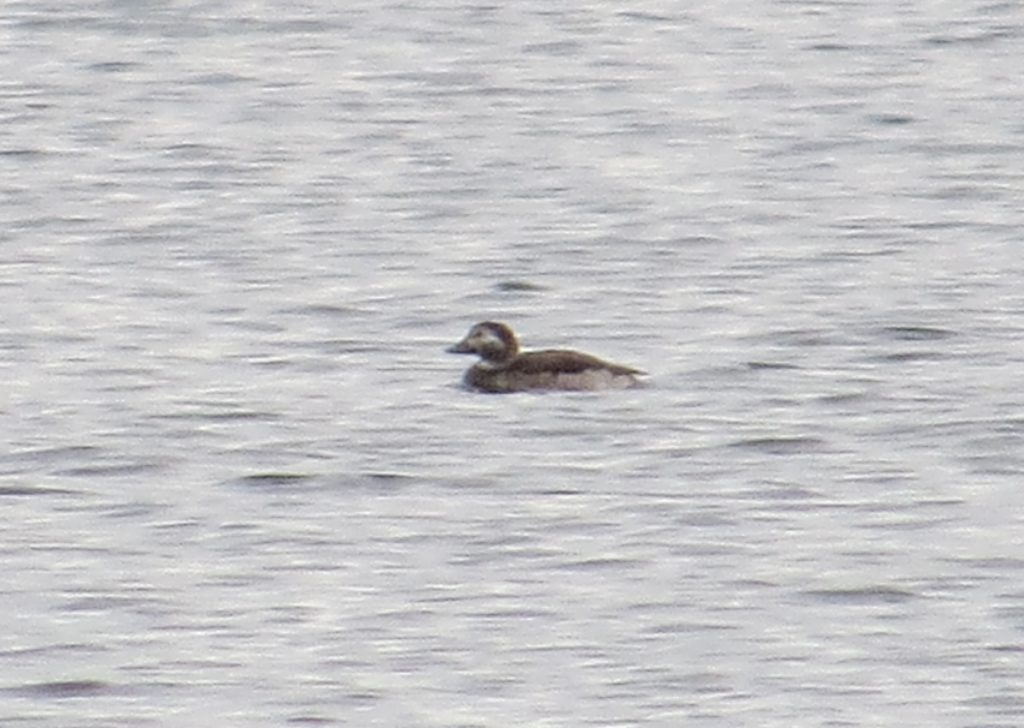
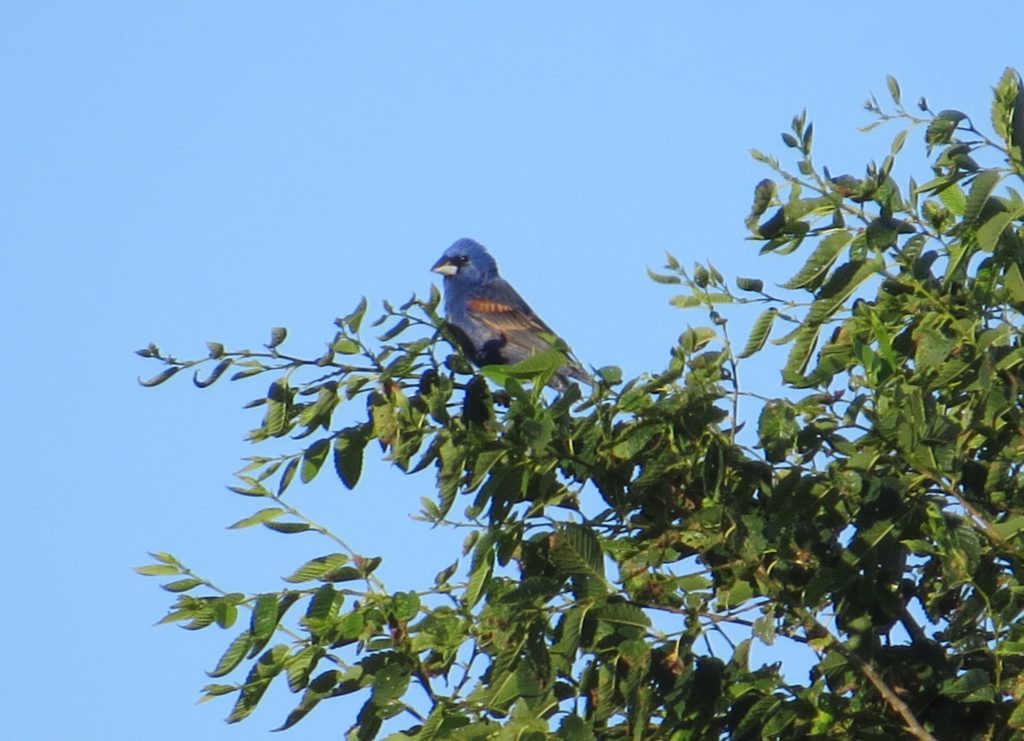 This second fellow was the quiet type. In fact, I stopped at this abandoned pit and didn’t see or hear a Blue Grosbeak. Playing a tape certainly couldn’t hurt in this situation. I’m glad I did because this bird materialized out of nowhere in an instant.
This second fellow was the quiet type. In fact, I stopped at this abandoned pit and didn’t see or hear a Blue Grosbeak. Playing a tape certainly couldn’t hurt in this situation. I’m glad I did because this bird materialized out of nowhere in an instant.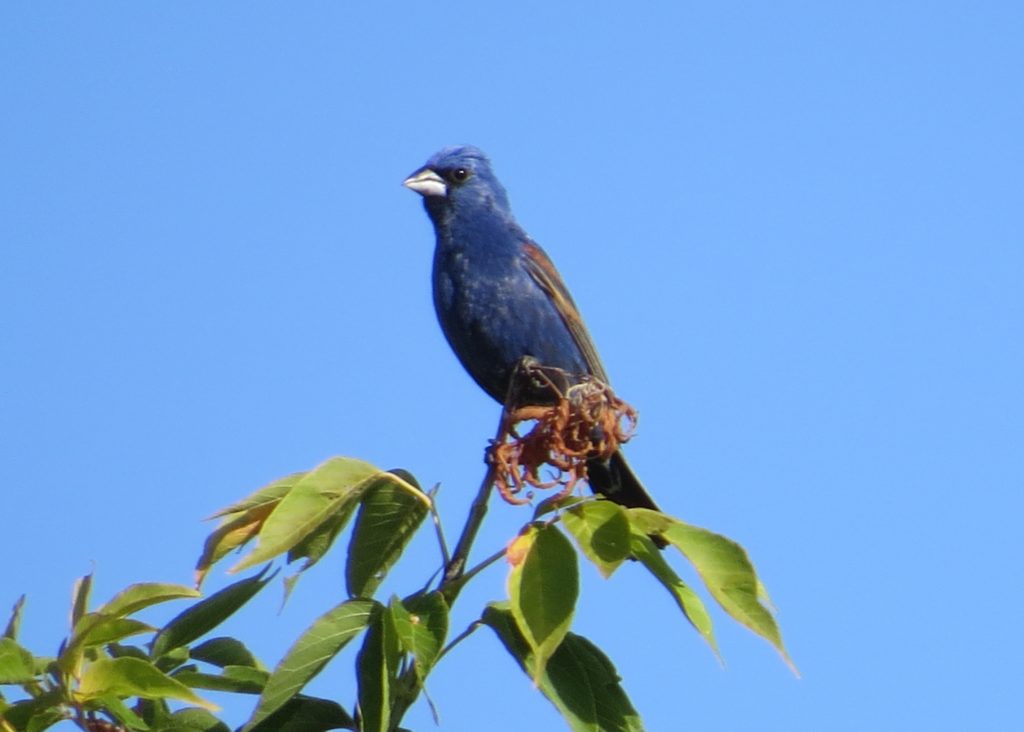 These were hollow victories. I wanted one in Kandiyohi in the worst way, especially as county first records fell in county after county: Anoka, Hennepin, and Washington. While I was happy the Blue Grosbeak was continuing to expand its range, I also kept wondering when it would be our turn. Always the bridesmaid. The Washington find really amplified these feelings. Pete Nichols and Ben Douglas set out to find themselves a county record BLGR and succeeded…minutes into their first attempt. I was both super proud and super jealous of these friends.
These were hollow victories. I wanted one in Kandiyohi in the worst way, especially as county first records fell in county after county: Anoka, Hennepin, and Washington. While I was happy the Blue Grosbeak was continuing to expand its range, I also kept wondering when it would be our turn. Always the bridesmaid. The Washington find really amplified these feelings. Pete Nichols and Ben Douglas set out to find themselves a county record BLGR and succeeded…minutes into their first attempt. I was both super proud and super jealous of these friends.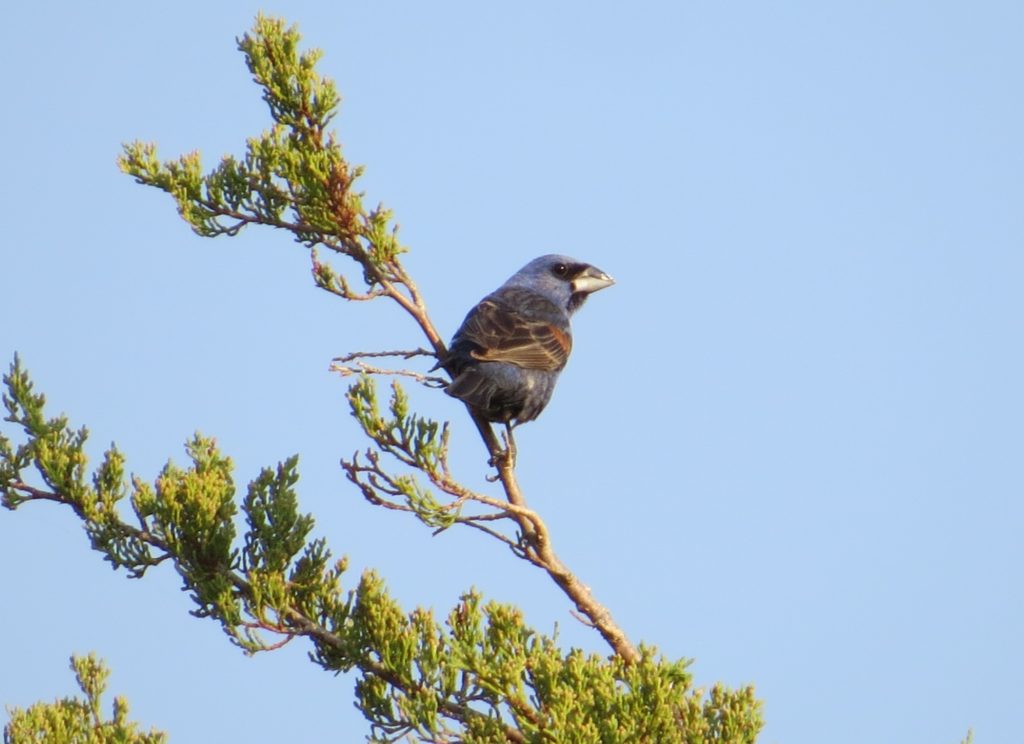
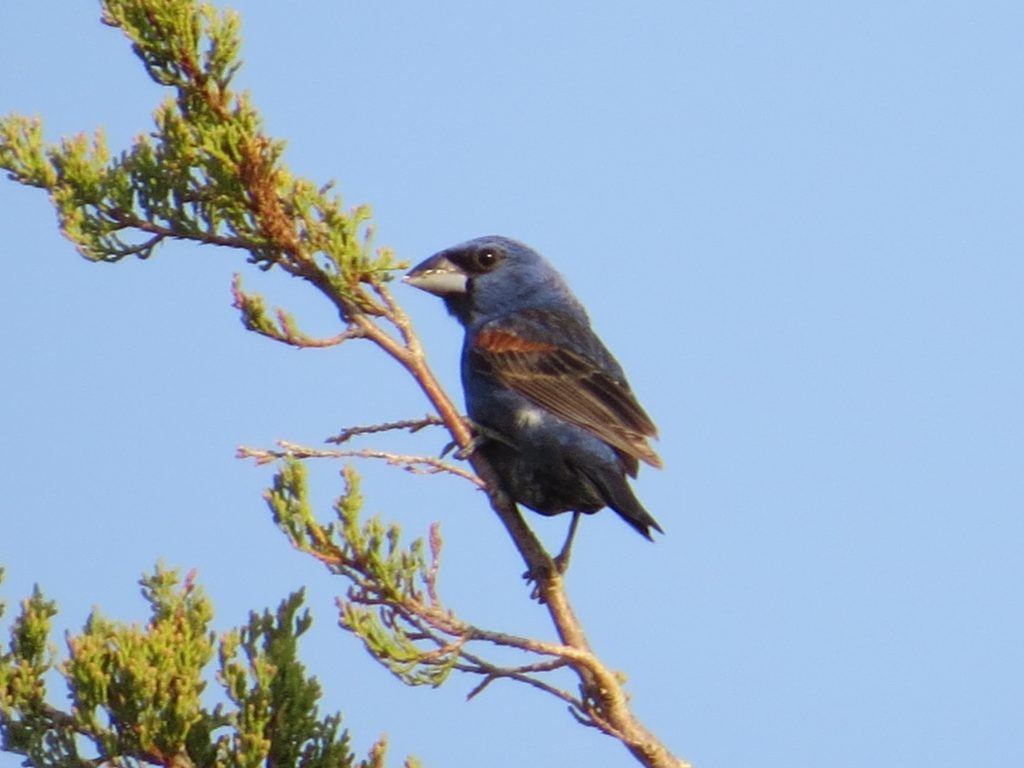 After hanging out there to our wild delight, it changed perches and hung out for a solid 10-15 minutes not moving. I don’t know that I’ve ever seen a Blue Grosbeak this confiding. This was the first time I had shared a county bird with long-time Kandi veterans, Randy and Ron. Giddiness abounded.
After hanging out there to our wild delight, it changed perches and hung out for a solid 10-15 minutes not moving. I don’t know that I’ve ever seen a Blue Grosbeak this confiding. This was the first time I had shared a county bird with long-time Kandi veterans, Randy and Ron. Giddiness abounded.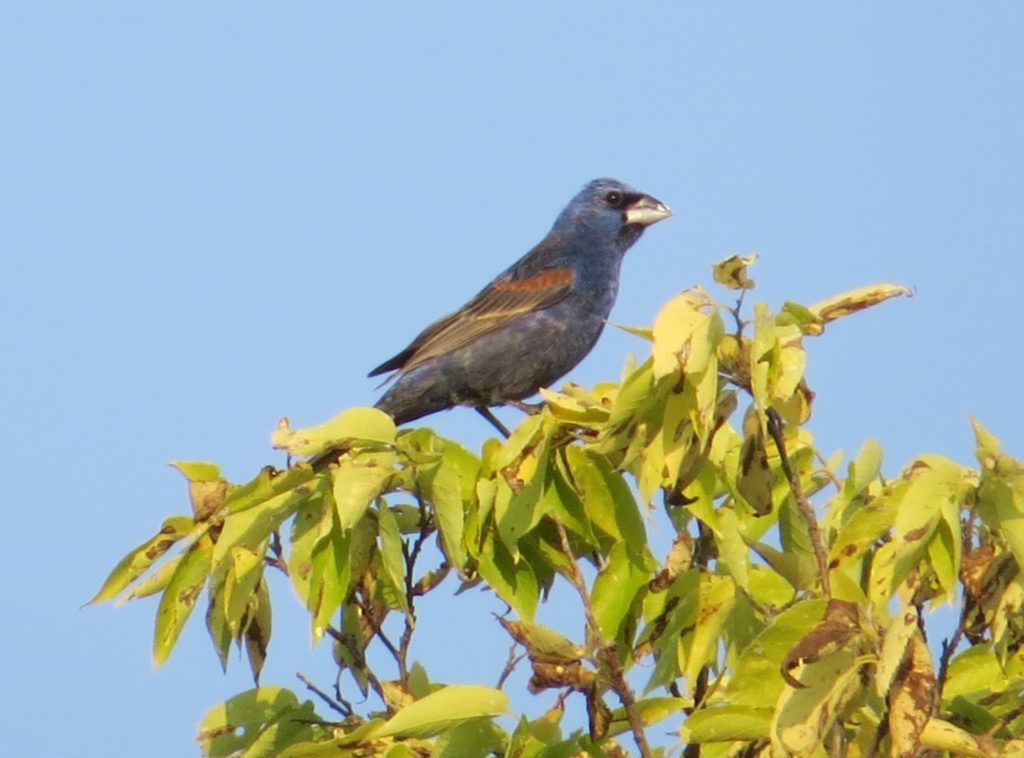
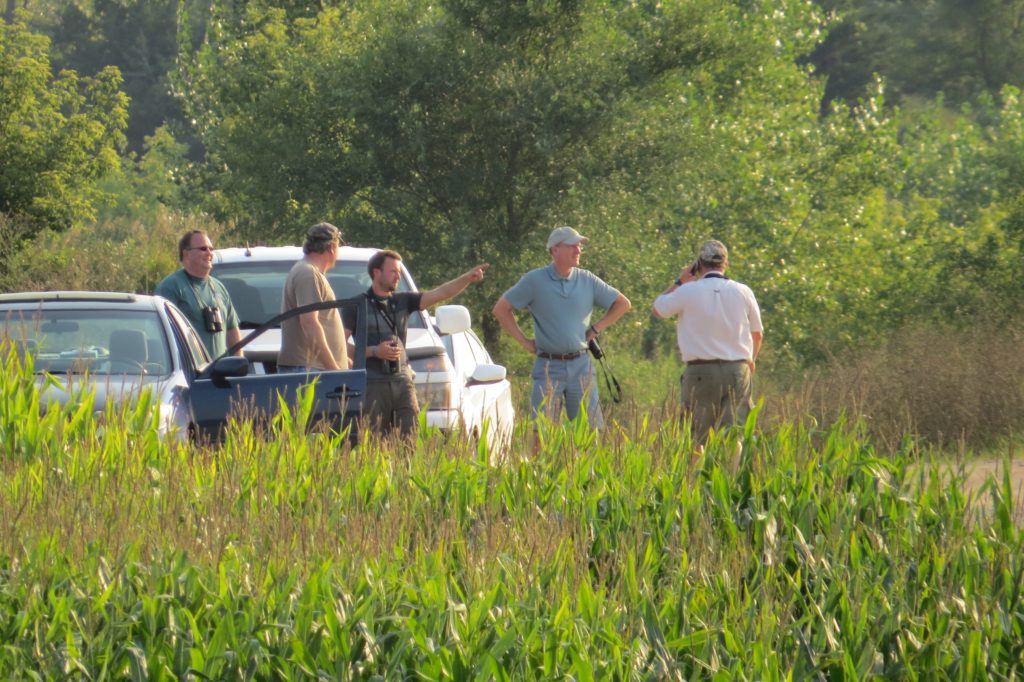
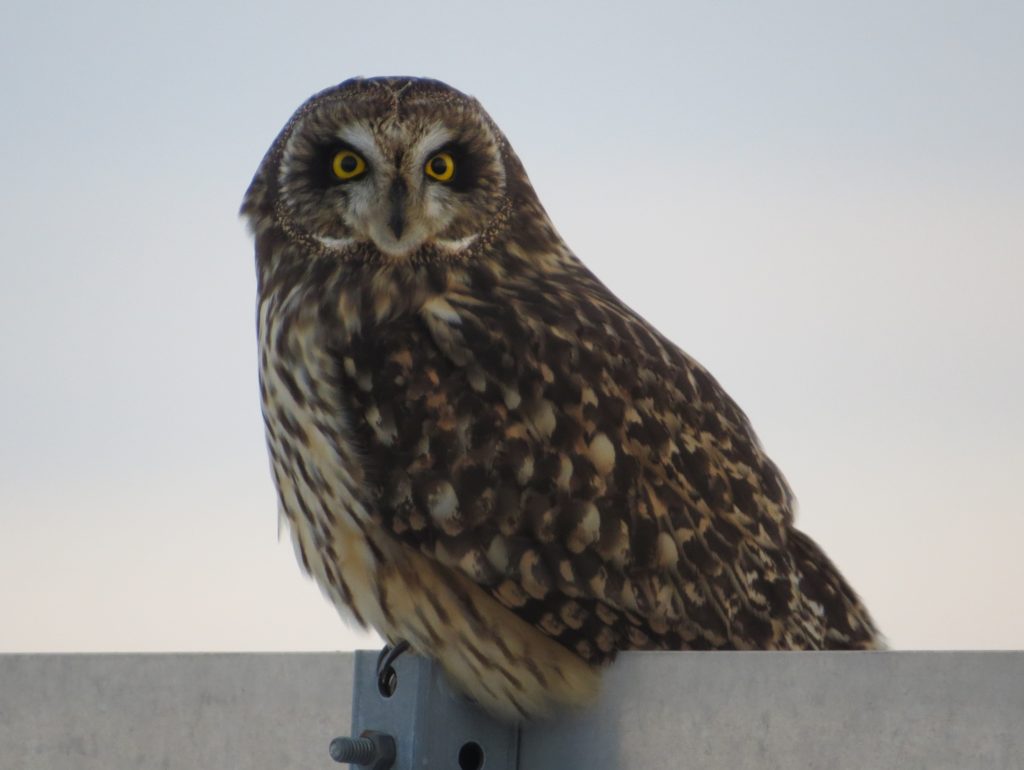
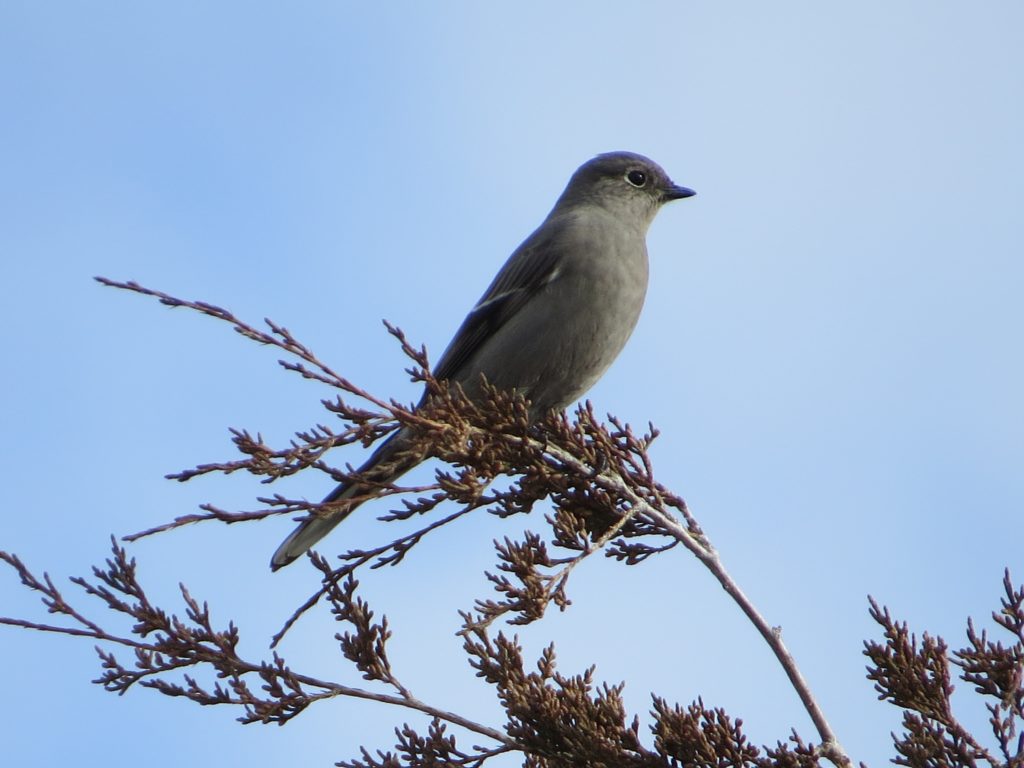
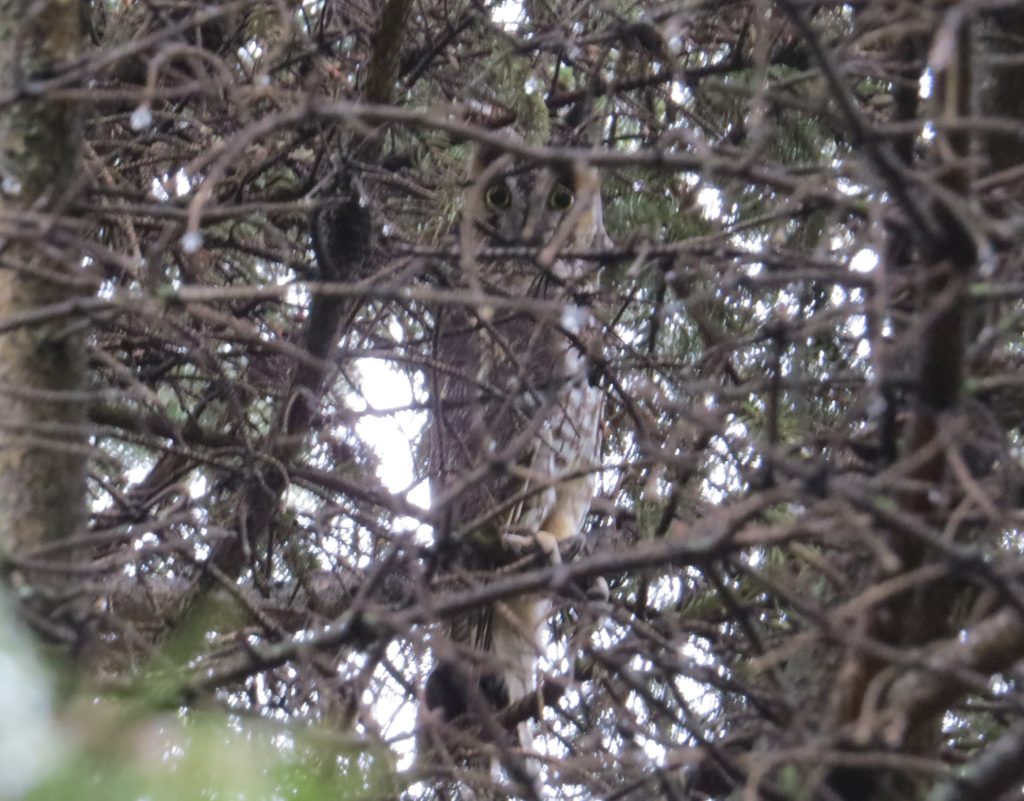
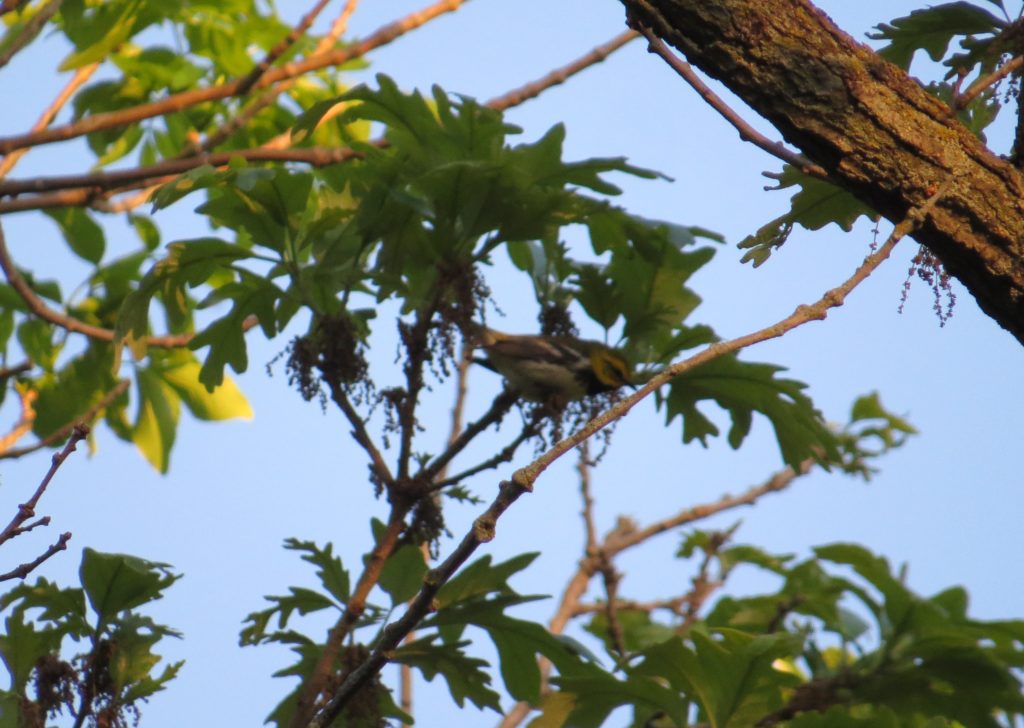
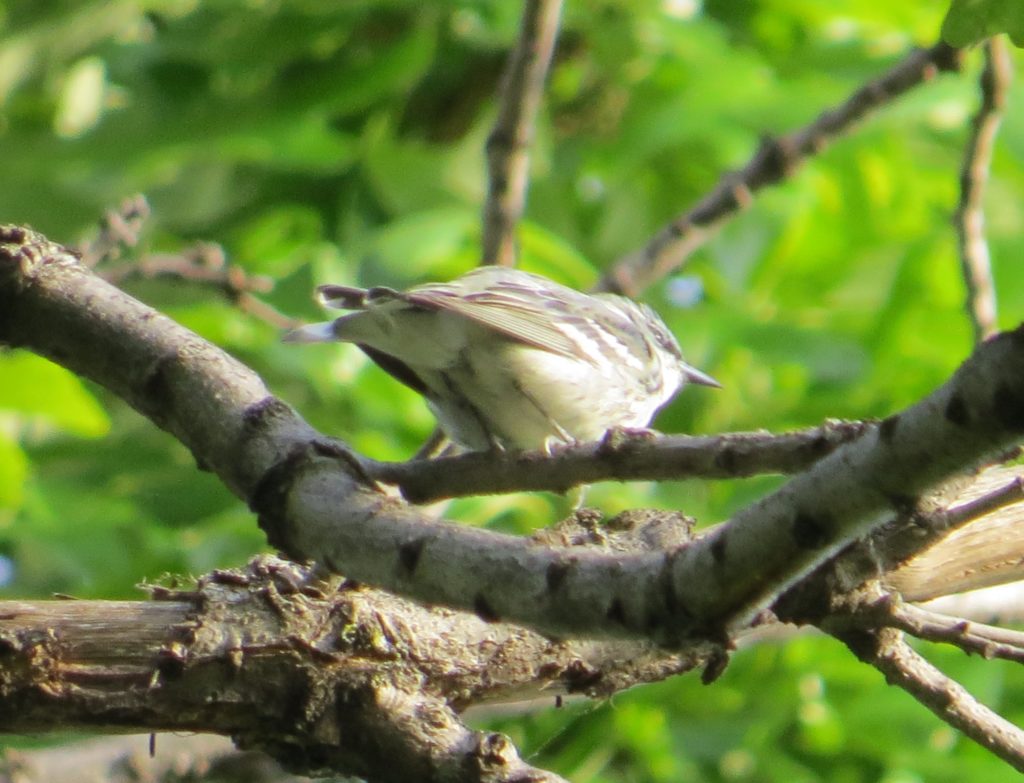
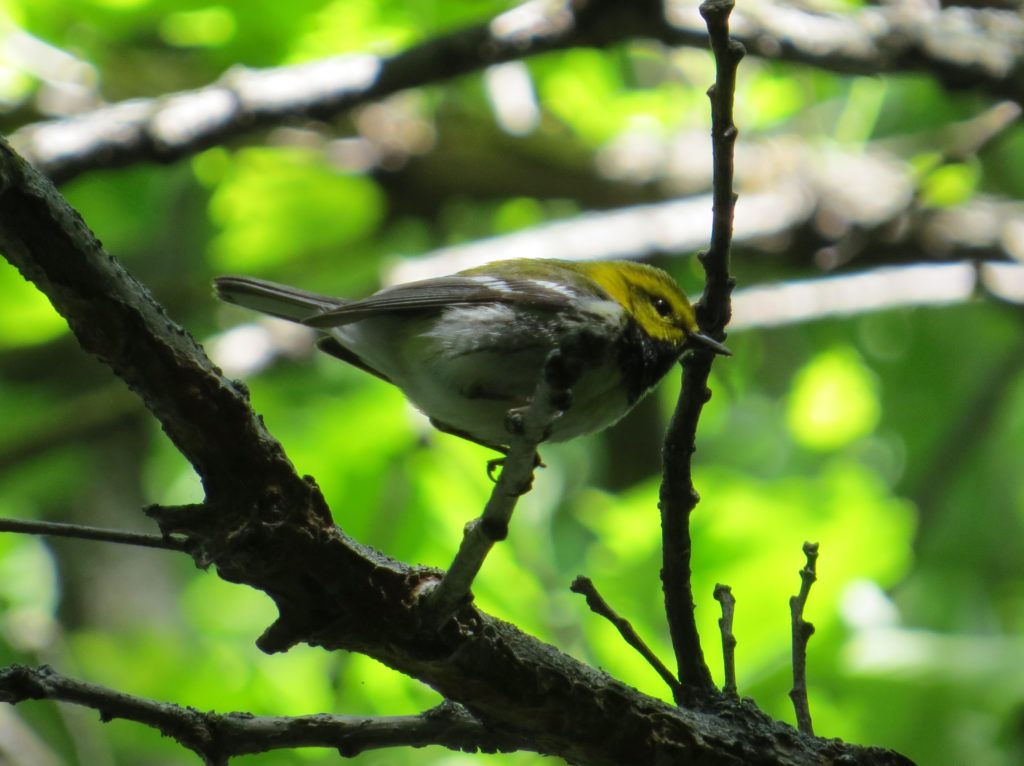
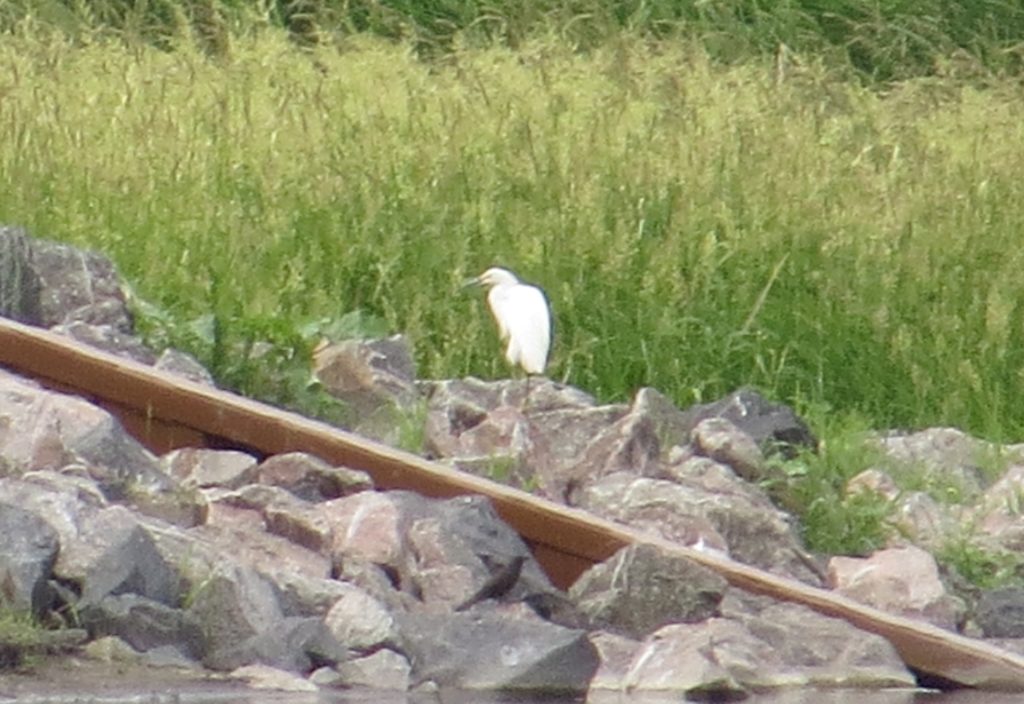 An Egret vs. Egret pic is always a nice assurance for an ID of such an important bird.
An Egret vs. Egret pic is always a nice assurance for an ID of such an important bird.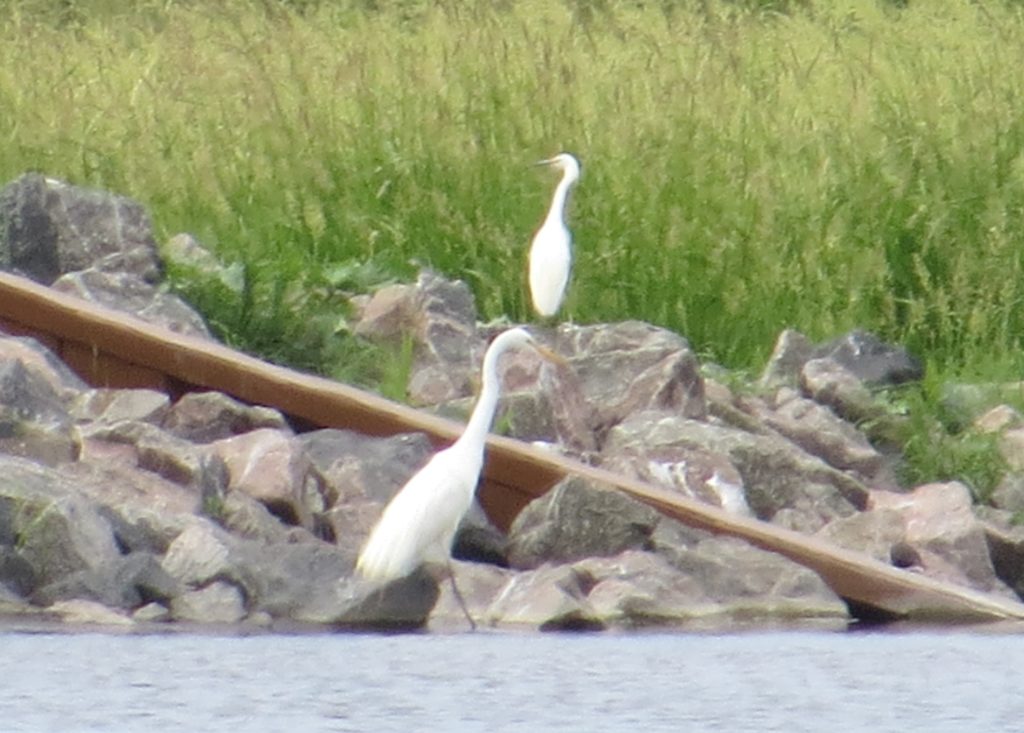 I was now tied with Bob. Wow. Some people get excited over reaching round-number milestones, like this 250, but not me. I wanted a crooked number. I wanted that #251 in the worst way. While my motivation in the beginning was to pass Bob’s number, my motivation was now about me meeting what I once thought was an unattainable goal. More than anything I wanted to do what my mind had declared an impossibility or at least a far-fetched possibility way back in December. I wanted that 7th bird in the worst way, more than a lifer even. And it was only June. I had averaged one new county bird for each month in 2017, and I still had 6 months left to get just one new county bird.
I was now tied with Bob. Wow. Some people get excited over reaching round-number milestones, like this 250, but not me. I wanted a crooked number. I wanted that #251 in the worst way. While my motivation in the beginning was to pass Bob’s number, my motivation was now about me meeting what I once thought was an unattainable goal. More than anything I wanted to do what my mind had declared an impossibility or at least a far-fetched possibility way back in December. I wanted that 7th bird in the worst way, more than a lifer even. And it was only June. I had averaged one new county bird for each month in 2017, and I still had 6 months left to get just one new county bird.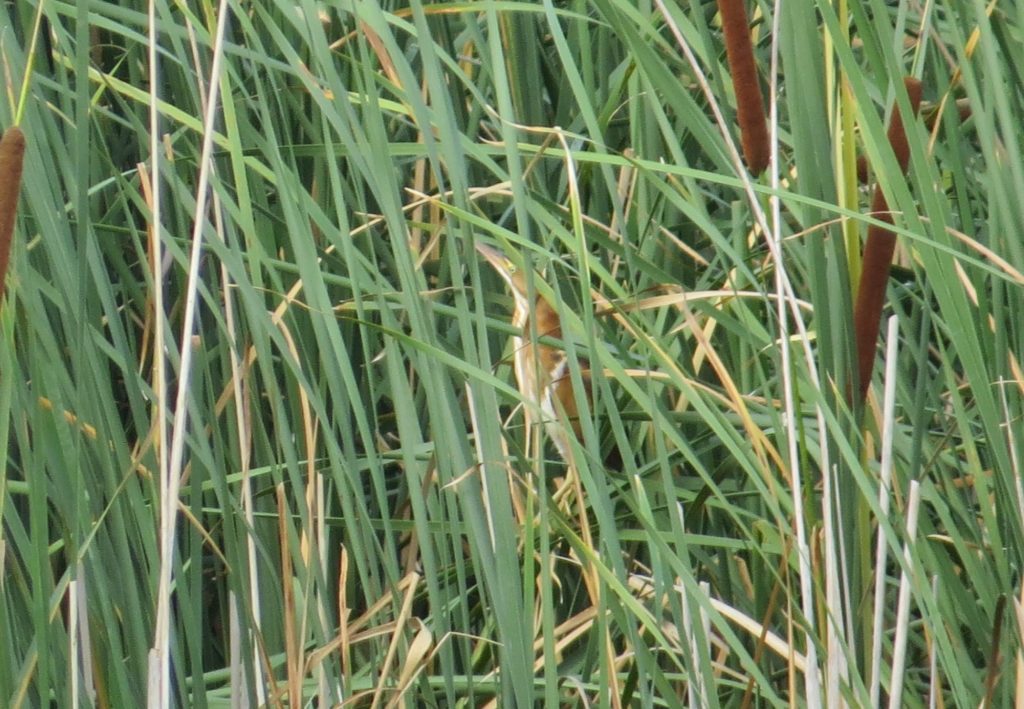
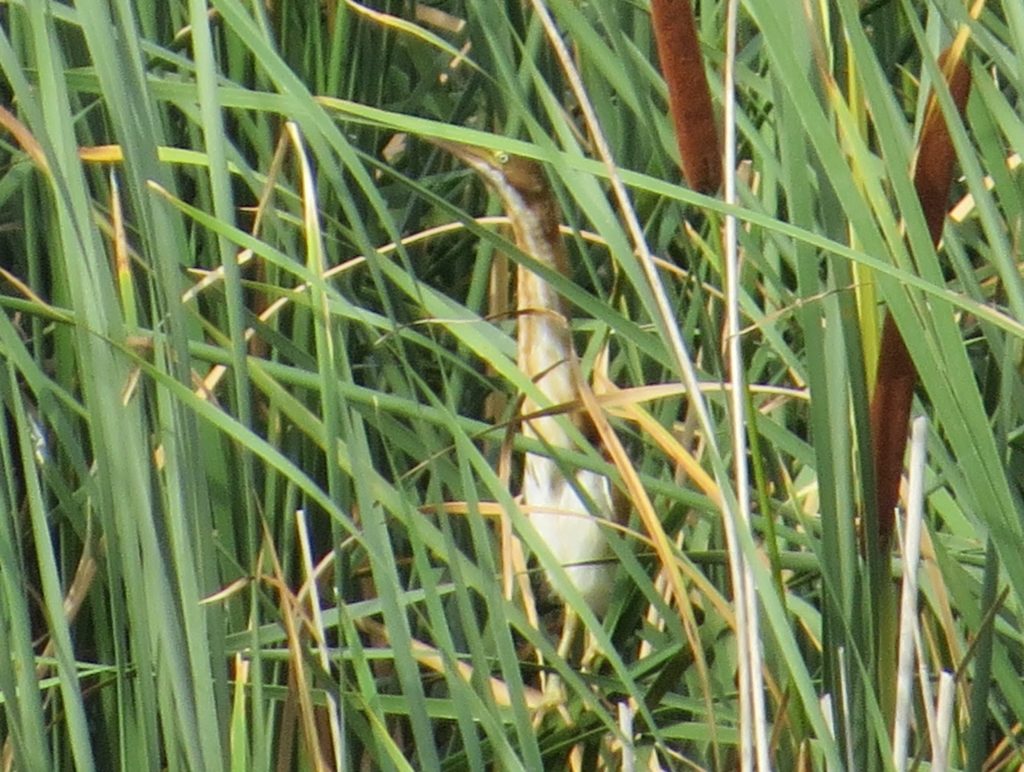 The Bittern was a fun find, but I wanted to see those Gallinules bad. I did hear one of the adults vocalize at one point, so it was officially notched. Since it was such a monumental bird, though, I really wanted to see it. Finally, patience paid off as I spotted one of the babies.
The Bittern was a fun find, but I wanted to see those Gallinules bad. I did hear one of the adults vocalize at one point, so it was officially notched. Since it was such a monumental bird, though, I really wanted to see it. Finally, patience paid off as I spotted one of the babies.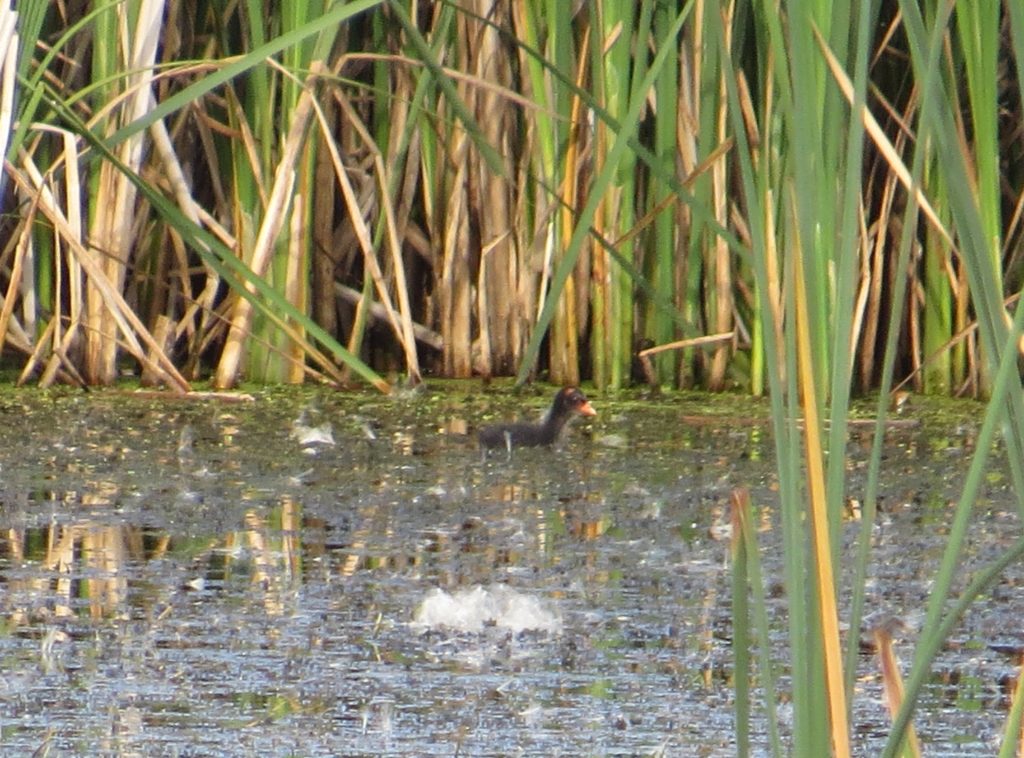 And then I saw two of the babies with one of the parents.
And then I saw two of the babies with one of the parents.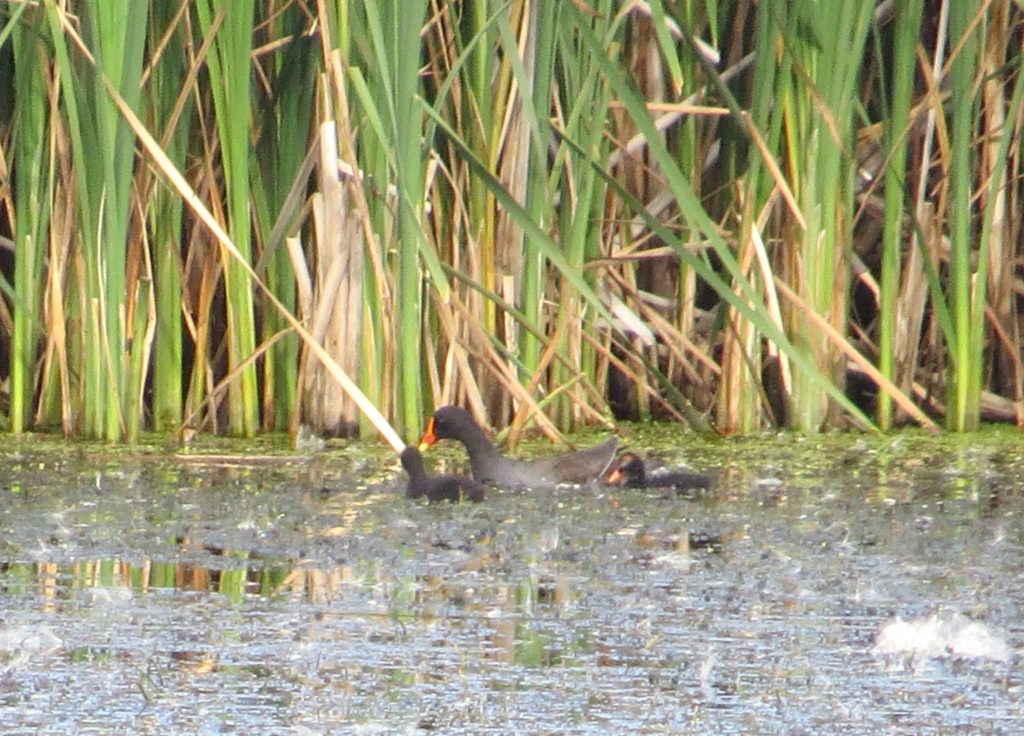 It was finished. I was ecstatic. The impossible had been achieved with a whopping 5 months left on the year. I had made it. Kathleen, if you’re reading, thank you very much for your great find!
It was finished. I was ecstatic. The impossible had been achieved with a whopping 5 months left on the year. I had made it. Kathleen, if you’re reading, thank you very much for your great find!